
- Remember me Not recommended on shared computers
Forgot your password?
- WRX Club Techs

7 Iron trackman numbers - which is best fit?

By bigdriveandy January 3, 2023 in WRX Club Techs
- Reply to this topic
- Start new topic
Recommended Posts
Bigdriveandy.
Hey all. Recently put several sets up against one another in an effort to understand which one is best fit for me, and also what types of things I might want to look for to optimize my iron performance. Particularly of concern to me is my spin is a bit low and my land angles are less steep than ideal. Any recommendations of what to try are appreciated. Here are the irons I tested.
1. PXG 0311 T Gen 4 with KBS Tour Stiff. +1 inch over std, 1 deg. upright. Std loft. Hardstepped 1x. Midsize Lamkin Z5 grip. Swingweight is d3.
2. Ping iBlade with Dynamic Gold AMT White Tour Issue S400. +1 inch over std., green dot. Std loft. Midsize MCC +4 grip. Swingweight d4.
3. Callaway Apex Pro 19 with Project X Catalyst 100 6.0. +1 inch over std, std. lie/loft. Midsize MCC +4 grip. Swingweight d1.
4. New Level 902-PD with Dynamic Gold S300. +0.75 over std, 2 deg upright, 1 deg. weak. Midsize Tour velvet grip. Swingweight d4.
5. Takomo 101T with KBS Tour Stiff. +1 inch over std, 2 deg. upright. Std. loft. Midsize Lamkin Crossline grip. Swingweight ??
Here are the pictures of the dispersion pattern for each iron.

PING G410 Plus 10.5º w/ Graphite Design Tour AD IZ- 6 S
PING G400 Max 14.5º w/ Fujikura Atmos Tour Spec Red 7S
PING i25 18º w/ PWR 75 S
Srixon ZX Utility 4i w/ UST Mamiya Recoil 95 F4
Callaway Apex/Apex Pro Combo 19 5-PW w/ Project X LZ 6.0
Titleist Vokey SM8 50.08 F, 54.10 S, 58.08 M w/ Dynamic Gold Spinner
TaylorMade Spider X
Link to comment
Share on other sites.
- Created 1 yr
- Last Reply 1 yr
Top Posters In This Topic

Popular Days
gdb99 1 post
bigdriveandy 1 post
grochol17 1 post
Howard_Jones 1 post
Popular Posts
Howard_jones.
January 4, 2023
You are NOT far off.. The issue here is INDOOR from a mat, and then we should have a conversion factor for the actual mat. For the mat i was using, i used a offset factor of 1.0* on launch (higher
Takomo. Best north south dispersion, numbers are all good.
I see in the photos that the numbers are in italics, so it looks like Trackman wasn't picking up the spin very well, but assuming those values are close, it looks to me like your spin rates seem awful
Posted Images
Best north south dispersion, numbers are all good.

I see in the photos that the numbers are in italics, so it looks like Trackman wasn't picking up the spin very well, but assuming those values are close, it looks to me like your spin rates seem awfully low and your landing angles are a little low for those spin rates.
The Trackman averages from PGA tour players from a few years ago ( https://blog.trackmangolf.com/trackman-average-tour-stats/ ) shows that with a 6-iron tour players average 6,231 rpms and a 50* landing angle. With a 7-iron they get 7,097 rpms spin and 50* landing angle. I don't know the lofts of the average 6- and 7-iron on tour, but your irons were likely 7-irons or slightly strong 7-irons. Your highest spinning iron was the iBlade, which has the weakest loft of the five you tested, but it was still spinning about 1000 rpms less than the tour average for a 6-iron. On the extreme other end, the PXG gave you launch like a 7 iron, the spin of a 4 iron, and the landing angle of a fairway wood.
I'm not a fitter, so I could be way off about this, but it seems to me like the spin is low enough that you'd be on the verge of hitting low spin fliers with pretty much all of the irons you were testing. Like I mentioned at the beginning, the italicized numbers mean they aren't 100% accurate, so you'd probably want to get the spin rates checked out outdoors, or with RCT balls, or with a different launch monitor setup that can read the spin better.
Titleist TSR4, 7.25*, Aldila Rogue Black 95 MSI 70 S Titleist TS3, 14.25*, Speeder VC 8.2 Tour Spec X Titleist 818 H2 17*, Speeder VC 8.8 HB Tour Spec S Mizuno MP H5, 3 iron, C Taper Lite X Mizuno MP H5 (4&5), MP 5 (6-PW), DG X100 SSx1 Cleveland RTX6 54/12 (bent to 53*) Raw & 58/10 Black, DG Spinner Piretti Potenza 1.5 Ball - Titleist AVX Yellow
- Popular Post
1 hour ago, grochol17 said: I see in the photos that the numbers are in italics, so it looks like Trackman wasn't picking up the spin very well, but assuming those values are close, it looks to me like your spin rates seem awfully low and your landing angles are a little low for those spin rates. The Trackman averages from PGA tour players from a few years ago ( https://blog.trackmangolf.com/trackman-average-tour-stats/ ) shows that with a 6-iron tour players average 6,231 rpms and a 50* landing angle. With a 7-iron they get 7,097 rpms spin and 50* landing angle. I don't know the lofts of the average 6- and 7-iron on tour, but your irons were likely 7-irons or slightly strong 7-irons. Your highest spinning iron was the iBlade, which has the weakest loft of the five you tested, but it was still spinning about 1000 rpms less than the tour average for a 6-iron. On the extreme other end, the PXG gave you launch like a 7 iron, the spin of a 4 iron, and the landing angle of a fairway wood. I'm not a fitter, so I could be way off about this, but it seems to me like the spin is low enough that you'd be on the verge of hitting low spin fliers with pretty much all of the irons you were testing. Like I mentioned at the beginning, the italicized numbers mean they aren't 100% accurate, so you'd probably want to get the spin rates checked out outdoors, or with RCT balls, or with a different launch monitor setup that can read the spin better.
TAKOMO is the club with the best potential. it has the longest carry of all now, so it want hurts much to tweak lofts Weaker on those to improve launch and spin.

DO NOT SEND PMs WITH CLUB TECH QUESTIONS - USE THE PUBLIC FORUM.
Join the conversation
You can post now and register later. If you have an account, sign in now to post with your account.

× Pasted as rich text. Paste as plain text instead
Only 75 emoji are allowed.
× Your link has been automatically embedded. Display as a link instead
× Your previous content has been restored. Clear editor
× You cannot paste images directly. Upload or insert images from URL.
- Insert image from URL
- Submit Reply
Recently Browsing 0 members
- No registered users viewing this page.
2024 Masters - Discussion and Links to Photos
GolfWRX_Spotted posted a topic in Tour and Pre-Release Equipment , Wednesday at 01:01 AM

Rory McIlroy testing a new TaylorMade "PROTO" 4-iron – 2024 Valero Texas Open
atursky posted a topic in Tour and Pre-Release Equipment , April 3

2024 Valero Texas Open - Discussion and Links to Photos
GolfWRX_Spotted posted a topic in Tour and Pre-Release Equipment , April 1

2024 Texas Children's Houston Open - Discussion and links to Photos
GolfWRX_Spotted posted a topic in Tour and Pre-Release Equipment , March 25

2024 Valspar Championship WITB Photos (Thanks to bvmagic)- Discussion & Links to Photos
easyyy posted a topic in Tour and Pre-Release Equipment , March 20
Popular Now

By skim4 Started 2 hours ago

By justcuz Started 3 hours ago
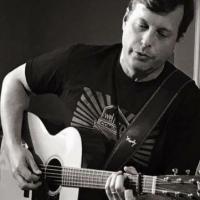
By me05501 Started 4 hours ago

By hammergolf Started 18 hours ago
By mizuno player Started 19 hours ago
Welcome. Register Here.
Come on in, the water is fine...
Recent B/S/T

mpf08796 · Started 14 minutes ago
Decibel · Started 18 minutes ago

Popeye64 · Started 32 minutes ago

youngunz5840 · Started 33 minutes ago

JourdanM · Started 1 hour ago

GolfWRX_Spotted · Started December 5, 2023
- Existing user? Sign In
The Bag Room
- Tour & Pre-Release Equipment
- Golf Sims/GPS/RFs/Apps
- Golf Style and Accessories
The Club House
- General Golf Talk
- Classic Golf And Golfers
- Courses, Memberships and Travel
- Groups, Tourneys, and Partners Matching
WRX Academy
- Instruction & Academy
- Rules of Golf and Etiquette
- Swing Videos and Comments
Classifieds & ProShops
- Deal/No Deal
Website Help
- Forum Support
- BST AD Help Forum
My Activity Streams
- BST/Deal Activity
- All Activity
- Unread - No BST/19th
- Subscriptions
Classifieds
- For Sale Forum
- Wanted to Buy
- Mall of Pro Shops
- Where Did My Ad Go?
- Trade In Tool
- Create New...

7 Iron Golf Club Info – How to Hit a 7 Iron
Last Updated on February 3, 2024 by Matt Greene
For most of us, the 7 iron is the club we reach for when we need a confident, comfortable swing.
But what are the lofts, launch angles, distances and lengths of 7 irons in the modern golf bag?
Does your 7 iron meet the standards?
I've crunched the numbers for you. The average male golfer hits his 7 iron a total distance of 138 yards.
Why do you hit your 7 iron longer or shorter than 138 yards? Let's get into the reasons why and how to increase your accuracy and distance with a 7 iron.
What is a 7 Iron?
A 7 iron is a mid-iron golf club with a loft between 29-33 degrees. The 7 iron remains one of the easiest club to hit, and is the first club used in fittings and lessons with professionals to assess your swing.
The 7 iron's moderate length and medium loft makes it easy to hit airborne with decent distance for most golfers.
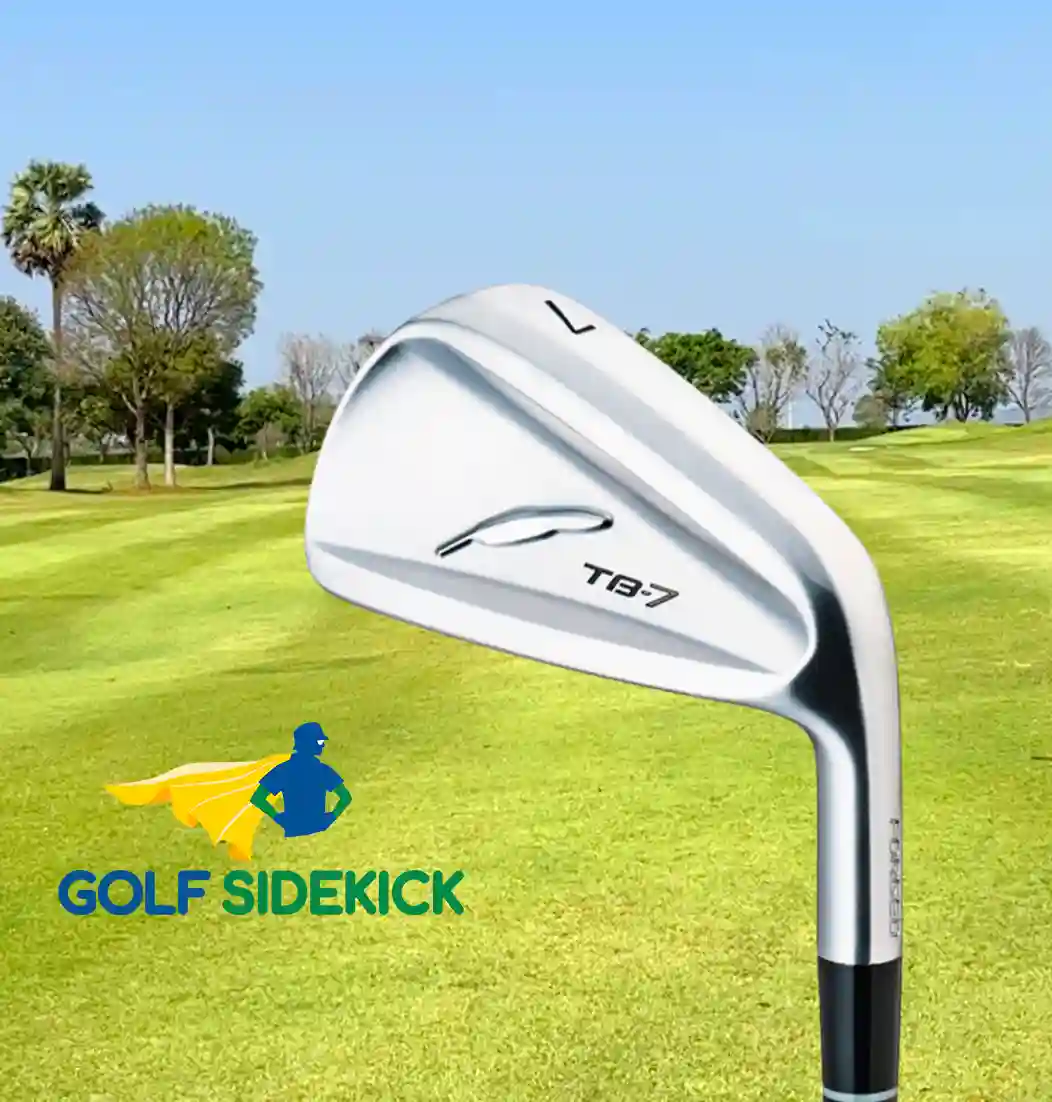
What is a 7 iron used for?
A 7 iron is used for 6 main purposes:
- Approach shots from 120-170 yards
- Punch shots out of the trees
- Chipping bump and run chips close to the ground
- Fairway bunker shots
- Assessing your swing at a lesson with a pro
- Fitting your new iron set with a club fitter
Standard 7 iron length
The standard 7 iron length with a steel shaft is 37 inches while a 7 iron with a graphite shaft has a standard length of 37.5 inches. These 7 iron lengths work for golfers ranging in height from 5 foot 9 to 6 foot.
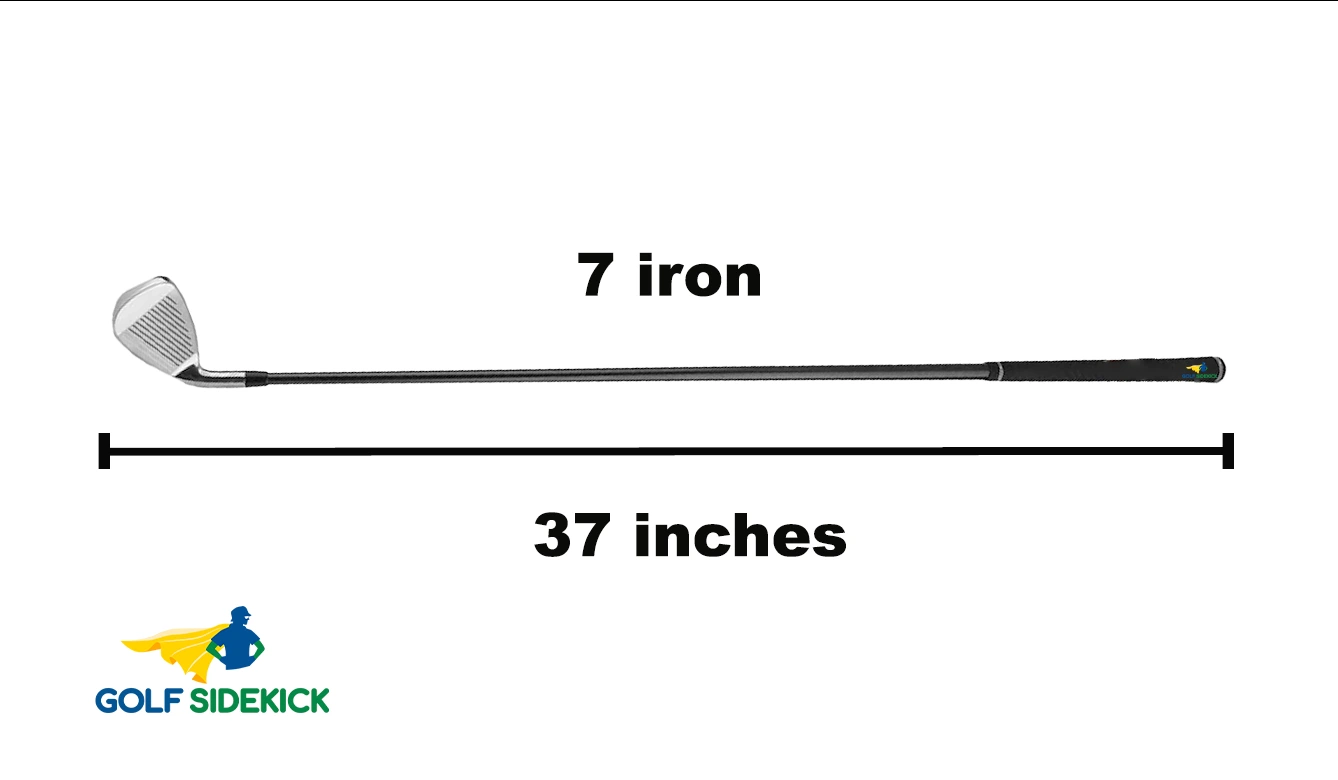
How to hit a 7 iron
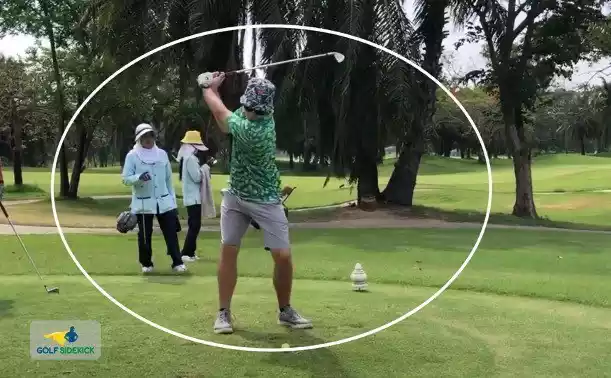
There are 7 keys to hitting a 7 iron well:
- Start with a forgiving cavity back 7 iron - it is the easiest to hit style of iron head.
- Play the ball between your front big toe and the middle of your stance.
- 60% of your weight should be on your front leg.
- Your hands should be ahead of the golf ball at address position.
- You must hit down on the ball, not scooping it up.
- Take a practice swing where you graze the grass lightly feeling the club bounce off the ground to get ready for the shot.
- Try and leave a scuff mark the size of a dollar bill after the ball on your shot .
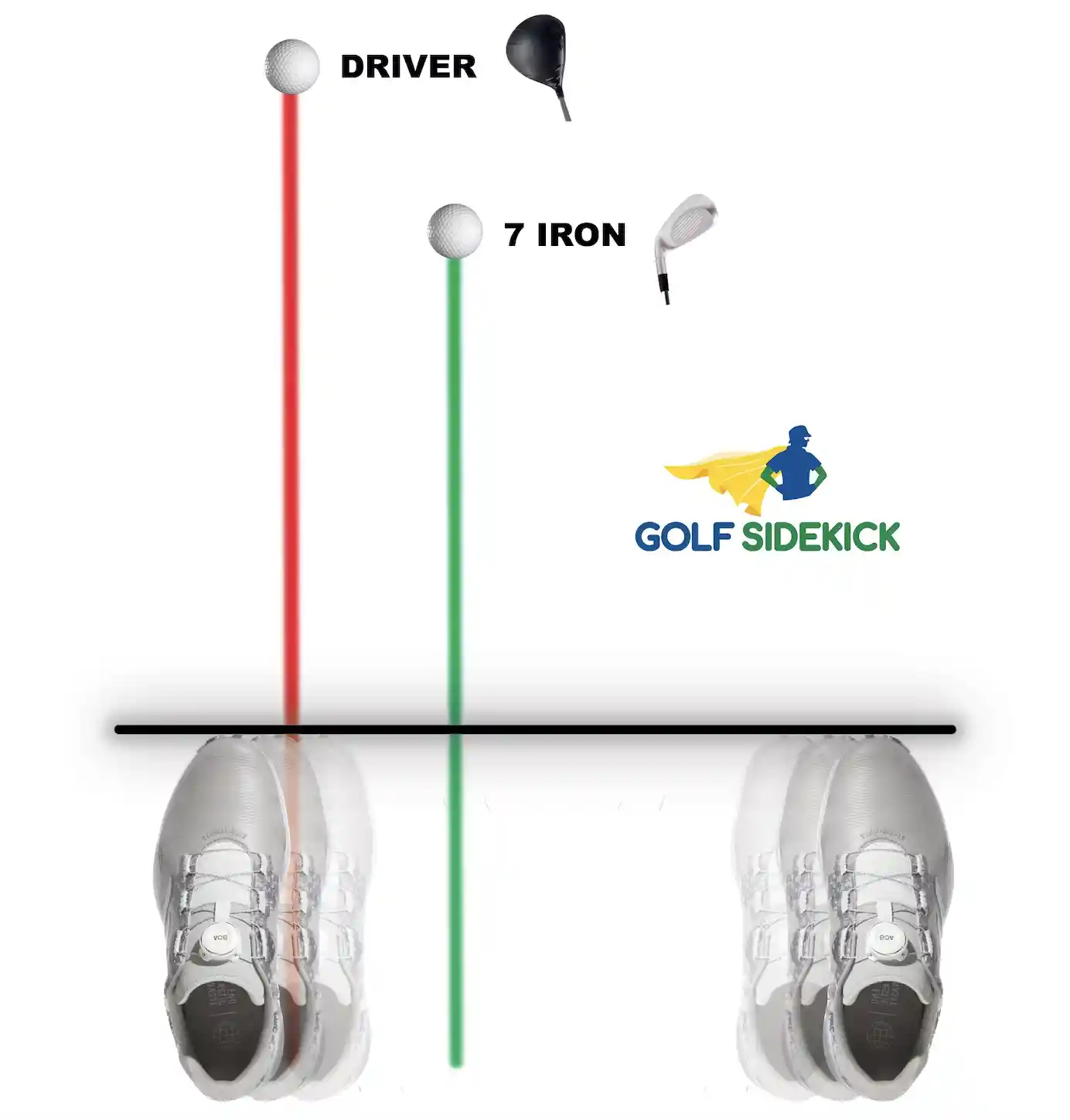
Ideal 7 iron launch angle numbers
Ideal 7 iron launch angle degrees range from 16 to 19 degrees for a fast swing speed to 17 to 21 degrees for a moderate swing speed.
7 iron apex height explained
The apex height of a 7 iron is the maximum height the ball reaches above the ground. The ideal number will vary based on swing speed.
The apex height will determine the angle of descent into the target. The angle of descent into the target is the angle the ball falls from the apex height into the target relative to the flat ground.
Soften the apex height and angle of descent can negate the need for spin in order to stop the golf ball. If you combine a steeper angle of descent and higher apex height with a lot of backspin, that is when the ball rips back 20 feet or more for that cool back spin look.
How far should a 7 iron go?
You may ask: How far should I hit my 7 iron? A 7 iron should go between 100 yards for a beginner and 200 yards for a professional on the PGA Tour. The average recreational golfers hits a 7 iron around 135 to 140 yards. The distance depends on the loft of the club and the swing speed.
7 Iron Distance - Averages by Skill
- Beginner male golfers - 100 yards
- Male Mid handicappers - 135 yards
- Male Low handicappers - 165 yards
- PGA Tour Players - 172 yards
Average club head speed with a 7 iron
The average club head speed for a 7 iron for most male amateurs is 70 mph with a resulting carry of 135 yards.
The club head speed of your 7 iron depends on:
- Your strength levels
- Your swing mechanic efficiency
- The golf ball you use
- Your mobility
- The weight of the club in relation ot your swing characteristics
- The weight of the shaft
- The shaft material
- The type of head - cavity back, game improvement, blade
Matching 7 Iron Swing Speed to Shaft Flex
If you swing at 75 mph to 85 mph with a 7 iron, you will fit into a regular shaft most of the time seamlessly.
You can roughly match your swing speed to your shaft flex but always remember to check with a fitter because your transition and tempo may require a different shaft.
7 Iron Distance Matched to Shaft Flex
The ideal smash factor for a 7 iron is 1.33 so we use 1.33 as a way to standardize all the numbers in the chart below. Remember that you will not hit every shot well and mor ethan likely will hit most shots with lower smash factor than 1.33.
The chart shows rough estimates for distances matching to shaft flex with a 7 iron.
What swing speed with a 7 iron hits 150 yards?
A swing speed of 80 mph with a 7 iron will achieve 150 yards in distance.
If you have a lower lofted 7 iron, your swing speed can be lower to hit 150 yards. If your loft is higher, you need more swing speed to hit 150 yards.
Average 7 iron Club Head Speed of PGA Tour Players
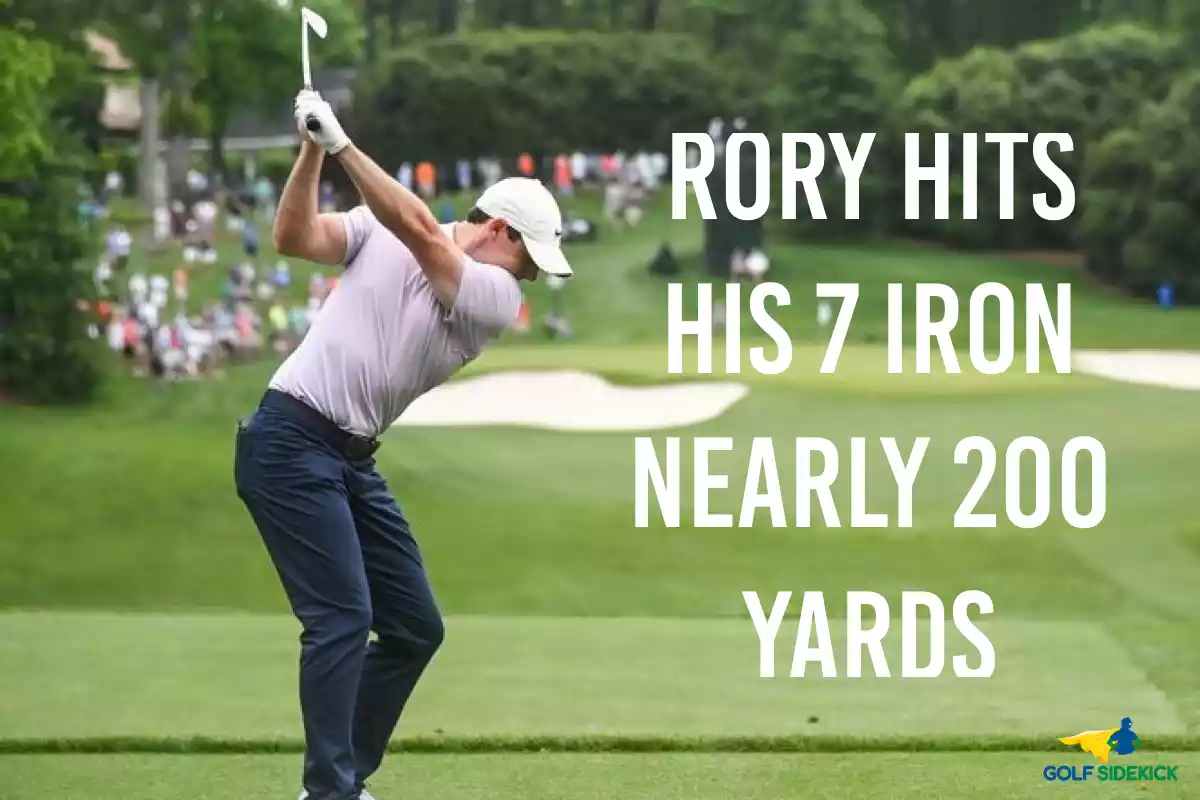
The PGA Tour players average club head speed with a 7 iron is 90 mph. That may not sound impressive but their priority is accuracy and consistent distances so there is no reason for them to smash the golf ball.
If they wanted to, PGA Tour pros could smash a 7 iron with 100 mph swing speed, but they don't need to. It doesn't serve any purpose for them because their swing is crafted to hit specific distances on command to hit the ball close to the hole, not as far as possible.
PGA Tour p rofessional male golfers hit their 7 iron 172 yards.
Professional ladies on the LPGA hit their 7 iron 141 yards.
Source: Trackman
7 iron distance averages on the PGA Tour
The average 7 iron distance on the PGA Tour is 172 yards of carry. Some PGA Tour pros average much higher like Rory McIlroy who hits his 7 iron 195 yards but the emphasis on the PGA Tour is to control consistent distances, not hitting long distances.
Ideal trackman numbers for 7 iron
The ideal Trackman numbers for a 7 iron are:
- Attack Angle: -4.3°
- Smash factor: 1.33
- Launch angle: 16.3°
- Spin rate: 7,000 rpm
- Maximum Height: 32 yards
- Landing Angle: 50°
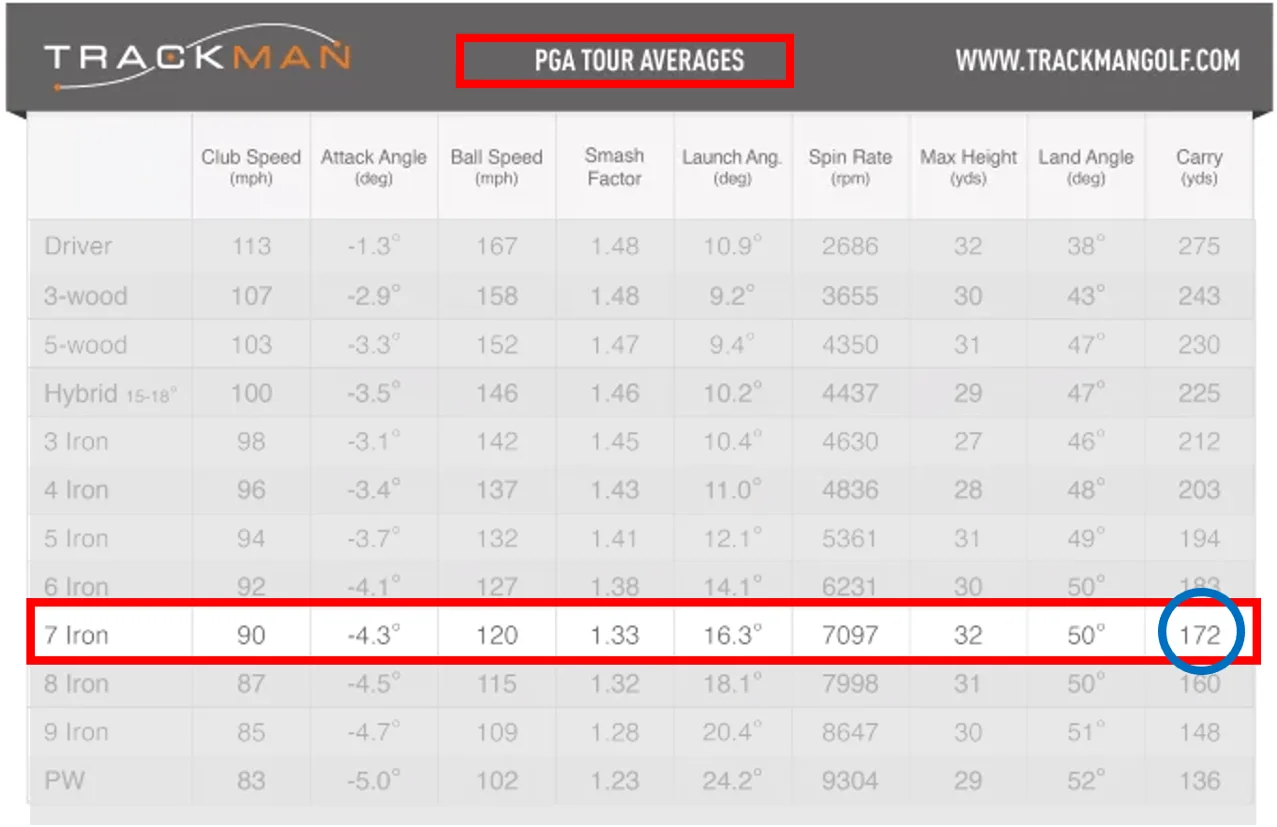
What happens hitting 105 mph ball speed with a 7 iron?
At 105 mph swing speed with a 7 iron, the ball will carry 215-220 yards depending on the smash factor of the shot. 105 mph with a 7 iron is very rare and mostly not necessary.
I tried to hit the ball as hard as I could with a 7 iron in this video on my Golf Sidekick Extras channel.
I found that at 102 mph, the ball flies 207 yards, rolling out to 215 yards with a smash factor of 1.39.
Ideal 7 iron back spin rates
The ideal 7 iron back spin rate for a fast swing is between 6,500 rpm and 7,000 rpm. Multiplying 1,000 by the number stamped on the bottom of the club can give you a rough guide to ideal spin, though most golfers produce 500-1,000 rpm lower than this calculation.
7 Iron Ball Speed Chart
7 iron ball speed depends on swing speed, and smash factor. If you strike the ball well, the smash factor increases and so does ball speed. The opposite happens when you strike the ball poorly.
The average swing speed of the average male golfer is 70 mph and ball speed of 95 mph, resulting in a carry of around 135 yards with a 7 iron.
7 iron bump and run guide
You can use a 7 iron to chip a golf ball close to the ground. Here's how:
- I recommend that for every 1 yard of carry on a 7 iron bump and run, your ball will roll out 5 or 6 yards.
- Judge if you can carry the ball onto the front of the green and have enough space between that spot and the pin to allow the ball to roll up.
- Read the break of the green because your ball will roll like a putt so it will take the break of the green.
- Narrow your golf stance and put more weight on your front leg.
- Stand close to the golf ball in the same stance as a putt, raising the 7 iron more up on its toe. Yes, raise the handle like you're putting.
- Grip near the top of the grip - do not grip down.
- Pick a landing spot a few feet onto the green. The ball will roll out.
- Use your putting stroke to chip the ball off the toe of the 7 iron onto your chosen spot. Imagine you are putting and be aggressive.
Here is a video on how to do the toe down chipping described above:
You need a lot of space between your landing spot on the green and the hole. Your ball will roll out. Use this video from my Youtube channel to understand roll out with the Rule of 12:
Final thoughts on the 7 iron
The 7 iron remains the favorite in the golf bag for millions including Tin Cup, Roy McAvoy.
He parred the back nine of a qualifying round for the US Open.
You can too if you learn from this article, and use your 7 iron to the maximum capacity as an all-round versatile golf club.
- Fairway Woods
- Golf Wedges
- Golf Technology
- Golf Gloves
- Golf Apparel
- Golf Accessories
- We Tried It
- Head-to-Head
- True Golf Fit
- Our Toolkit

MyGolfSpy Labs: 7-Iron vs. 7-Iron
- BY Tony Covey
- Feb 15th 2017
- Read all comments
Support our Mission. We independently test each product we recommend. When you buy through our links, we may earn a commission.

7-Iron vs. 7-Iron
At our primary test facility in Virginia and our secondary location in Upstate New York, we do a good bit of testing that we don’t put in front of you. While we maintain the same standards in how we collect and analyze our data, we’re often just testing concepts and ideas. For example, we sometimes experiment with ways to leverage launch monitor features. Sometimes we try out new testing protocols, or, in the case of this test, we kick the tires on a concept to see if a larger test could be of value.
The act of testing itself not only provides us with knowledge; the answers we find often come in the way of more questions. In that sense, testing often provides inspiration. We’re hoping that by putting these Labs in front of you, you’ll have questions too.
To give you an example of what I’m talking about; upon completion of test detailed below, I found myself wondering two things:
- To what extent is the relationship between loft and launch angle affected by swing speed?
- Given the lower spin and, presumably , the lower launch of the modern game-improvement irons, would slower swing speed/senior golfers benefit from higher lofted irons?
So as you read through this Lab, think in terms of questions, not answers. Whatever questions you might have, feel free share to share them. They could help shape the next round of testing.

We decided to conduct a simple experiment to look at the relationship between iron loft, launch angle, and distance. We pulled four clubs, each with the number 7 stamped in the sole. While there were obvious similarities (all golf clubs have a head, a grip, and a shaft), you probably won’t be shocked to learn that all 7-irons aren’t exactly created equal.
Here’s what was tested.

Yonex’s N1-MB Blade is about as close to a traditional blade as you’ll find on the market today. It’s a compact design with minimal offset, and a razor thin topline. A graphite insert provides the only hint of modernness. While it’s not relevant to the test, I’d be remiss not to tell you that the N1-MB is absolutely the softest feeling iron I’ve hit in a considerable amount of time.

PING’s iBlade is the epitome of a modern blade. It has the footprint of a player’s cavityback. The topline is thinnish at best. It has some offset, though I wouldn’t describe it as generous. A custom tuning port (CTP) provides vibration dampening as well as swing weighting capabilities.

Callaway’s Apex CF16 is your textbook modern game-improvement club. It features a midsized blade, with moderate everything (topline, sole width, and offset). A multi-material forged design, Apex isn’t the most distance-centric in Callaway lineup, but guys looking for a few more yards won’t be disappointed either.

PXG’s 0311XF is the big distance, big forgiveness iron in the PXG lineup – and within this test too. Of the included irons, it has the widest and deepest sole, the thickest topline, the most offset, and the largest overall footprint. While the PXG’s signature big blade design provides some camouflage, the XF most definitely qualifies as a super game-improvement distance iron.
Tale of the Tape
As with some other tests we’ve done, this wasn’t about creating a perfect apples to apples comparison. Instead, we took four obviously different irons that just happened to have the number 7 stamped into the sole, and without regard for much else, hit them side by side to find similarities and differences.

The above chart shows us what we’d more or less expect. Iron loft decreases (get stronger) as we move from the blades to the game-improvement designs. 5 degrees of loft separate the weakest (Yonex) from the strongest (PXG). It’s fair to say there’s some loft-jacking going on within this bunch. It’s also important to note that shaft length differences are reasonably minimal. There’s just a bit more than 1/4″ between longest and shortest.
Stock shafts for each of irons are inline with what you’d probably expect. The CF16’s shaft is lighter and has a softer profile, while the blades feature heavier lower launching shafts. The anomaly in the bunch is the C-Taper in the 0311XF. There’s no such thing as stock in the PXG lineup. My sample was built to my specs – and that almost always means low launch/low spin.
Expectations
Before we get to the data, let’s briefly talk about what we expected to find. Based on static specs, we would expect to see an across the board progression in performance. The blades should launch appreciably higher and spin considerably more. We’d also expect those launch conditions would come with diminished ball speed. We’d expect the game improvement clubs to fly lower and farther and ultimately create more distance. That’s the point of distance irons, right? Finally, we’d also expect the larger irons to be more forgiving.

Observations:
- The data suggests a clear and predictable progression in ball speed. The lower lofted 7-irons produced significantly more average ball speed.
- You may find it surprising that despite significant differences in static loft, differences in launch angle were minimal (less than 1.5 degrees between the lowest and highest launching).
- The greatest influence in narrowing the launch gaps likely comes from increased dynamic loft from the GI and SGI designs created by the lower and deeper centers of gravity in the Apex and the 0311XF.
- As we would expect, the higher lofted (and also higher CG) designs produced significantly more spin. While not uncommon with average golfers, I believe most fitters would agree that ~5500 RPM produced by the GI/SGI irons is less than ideal for a 7-iron.
- Somewhat surprisingly, the 0311 XF produced the highest peak (apex). So while it produced the lowest initial launch angle, it also produced the highest average ball flight – almost certainly due to the increased carry distance.
- The Angle of Descent is similar for all four irons tested, but the higher spinning irons would produce less roll and offer greater green stopping power.
- Differences in ball speed, launch, and spin rates created significant differences in carry yards. The PXG 0311XF was nearly 20 yards longer on average than the Yonex N1-MB, and 6.5 yards longer than the Callaway Apex CF16 .
- Standard Deviations in both Ball Speed and Carry Yards (the lower the value, the more consistent the data) can provide insight into what is generally referred to as forgiveness. The data suggests the forgiveness breakdown is what you’d expect. The larger (GI designs) are more forgiving than the blades. Conversely, though not tested, we would expect that better golfers would find it easier to shape shots and control trajectories (better workability) with the more compact designs.
It goes without saying that loft has an influence on distance, but perhaps not to the degree, or at least not in the way golfers tend to think. While it’s true that the lower lofted clubs in this test produced more ball speed and ultimately more distance, the relationship between static loft and launch angle was disproportionate to the actual difference in lofts between clubs. In my case, A 5° difference in loft produced only a 1.37° difference in launch angle, and the lowest lofted club produced the highest peak ball flight.
This would seem to validate some of what the OEMs tell us about game-improvement irons, specifically CG locations and the resulting influence on launch (they launch higher). That said, despite mostly similar trajectories, the stronger lofted clubs produced significantly less spin than the blades. While that’s great for distance, it’s not the best recipe for holding greens. I still believe many golfers, particularly slower swing speed players, would benefit from weaker lofted irons.
The key thing to remember is that specifications almost never tell the complete story, and there’s absolutely no such thing as an inherently good or a bad loft.
If I had hit these four irons with the intent to buy, I’d almost certainly eliminate the Yonex N1-MB (I LOVE them, but reality says they’re not forgiving enough for daily use), and the PXG 0311XF (I might fall in love with the distance, but the low spin would be a concern based on how I prefer to play the game). That said, I might consider weakening the lofts by a degree or two.
From the remaining choices; if I’m focused on distance, I go Apex, but if I’m looking for control (at the expense of some forgiveness), I’d take the iBlades . Not to belabor the point, but the idea here is that you shouldn’t get hung up on specifications. It should go without saying that individual results will vary based on a number of swing variables, but the goal should always be to find the iron that produces the best results within the dynamic realities of your golf game. The on-paper stuff…it doesn’t matter much at all.
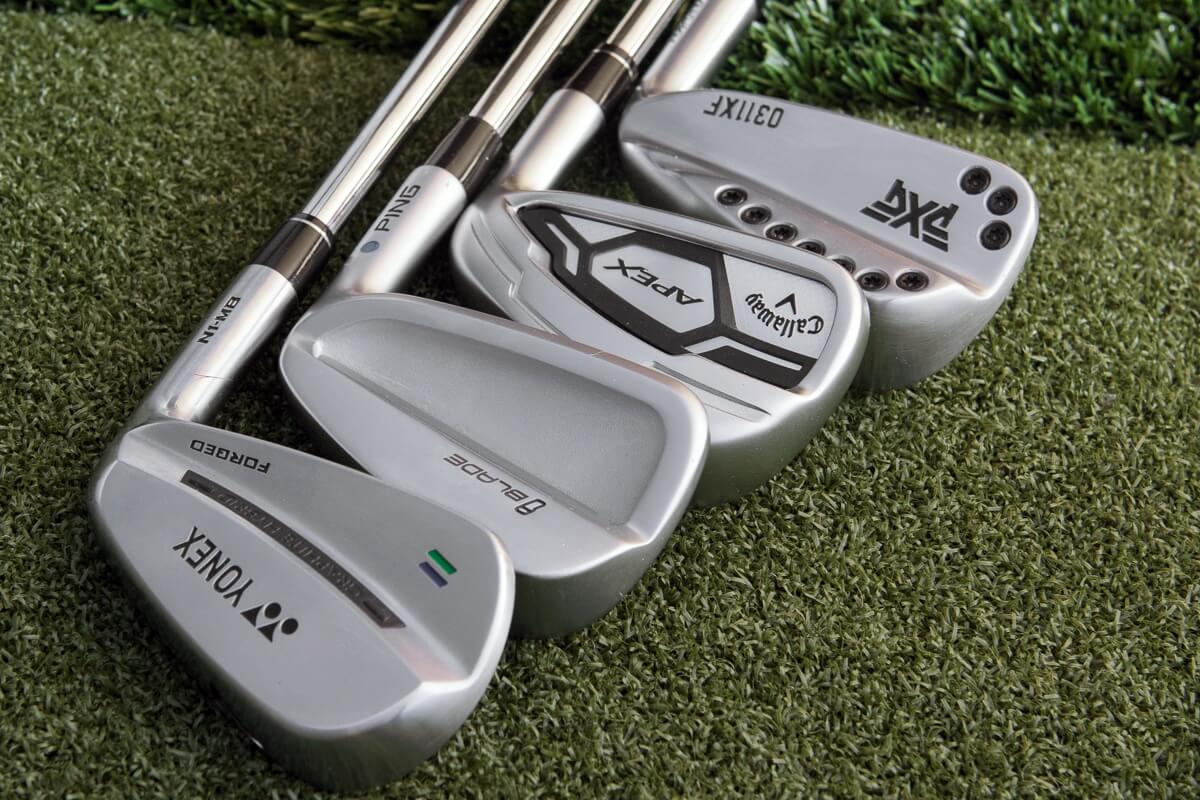
Which Would You Choose?
If your numbers were proportional and similar to mine, which iron would you choose?

Apr 8, 2024
Public vs private: where to play in 2024.

Apr 7, 2024
Testers wanted: ghost golf anyday golf bag.

Apr 6, 2024
Testers wanted: l.a.b. df3.
- about the author
- latest posts

Tony is the Editor of MyGolfSpy where his job is to bring fresh and innovative content to the site. In addition to his editorial responsibilities, he was instrumental in developing MyGolfSpy's data-driven testing methodologies and continues to sift through our data to find the insights that can help improve your game. Tony believes that golfers deserve to know what's real and what's not, and that means MyGolfSpy's equipment coverage must extend beyond the so-called facts as dictated by the same companies that created them. Most of all Tony believes in performance over hype and #PowerToThePlayer.
Email Address
Thom Bendtsen
7 years ago
I know you get enough of people telling you what to do, but I think the next obvious step is to test these 4 irons again, except with all clubs having the same loft. Would the pxg 7 iron be identical to the 6 iron in the other sets? I think the numbers would be similar for carry and spin except the pxg might be more accurate. So rather than hitting the same number iron and seeing which is longer, hit the same set, different club, to the same target and see which is more accurate. That would be the real test, I think.
George Hanson
Duncan castles.
Interesting article, but have a look at the Trackman PGA and LPGA Tour Averages for launch angle and max height per iron linked to here: http://blog.trackmangolf.com/trackman-average-tour-stats/ Launch angle does not alter between irons as much as you might expect and max height is essentially the same across the entire set (and I believe that’s what clubfitters look to achieve for max height).
This article is silly. Not only the lofts are so different, the shafts have an even BIGGER difference. Testing a 95 gram shaft that will produce less control but much more ball speed and launch angle to DG S300 with a known low launch, to KBS S+ tells me that the IPX HEAD must really launch SUPER High to be the same as Callaway (noodle shaft) with such firmer shaft and lower loft. If IPX flies higher with a much more controllable shaft, what’s not to like? If you want more spin just get a softer tip shaft KBS LITE and get even more distance (and height). Time to apply for a second mortgage….
It is very important to know the type of game you want to play. I love to fly my ball almost all the way to my target and have it stop after a single bounce. I like to know I can be aggressive with spin if I need to and draw the ball back but mainly I want to stop the ball where I expect. Limiting the variables to left or right of target. I like the soft fell and distance control of my KZG irons. If you play a lot of links like golf lower lofts and less spin may work for you. Playing fast firm greens at quality tracks give me loft, feel, spin and distance control. Play the right tees and adding yards in your iron set are unimportant.
Obviously the majority of readers didn’t get your intention with this test. It’s obviously not an apples to apples test and points to the differences (and sometimes similarities) that can be found with a sampling of the “same” club from different OEMs for a spectrum of targeted golfers.
If it was my choice, and as you said they were the best feeling iron by far, I would pick the Yonex N1-MB and have them delofted 1° to get the same distance as the Pings.
Based on my play and swing profile I would also go for the ping i-blade, if i had to choose from this list.
I’am missing the effect of the shafts in the tests… they have a large impact on how an iron performs…
Alltough my swing speeds are just above average i found that using a stiffer shaft in my irons gives me a better feel and sence of aim. On my last buy of irons i did a lot of testing and research on shafts because I found, for me, they have a large impact on the feel, results and quality of strike. Currently use KBS-Tour R+ stiffness. The shaft gives me a stiffer feel, but due its stiffness it lauches a bit lower for me. Thats where the mid launch of the shaft helps for me. Combined with Titleist AP2 heads, which are allmost true lofted, gives me enough spin to hold greens.
Is there a way to tests shafts an the effect they have on the results?
For instance what is the effect for a slower swing speed player to use a stiffer shaft, but a shaft which has high(er) launch characteristics… (like a Stiff KBS Tour 90, e.g. a lighter shaft) instead of a Regular C-taper, heavyer shaft.
I feel like Vinne Barbarino “I’m so confused”! I think I understand the article but how do I use this info to find a replacement for my Ping G20s? I’m a senior and need more height, distance and forgiveness. I’m already hitting a 4 and 5 hybrid so what direction do I go for new irons? Would I be wrong to want to go back to old lofts say 30 or 31 deg on a 6 iron with a modern graphite shaft? I guess it’s time to go see my club fitter.
Interresting comparing different designs. What would be interresting is also comparing the four sets of clubs comparing the club you would use for 150 yard carry and the 170 yard carry in the different sets and then compare deviation, spin and the other parameters not focusing on the number or loft but compare from aspects of what club to use for a 150 or 170 yards carry shot! /Jan G, Sweden
Good article, helpful if you know how to use it. Jan G makes a good point. Reminds me of a time that I was hitting my new Mizunos great but was complaining about having to play one more club on each shot. The tour senior that I was playing with grabbed my club and with a sharpie changed the 7 to 8 and said, “now, you feel better?”.
The point is, that if you owned the PXG’s and wanted to hit the ball 150, you would probably hit the 8 which would spin more. If you wanted even more spin, you would try the XP 95’s or maybe the c-taper lights. Maybe even a graphite shaft. At the lower end of the bag, 3 & 4 irons, you would probably find a hybrid that goes the distance that you want in that gap.
MAJMike the duffer
PXG goes the way of so many manufacturers trying to say they are the greatest by jacking up there lofts on their irons. This results in the longer irons being harder to hit. Why can’t these manufacturersites set them at set standard loft and if the player wants a different loft then have them adjusted. Having standard lofts then allows the buyer to get a real comparison between different companies irons. I bet the PXG would not be 20 yds. longer than the Yonex if it was set at the same loft. PXG’s hype about being the best is actually a smoke screen using jacked up specs. to achieve better performance. Next they will be putting out 7 irons with 25* loft!
It’s all about marketing.
If brand a brand X 7 iron goes farther than a brand Y 7 iron a fair percentage of buyers will pick brand X.
With such a large disparity in loft’s, you can’t really do a club-by-club comparison. 30* vs 35* and 20 yards difference, not a ‘fair’ comparison. Pity…I was really looking forward to this article – but while it’s interesting data, it’s not really useful … for me.
I think they should have compared the performance of the clubs with the same loft, not the number on the club.
I would go with the Apex CF 16. That said I would take current 7 iron and hit both to see if I need an upgrade yet. If I decided to buy new then I would get fitted so, they fit me. Thanks for the great article and the new MGS is GREAT!
Craig Ryans
I have played the CF16 for two seasons so far. I am always looking for my next iron set. Have not hit anything to date that takes the CF16 out of my bag. Just added a EPIC driver. All I can say should far is WOW. Proof will be on the course in FL in 4 weeks
I would want to know what the numbers would say if instead of choosing four 7 irons to see how they differ you choose a distance you want to hit and find the club you would use from different sets.
What kind of stopping power would you get from a PXG’s 0311XF 9 iron vs. the Yonex’s N1-MB 7 iron it they are comparable for distance?
Would the forgiveness increase even more with the asumed shorter shaft of the 9 iron?
Is ball speed ever relevant when you’ve got the rest of the numbers?
All of this should mean gaping issues at the top of the bag right, is this true for all golfers (skill, swing speed etc.)?
Thomas Murphy
Interesting run, it would be interesting to see with different swing speeds how this plays out. As to the lower spin you a) adapt to it b) most people hit their irons short anyway so they could use the roll c) it would be interesting to validate in green grass testing d) the PXG is essentially a 5 iron spin but coming in a little steeper than most people’s 5s…unless you are thinning your irons or hitting rock hard greens has it been hard to stop the ball? I would be more interested (haven’t thought about this much so noodling as I write) in how the amount of backspin aides or hurts me with wind. I think it would hold the line better with side winds but wonder does it balloon more in a headwind and here is what I dislike is most “high launch” improvement irons is because launch is generated by the CG you can’t flight it down very easy. It is just like it can be a pain to hit a draw with a GI club. But then again, a GI club is designed for “just hit the middle of the stupid green” and be happy about it, you may actually improve your handicap ;-) PS. the new site looks awesome, nice work
thomas murphy
PPS: I am the guy would would be wanting to play the Yonex but a mixed bag of N1-CB and N1-MB….if they were LH — and really my game calls more for i200
I have been leaning toward the CF16 and appreciate the info.
Can you test different clubs but not with same number on the sole, rather with the same loft? It would be more comparable. Here the SGI 7 are a 6 for blades. So we could really compare forgiveness, trajectory, spin, for the same carry distance more or less. Also,
Graham Riley
I’d take the iBlades because of the control and the fact I like a narrow top line of a blade.
Carson Joens
These results show some pretty incredible numbers for PXG. However why did you test the XF??? The o311 or even the 0311t would be much more comparable to the other three heads, and I believe the numbers would be close to the same. If you’re willing to spend money on clubs, do it. Get PXG. Tests are out of this world all across the board. If you need more spin, that’s why you get fit for the right shaft.
Frank J Giasone Jr
PXG all the way!!!
While not an apples to apples test, that wasn’t the idea and I think people are missing the point – that clubs that have a FIVE (5) degree difference in loft are all virtually launching at a similar launch angles (less than 1.5* of each other). It confirms what OEMs have been telling us about more distance-oriented irons: they’ve made them launch significantly higher and by lowering the lofts (and therefore gaining distance) they still launch the same as what a traditional 7-iron would. If my 30* 7-iron launches the same as my 35* 7-iron but goes 20 yards further assuming I can handle the spin rate why wouldn’t I take that? Bottom line, if the same game improvement iron was 35* it would launch SIGNIFICANTLY higher with much more spin – and that wouldn’t make much sense at all. Loft jacking? Sure, but there is a science around it as well.
That’s my take away as well. There’s actually some truth to the marketing story from the OEMs. The static loft of the club is different, but the dynamic loft gets to be about the same. The peak height is about the same, but the spin is greatly reduced and the ball speed goes up.
To me this was most obvious first when testing hybrids. Those specs end up looking much more similar, but there is a huge range in spin between a 22/23 degree hybrid from one OEM (low, back weighted) versus another (low front). The low/front ones are longer, but don’t hold a green as well. Some on another site called me a liar (couldn’t see 2-3 MPH ball speed differences out of such similar specs), but it was evident in the numbers and I hit a LOT of balls over a LOT of days.
I think it really comes down to what one is looking for out of the club and that slot and then how one compensates. I’m fine with a low spin iron (and I currently play what is a pretty low spinning iron with some seriously jacked lofts), but I need to remember to play front distances.
As for what is “better” some need to also keep in mind the playing conditions. I may be in a minority, but I personally believe lower spinning is better when playing in wind. It’s not just peak height (note they’re all about the same), but for whatever reason I think a higher spin shot is exaggerated by the wind more (ballooning and distance loss or side spin). I guess my point is what is “better” may vary based on what conditions one plays in.
As always, great read by Tony and team!
Have a look at the Trackman PGA and LPGA Tour Averages for launch angle and max height per iron linked to here: http://blog.trackmangolf.com/trackman-average-tour-stats/ Launch angle does not alter between irons as much as you might expect and max height is essentially the same across the entire set (and I believe that’s what clubfitters look to achieve for max height). In other words, there is not as much truth in the dynamic loft versus static loft story some OEMs want to sell you as you might want to believe. A 31 degree ‘7’ iron is going to behave pretty much like a 31 degree ‘6’ iron regardless of CG. If the 31 degree ‘7’ iron is built with a higher MOI through perimeter weighting etc it will be more forgiving than the 31 degree ‘6’ iron, but that’s got nothing to do with the loft.
So how is the PXG 7 iron supposed to stop on a green with that low spin? It goes a long way then would roll even more over the back of the green
I play CF16 (also low spin) and they stop just fine. Not once have I wished for more spin.
Bill Mccright
Good read….one has to go with what feels most comfortable inyo hands –then groove your yardages w/ a range finder.
Tracey Copeland
Seems like Club mfgrs. Need to just start stamping lofts on them instead of an arbitrary number. Cart Partner: “what did you hit there”? ME: my 30degree
The Ben Hogan Clubs actually do use the loft number. I ‘ve played several rounds with people who swear by them because that is actually the way they were fitted for them as well.
Ben Hogan just went bankrupt because they tried to do just that (and stock/manufacture every single loft). Yikes.
Undershooter30
To be fair, that wasn’t exactly the reason why Ben Hogan went bankrupt. If it did play a part in it, it was 1% of their problem.
Also they started offering traditional stamping as well before their “restructuring” started.
David Anderson
Love my pings!
There wasting there own time, seriously what’s the point it comparing irons with 5 degrees n Loft difference , please tell me. Also I didn’t realize I was gonna be graded on spelling and punctuation , jack ass. U must be a democrat .
Calling names, Kevin? Check yourself.
If by “democrat” you mean “Educated” and “Not an A**Hole” then Yes..
Well Kevin, I guess you are wasting your time too, first when reading it and then, not learning anything from it. If we sat down with a drink and I would have asked you: Kevin my friend, what do you think would happen if we take two 7 irons ( or call them what you want) that are 5* of loft apart. Which one will go and fly the highest? Give me an honest answer. AND KBS Ctaper S+ is not a famous high trajectory shaft, is it? Keep up the good work MGS
The part of the club (face) where it meets the ball has been unchanged for a long time besides minor groove changes. It’s not rocket science, the angle determines distance folks. All that stuff on the back is dressing said a wise old man.
There is no mention of shafts and their effect on launch, spin, ball flight, etc. The shaft characteristics of weight, kick point, torque, and flex can have just as much (possibly more) effect on ball flight than the static loft of the clubhead.
From the article:
“Stock shafts for each of irons are inline with what you’d probably expect. The CF16’s shaft is lighter and has a softer profile, while the blades feature heavier lower launching shafts. The anomaly in the bunch is the C-Taper in the 0311XF. There’s no such thing as stock in the PXG lineup. My sample was built to my specs – and that almost always means low launch/low spin.”
Granted, we didn’t dig too deeply into it – again, not the point of this particular test. Any influence from the shaft is going to be realized in the numbers.
Certainly, I found it interesting that even with the C-Taper (low launch, low spin, minimal deflection), the PXG’s were still in the ballpark of the others. I would expect that with the XP 95, for example, we’d see higher launch and higher spin.
The shaft is not going to effect launch and spin as much if not more then the club head. Although shaft weight, flex, and profile are important to fine tune spin and launch, as well as feel, the club head is doing most of the work. If you can show me launch monitor data of the same clubhead with different shafts in the same flex with spin rates that differ by more than 1000 rpm’s I would love to see it. Tony could put any shaft he wanted in that PXG and he’s not going to get a spin rate in the mid 6000’s.
Why weren’t the clubs all bent to the same degree? They are all forged so it shouldn’t have been an issue.
Jon Brittan
Because that wasn’t the point. Would be interesting to see results if they were all the same loft, but the aim here was to show that the number stamped on a club bears little relevance to anything these days.
All too often people can be sold on a new set of irons because they hit this 7 iron longer than that one, but that number stamp is mostly irrelevant. Who cares what the number says target than the performance of the club in terms of accuracy and spin?
For example, I use an older set of Titleist clubs. These days the Taylormade M2 7 iron is stronger lofted than my 5 iron. If I hit the TM against mine then of course I’ll hit it further, but now I have to play a 9 iron instead of a 7 for the same effective distance and spin while I have a gaping hole at the bottom of my bag to my wedges. I don’t care what number my iron has on it, simply that it flies the range I expect it to.
Finally, modern sets are moving in the wrong direction for gapping. To facilitate stronger lofts while not completely breaking the playability at the long end and the gap at the bottom they’ve compressed lofts, but at the wrong end. For playing performance rather than show off figures you’re better off with smaller loft gaps in the short clubs where you can really be tight in your grouping and longer gaps at the top where your range is less consistent to stop things like a miss-hit 3 iron being shorter than a half decent 4 iron.
But most of the people here in the forum understand that lofts don’t necessarily match the given number on the club.
You should also be hitting that 7 iron higher than your old 5 iron because of the CG placement. Now whether the overall club is shorter in length than your old 5 is TBD. In theory though, a 7 iron is easier to hit than a 5 iron.
I’m 100% on board with you about the gaps at the bottom of the bag. If you have a 43-44 degree pitching wedge and a 56 degree sand wedge, that’s potentially 30 yards difference (2.5 yards per degree).
Based on the volume of comments we receive, It’s clear to us that most people don’t understand the relevance of CG placement or that stamped loft is largely meaningless when you factor in the dynamic forces of the golf swing.
Ben Goergen
So what I notice is that the PXG though 5 degrees stronger is longer per degree of loft than any of them, as well as has the lowest variance in ball speed and carry distance I would assume translates to “more forgiving”. That is all while being a 5 degrees less loft which should translate to less forgiving, harder to hit consistently. Or did I missread that?
Loft is only a relatively minor factor in terms of what defines forgiveness.
You consider lower lofted irons to be less forgiving than higher lofted because they are traditionally also longer clubs.
A 5 iron isn’t harder to hit than a 7 iron so much because of the loft than because of the longer shaft and smaller head. A longer shaft requires a smaller head to facilitate the same swing weight. This is also why game improver irons are more forgiving, bigger heads with more face flex…
The PXG is a bigger head with a more flexible face on the same length shaft, the loft becomes minor in comparison to the mass you can put behind and under the ball.
Thank you Jon Brittan, I think I got that part, next question then, mind you im not a pxg sales rep but I do consider myself a numbers guy. Given total distance covered, does a smaller deviation of distance not mean it was a more “forgiving” club since distance control is half of the directions involved in shot dispersion? Aka nice to know that 7 iron should fly between 158 and 163 on any reasonably well struck shot? Vs one that flies between 140 and 149. Im not trying to sell pxg or yonex but given the data isn’t apples to apples so to speak with the loft jacking going on a guy has to try to factor that into his use of this data.
As Jon Brittan said, length is certainly why lower lofted clubs are regarded as being harder to hit. The other factors are rooted in the physics of impact and ball flight. Assuming the same angle of attack and all other things being equal, a club that produces less dynamic loft will curve more. That’s rooted in Trackman’s spin loft math and the fact that as spin loft increase, it becomes harder to tilt the axis (curve the ball). On a broader scale it’s the reason why wedges curve less than 5-irons. So basically we can take that to mean that it’s harder to hit lower lofted clubs straight. Of course, the thing to keep in mind is that Spin Loft is derived from Dynamic Loft (not static loft), so if we define easy to hit as being easy to hit the ball in the air and straight, clubs that produce similar dynamic loft (again, all other things being equal) will offer similar ease of hitting.
From our numbers we can assume that the PXG’s produced more dynamic loft than the other clubs and therefore, based on the physics anyway, would be expected to fly straighter, while the lower CG would allow for easy-up as it’s sometimes called. – TC
I’m not following with the presumption that GI irons launch lower than their bladed cousins. Of course they have less loft, but doesn’t the lower CG account for their higher launch?
It’s all about what side of the fence you’re on.
Angry Internet Golfer: Loft-jacking! All the golf companies are doing is relabeling a 6-iron as a 7-iron to get more distance. OEM Guy: If we didn’t strengthen the lofts, our modern (low/back CG) designs would launch too high.
Our data suggests there’s a bit of truth in both, but more so for the OEM side. We found that despite substantial differences in loft (more than a club’s worth at the extremes) launch angle differences are fairly minimal – certainly tighter than most would expect, even allowing for the impact of CG location.
On the other hand, we also find that what we presume is increased dynamic loft from the GI designs doesn’t come with a significant increase in spin (also tied to CG), so while launch angles may be similar, the spin rates are dramatically different.
I suspect – and again this is one of those ideas we hope comes out of this thing – as Santiago noted, we’d have to drop down to something akin to a 5.5 iron in the Yonex to get the spin numbers close…and at that point, obviously the launch angle differences would widen.
So if the lofts have to be strengthened to keep from launching to high, at what point are they too strong? If you have to have a 45 degree gap wedge to keep it from launching too high, wont you be hitting it way too far? So much so that you will have a significant gap to your traditional 54 sand wedge? So at some point (and some manufacturers have) you will have to move the CG more forward again on your gap wedge, pitching wedge, etc. This is why I would like to see more blended sets that are more game improvement in the longer irons and player irons in the shorter clubs. I can see the point OEMs are making, but have they gone too far?
We have some more testing to do on the subject, but I think for many golfers, the OEMs have already gone too far.
That said, keep in mind that these sets are designed to gap with the wedges in mind. You see big distance (and larger gaps) in the long irons, but as you move the short irons and into the PW/GW from the set things start to normalize again. It may sound like a bad idea, but we’ve seen that actual gaps in long irons for many golfers are too narrow as it is, so if you can space them out while creating additional distance, it’s not a bad thing for a decent percentage.
The issue comes when the lofts are so strong that even with GI designs and the extra dynamic loft they provide, slower swing speed golfers and seniors have trouble getting long and even mid irons in the air. At that point, it’s a problem.
Asked and answered several times, “Is this thing accurate?” Hell yes. And no, you don’t actually hit your driver 250.
Love it! Made me think of several people I know. I have to really catch one to get it out to 250/260 and I’ll out drive some guys with an average drive and then claim they average about 275 to 280.
I own a GC2 and one of the best things about it is to know what distance one REALLY hits the ball. I think most people don’t really know and often are left guessing. They also don’t know what they actually carry (clear an obstacle) versus where the ball might end up.
I also own a GPS and mark every drive I hit. I think that people drastically over-estimate their driver distance. On flat ground at sea level, I only average around 220 in the summer and 210ish in the winter (wetter). A great drive for me is 240-250 on flat ground. I’m paired with a lot of randoms and fall right in the middle distance wise. I’d bet if you asked them though, almost everyone would say they hit it further than I do.
Not sure I get the point of this article. So you tested four 7-irons with four different lofts and head-shapes? And the results were exactly as anyone would have predicted w/o doing the test? So why write about it? Don’t get me wrong, I love additional content, but pieces like this adds no value.
I’m not sure I agree that nearly everything is predictable.
Would you have predicted that a 5° difference in loft would yield only a 1.37° differences in launch angle? I would have expected a more significant difference.
Would you have predicted that the 1.37° launch angle difference would come with a 1700 RPM difference in spin? The commonly-used math suggests it should be +/-450RPM. This is surprising and suggests that while launch angle is perhaps more closely associated with dynamic loft, spin may be more closely correlated with static loft – and of course, CG location plays a role. It’s certainly an interesting observation that could be worth looking at in more detail.
Would you have predicted that a 4° difference in loft (Yonex to Apex) would produce negligible differences in peak height and descent angle? Wouldn’t this fly in the face of the argument that loft-jacking significantly lowers ball flight while supporting OEM arguments that GI designs inherently launch higher?
So yeah…some stuff is predictable and obvious, but I’d also argue that when you take a closer look at the data, there’s plenty here that defies expectations.
I am one of the slower swing speed players, and I have always wanted to increase the peak height of my irons so given the data shown, I would have to go with the PXG. However, based on looks I much prefer the Ping. Two weeks ago I was fitted at Ping HQ for the i200. Proportionally, my ball speed to carry yards is the same as yours, and my launch angle is the same as your Ping iBlade but your spin is +1000 over mine. As a result, your decent angle is 10* greater. I would love to have that peak height and decent angle, but alas, old age is a bitch.
Spin is not an issue with the XF. Distance wise you should compare spin to the irons hitting the same distance. Call it a 5.5 yonex iron, spin would be about the same. If you put a 6 on the xf sole, spin would be just right.
I agree. Just because it has a 7 on it doesn’t mean I’m going to pull it from 155. I’m going to pull whatever club I need from 155 and want to know the difference in spin between the irons in each set that give me that distance. That being said, this wasn’t the point of the article. It was actually a look at the difference from a player blade to a super GI iron and how they are completely different pieces of equipment and ultimately produce different results but somehow are similar in areas. I think it was a really good look at the technology.
Dennis Duncan
This is something that “ALL” buyers should be aware of…. be careful of “fake” distances,,,check all lies & lofts prior to hitting and understand these differences in each club are the primary reason your distances vary. Choose one that you hit straight more often than not.
Preston Bonner
Great great great article!
I’d game the pings. I’m a scratch golfer and the profile fits me. Seems to. Even the best at balancing distance, forgiveness, and performance into the green. Plus, the look clean.
Scott Romines
think the results on this were pretty predictable….manufacturers have been talking about more distance from their irons for years, but really they are just jacking the lofts…..I’d like to see the comparison between these at the same loft, maybe the 7i yonex vs the 8i PXG would be more accurate.
20 yards! More like pxg 9 iron… which is probably around 39 degrees, if I had to guess.
XF’s.
Terry McDowell
I game the Titleist AP1 and while they are forgiving and the lofts are 3 degrees strong they definitely have enough spin to stop and even backup a bit especially with my 9, PW, and GW. However I have a high SS so someone with a much lower SS probably wouldn’t want to use “game improvement” irons but rather something with more spin.
Damn you! Damn you to hell! I game the Apex CF16 and have been looking to improve upon them. I do not appreciate Parsons’ shtick but your test results may force me to swallow my bile and tryout the PXG.
FWIW I got to hit the PXG at Fairway Golf USA last year. They’re pretty cool. Then I hit the Apex with the same shaft and I hit the ball 10 yds further according to Trackman. Granted, this was not a full fitting by any means.
Leave A Reply
Notify me of followup comments via e-mail
Sign me up for the newsletter
This site uses Akismet to reduce spam. Learn how your comment data is processed .
Titleist ProV1 Golf Balls

Sign in to start earning rewards
Added to cart.

Apex Pro Irons

- Trade-In Bonus
- 3X Rewards Points
A revolutionary multi-material forged construction paired with our patented urethane microspheres delivers unmatched feel. An all-new progressive face is designed for exceptional distance with Tour-level precision. And a Dynamic Sole Design promotes improved turf interaction and better contact. The ultimate players performance iron has officially arrived.
Callaway Rewards
You could earn 1,505 4,515 points with this purchase when you join Callaway Rewards!
Log In or Join Rewards Today
Email Signup
Sign up to be among the first to receive exciting new product information, special offers, tour news & more!
Advanced Forged Performance
For the first time ever in an Apex iron, a hollow body construction pairs a forged face with a forged 1025 carbon steel body to deliver a premium, ultra-soft feel. Our patented urethane microspheres also work to dampen sound and improve feel while still allowing the face to flex for high ball speeds across the face.
New Progressive Face Design For Incredible Distance with Added Control
The Apex Pro ’24 irons feature a progressive face design to give players powerful long irons and more precise short irons. The long irons are designed with a powerful Forged 455 face cup to enhance distance and forgiveness. The short irons feature an ultra-consistent forged 1025 face plate engineered to give you control with your scoring clubs.
Dynamic Sole Design For Enhanced Turf Interaction
The new Apex Pro ’24 irons feature a Dynamic Sole Design with a pre-worn leading edge to cut through the turf more efficiently and trailing edge relief to ensure a clean exit. The result is an iron sole that maintains speed through the turf and promotes consistent contact on all shots.
Endless Combo Set Possibilities
From loft packages to sole geometries and shapes, the Apex Pro irons can be combined in any fashion with the other Pro Series models to meet a player’s specific needs. All Pro Series irons feature the same MIM back weight to give fitters more control to dial in their swing weights.

Product Specs
Comparison chart, product video, club configurator.
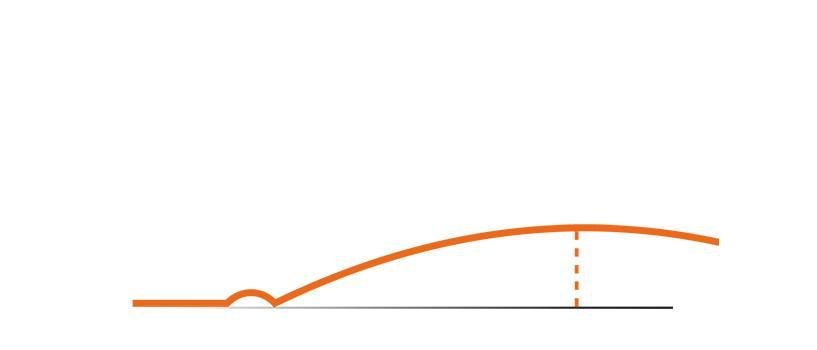
Height is the maximum height or apex of a shot
The height of a shot will vary considerably depending on the combination of ball speed, launch angle, and spin rate.
Variations in ball speed or launch angle will have the largest effect on height. Also, height is highly correlated to the landing angle of a shot.
Depending on the golfer’s ball speed, a certain height must be achieved in order to create optimal carry and/or landing angle. For example, an LPGA Tour player with a 6-iron ball speed of 109 mph is looking to achieve a height of 28 yards. This combination will produce a trajectory optimized for carry and landing angle. However, a PGA TOUR player with a 6-iron ball speed of 130 mph is attemping to attain a height of 34 yards. This combination is optimal for the PGA TOUR player with a higher ball speed.
Due to differences in club design between a fairway wood, hybrid, and iron, an optimally fit set of golf clubs will not necessarily apex at the same height throughout all clubs in the bag.
Height – The maximum height (apex) of the golf ball’s trajectory measured relative to the height where the golf ball was launched from (resting point prior to impact).
Tour Averages
- Driver = 32 yards
- 6 iron = 30 yards
- Driver = 25 yards
- 6 iron = 25 yards
TrackMan Optimizer Values
6 iron (optimized for carry and landing angle)
- @ 95 mph club speed = height of 36 yards
- @ 85 mph club speed = height of 32 yards
- @ 75 mph club speed = height of 26 yards
- @ 65 mph club speed = height of 19 yards
The standard assumption for height comes from the TrackMan Optimizer. For the driver, a club speed of 94 mph, attack angle of 0 degrees, and optimized carry results in a height of 82 feet. For a 6-iron, a club speed of 80 mph and mid-trajectory results in a height of 76 feet. For a PW, a club speed of 72 mph and mid-trajectory results in a height of 69 feet.
Read what our TrackMan University Masters say about Height…

Mark Anderson Philadelphia Cricket Club, PA, US
“I use height as one of the factors when I am looking at the optimization of ball flight. I want to make sure the student is hitting the ball high enough to be able to stop the ball on the green within a reasonable distance. With the driver, a slightly lower height might be necessary to maximize bounce and roll. If the height needs to change, I look at the launch conditions and how the launch conditions are being created.”

Hugh Marr Premium Golf Consulting, UK
One comment
Question: when i use to hit golf balls off a tee at a driving range with a #1Driver…my balls would travel 230 yards when it reached its Apex…my question is how far will the ball travel to where it hits the ground since the ball came off the tee like a line drive to the Apex point…heres something to help you..i use to hit a 9 iron between 190 to 195 yards since the last driving ranges markers were only at 200 yards
Leave a Reply Cancel reply
- Coach Of The Month
Subscribe and get the latest Insights!
Recent comments.
- Keith Rogers on Paul McGinley – How To Practice
- Anthony on 6 TrackMan numbers all amateur golfers should know
- BillM on TRACKMAN HANDICAP
- Tim Work on How To Work On Attack Angle
- WAYNE B EISMAN on 6 TrackMan numbers all amateur golfers should know
Stay updated
Stay up to date and receive free notifications of new posts by email.
Email Address
Subscribe - It's Free!
- Coach of the month

What Irons Do the Pros Use? Top 100 PGA Tour Player Guide (2023 update)
Written by Graeme Hay | Last Updated: 28/03/2024
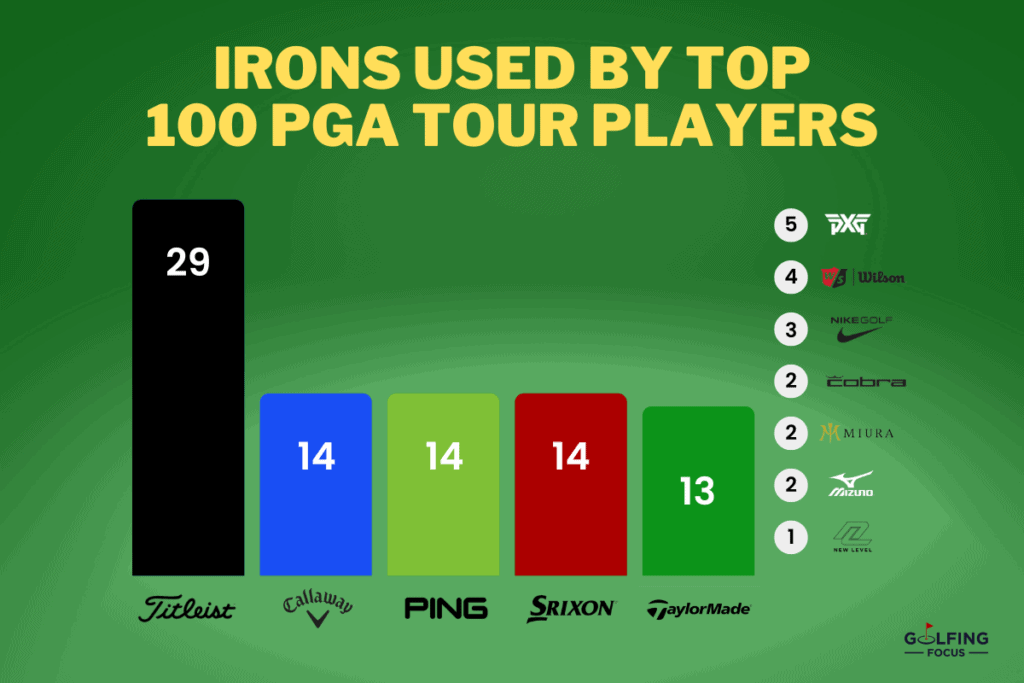
I’ve been planning to change my irons for a while now after a number of years but before going straight to a club fitter to test out all the latest and greatest models I thought it would be interesting to take a look at the iron setups of the best players on the PGA Tour to see what they are playing with.
So we took a look at all the irons the top 100 PGA Tour players are using, discovered the most used iron brand and most popular individual set of irons, found out how many of the pros are using cavity backs or blades before finally seeing what has changed since we last carried out this analysis a couple of years ago.
Titleist are the most played irons by the top 100 on the PGA Tour with 29 using them. Callaway, PING and Srixon irons are each used by 14 with TaylorMade played by 13. PXG irons are chosen by 5 with Wilson used by 4. Ignoring utility irons the most common set up played by 42% of this elite group is 4-iron to pitching wedge.
What is very clear after analyzing in detail the iron setups of the best players on the PGA Tour however is that there is now no such thing as a ‘standard’ set of irons.
Because the world’s best players are always aiming to find whatever advantage they can to help them gain an edge on their competitors they are constantly experimenting with those options to find the best combination that suits their individual game and the particular course they are playing at on any given week.
The days of every pro having a 3-iron to pitching wedge as ‘standard’ are certainly long gone and what is very apparent in the modern game is that the top pros on Tour are seemingly getting closer and closer to almost choosing each iron individually and not as a set.

Most Popular Irons Used on the PGA Tour. Titleist Win Again!
Analyzing the iron setups of the pros is not as straightforward a task as it used to be.
And the simple reason for that is that there are now so many more options for golfers when it comes to making up their set of irons and clubs in general.
Many of the top PGA Tour players are now carrying hybrids or 5-woods or 7-woods in preference to long irons while others are opting for utility/driving irons. So for a good number of pros today their ‘standard’ iron set is starting with a 5-iron or even a 6-iron in the case of Brian Harman!
Irrespective of this though we were still able to put together a complete breakdown of the irons used by the top 100 golfers on the PGA Tour to find out what are the most played irons among this elite group.
Titleist’s T100 irons are the most used irons by the top 100 PGA Tour pros with 20 playing them. Titleist’s 620 CB are the next most popular with 9 using them. Srixon’s ZX7 irons are chosen by 8 pros with Callaway’s Apex TCB model played by 7. PING’s iBlade’s and TaylorMade’s P7TW irons are those brands most used models.
When we did this analysis a couple of years ago Titleist was again the dominant iron brand and given now in 2023 their sets occupy the top two most popular iron slots among the top 100 ahead of all other irons suggests a lot of the top players on the PGA Tour consider them to be the best golf irons.
PGA Tour pros are of course very particular about the irons they play and are forever tinkering in an effort to find that little bit extra that will help them score lower.
We therefore found the top 100 PGA players using 12 different brands and 55 different models of irons from all the top manufacturers including Titleist, Callaway, TaylorMade, Srixon/Cleveland, and PING to newer and smaller golf brands such as PXG, Wilson, Mizuno, Cobra, and Miura.
Some of the top 100 we also found unwilling to give up irons made by Nike even though they pulled out of the irons market and stopped making golf clubs a few years back.
The top pros are very particular when it comes to their irons but for now it seems there is a bit of consensus among them that Titleist irons are a bit better than the rest.
[Note – Just so you know, and we are upfront as an affiliate program participant, Golfing Focus, at no cost to you, earns from qualifying purchases made through links on this page.]
Do Any Pros Use Cavity Back Irons? More and More
Because the best pros in the world are so good many amateurs often assume that the vast majority must use blade irons.
For as long as I can remember blade irons were often seen as a right of passage for better players and once a golfer had reached a certain standard they would graduate from cavity back irons to blades.
Looking in detail at the iron set ups of the top 100 players on the PGA Tour it is clear however that such views are a long way from reality.
65 of the top 100 PGA Tour pros use cavity backs and that number rises to 88 when taking into account the players who use at least one cavity back iron in their mixed set. Just 12 of the top 100 only use blades with 35 in total using one blade or more in their set. None of this elite group uses a blade lower than a 4-iron.
Analysing these numbers therefore it is clear that the majority of even the best players in the world choose the extra forgiveness and distance which is afforded to golfers using cavity back irons.
And compared to the numbers we found the last time we did this analysis 2 years ago even fewer pros are using blades with the number of players only playing blades dropping from 20 to 12 over that period.
“I joke around, ‘I’m not good enough to play the blades,’ but in reality, I think we’re just being smarter. I think we’re just like, ‘Oh, we can actually hit every shot that a blade can hit.’ But that chance that we mishit them – which we’re going to mishit a few shots in a round, even in a great round, the idea that it does carry that bunker and you make birdie on a hole where someone has to get up-and-down for par – I mean, it could be the difference in a tournament.” Jordan Speith, 3-time major champion
In addition when it comes to the blades being used by the top pros today modern iron technology means that these irons are a far cry from the ‘blades’ of years past which would look no thicker than a knife and give your hands a ‘sting’ on a cold day when not hit correctly out of the middle of the face.
Huge advancements in golf tech have meant that many of today’s ‘blade’ irons are more forgiving and closer to a cavity back iron than they used to be with the result that the distinction between the two club types is no longer as clear as it once was.
By putting more metal behind the hitting zone golf club designers are now creating ‘blades’ which have picked up the nickname of ‘muscle back’ irons.
So when you hear people talking about ‘blades’ nowadays it is likely that they are talking about ‘muscle back’ irons which are a bit away from the thin pieces of metal that were called ‘blades’ back in the day.
That is not to say that there are not still some very traditional blades around today being used by some of the best iron players on Tour – Taylor Made’s P7TW’s being played by Tiger Woods and Scottie Scheffler are a great example.
It is just that they are not used by a lot of players and when it comes to the longest irons in particular not one of the top 100 pros on Tour today is prepared to use blades.
World No.1 Scottie Scheffler for example may use very unforgiving P7TW blade irons for the main part of his set from 5-iron to pitching wedge but when it comes to his 3-iron and 4-iron he is more than happy to go with the much greater forgiveness offered by Srixon’s Z U85 cavity backed driving iron!
And he’s not doing too badly as a result!
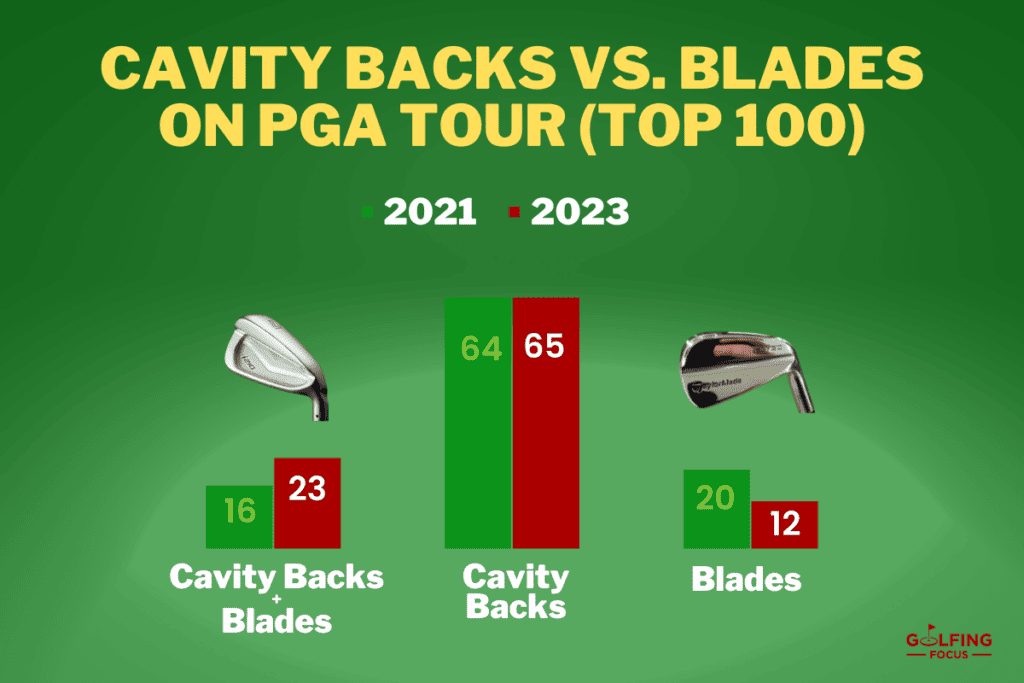
Combo Iron Sets Are Increasingly Popular on the PGA Tour
Our 2023 analysis of which pros are using cavity backs and which are using blades again also threw up a clear trend amongst the top 100 on the PGA Tour.
And that is the ‘mixed set’ of irons that many are now choosing to use.
Long gone are the days when the pros would have a consistent iron set from a 2 or 3-iron all the way through to a pitching wedge and today it seems clear that the best players in the world are looking at almost every individual iron to see if there is a better alternative.
We found 42 of the top 100 PGA Tour pros (up from 27 a couple of years ago!) are opting for a ‘mixed set’ of irons where they use more than one iron model and indeed some of them are actually using 3 separate models of irons.
Cameron Young for example uses a cavity back Titleist T200 4-iron and 620 CB 5-iron before choosing 620 MB blade irons from 6-iron through to 9-iron.
2020 USPGA and 2021 British Open Champion Collin Morikawa meanwhile uses a Taylor Made P770 4-iron but then switches to TaylorMade P7MC irons for his 5 and 6-irons before opting for the P730’s from his 7-iron to pitching wedge.
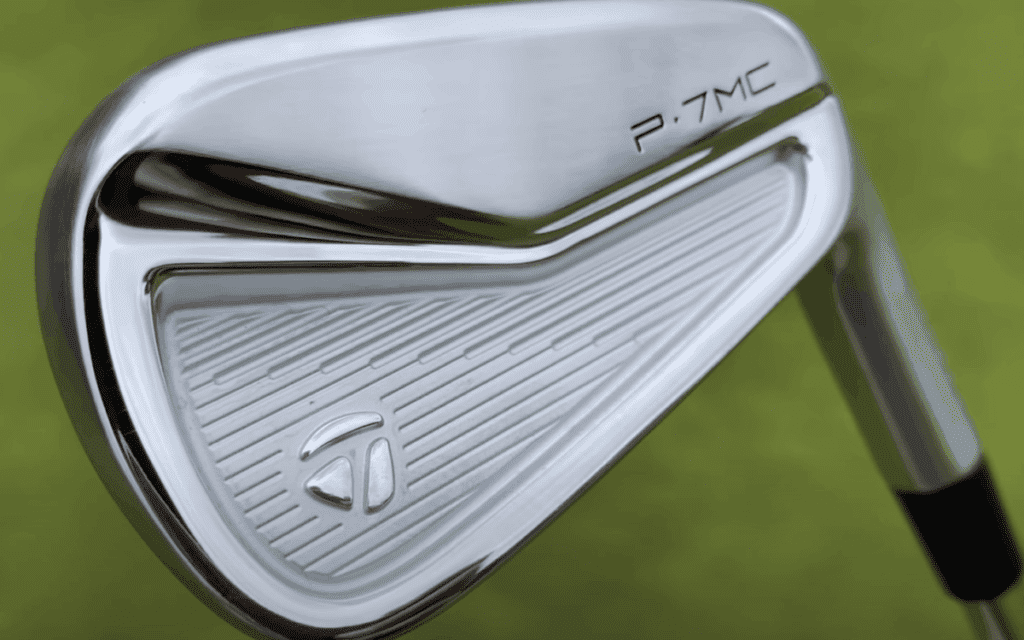
This trend of opting for more forgiving cavity or ‘hollow head’ irons for longer irons before choosing blades for shorter irons seems to be a clear one in the pro ranks and as such we can again see that the question about which irons the pros use is not as clear cut as it once was.
Indeed pros including Tony Finau, Maverick McNealy, Daniel Berger, and Brooks Koepka even mix the brands of irons they use in their combo sets.
[Editor’s note – ‘hollow’ head/body irons have an ‘internal cavity’ to remove inefficient weight and therefore increase forgiveness without the need to make the club head the size of a large cavity back .]
When you add ‘driving’ or ‘utility’ irons into the picture also the idea of the ‘mixed/combo’ set becomes even more evident as in addition to the 42 pros we noted who have an identifiable mixed set amongst their standard irons a further 22 players, add a 2, 3, 4 or even 5 utility iron to their bag.
So if we consider driving irons as ‘standard’ irons we can see close to two-thirds of the top 100 players on the PGA Tour opt for a ‘mixed set’ of irons.
We put utility irons in a comparative bucket with hybrids and high-numbered fairway woods – and you can see what individual driving irons the top 100 are using here – but what is also fascinating to see among the best players on tour is the multiple different combinations of numbers of irons that they carry in their bag.
While 10% of the top 100 on Tour stick with the traditional 3-iron to pitching wedge iron setup, including Tony Finau and Billy Horschel and Brooks Koepka, there are two more popular setups within this elite group.
42% of the best 100 on the PGA Tour prefer to start their iron set with a 4-iron and carry irons all the way through to a pitching wedge while 28% choose instead to use only a 4-iron through to 9-iron before switching to specialist wedges.
These percentages are again up on a couple of years ago, when we found 29% chose 4-iron to pitching wedge and 22% played 4-iron to 9-iron, so it seems an increasing number of the best pros on the PGA Tour are settling on one of these two iron set ups.
The chart below shows the full range of iron set ups currently being used by the top 100 which interestingly also include a few anomalies.
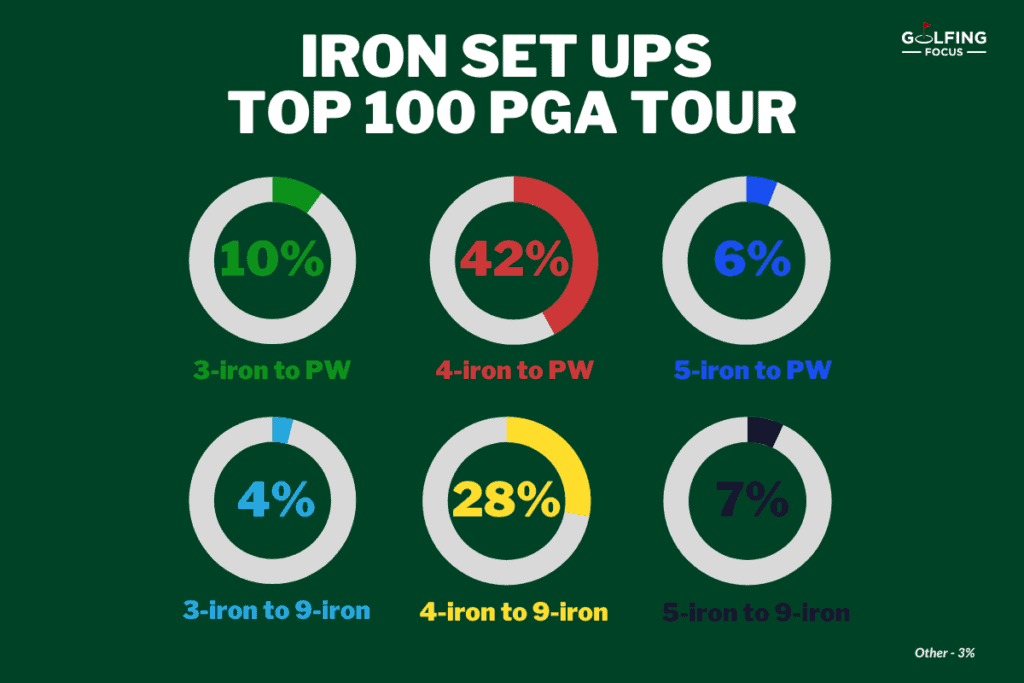
Brian Harman for example doesn’t start his traditional iron set until a 6-iron choosing a 4 and 5-iron Titleist U-500 driving iron while Lucas Herbert doesn’t use a 5-iron at all playing with a 4-iron and then a 6-iron to pitching wedge.
Hudson Swafford meanwhile has two different 5-irons in his bag – one Titleist T200 and one Titleist 620 CB.
Taking all this into account one thing seems crystal clear therefore when it looking at the iron set ups of the top 100 players on the PGA Tour.
There is no longer such a thing as a ‘standard’ set of irons.
Breakdown of Irons Used on the PGA Tour
When looking at your clubs it is always natural to wonder what the best pros in the world are using by comparison.
Discussions about which tour players are using the latest PING or Callaway or Mizuno or PXG irons for example are common throughout the golfing world and knowing some pros are using the same Titleist T200 or Srixon ZX7 or TaylorMade P770 irons as you is a good feeling.
So to satisfy that curiosity we’ve listed below the complete breakdown of all the irons being used by the top 100 PGA Tour players, including golfers who only use one individual iron of a particular model.
Before you go …
Ever wondered how far the pros hit their irons compared to amateurs and how your own iron distances stack up against other regular players?
Read our next article to find out how far you should hit your irons according to your handicap, age, and swingspeed!
How Far Should I Hit My Irons? By Handicap, Age & Swingspeed
Other top articles related to this topic:
- What Clubs Do Pro Golfers Use? Top 100 PGA Tour Player Guide
- What Driver is Most Used On the PGA Tour? Top 100 Player Analysis
- The Fairway Woods Used by the Top 100 PGA Tour Pros
- What Hybrid Golf Clubs Do the Top 100 PGA Tour Pros Use?
- What Driving Irons Do the Pros Use on the PGA Tour?
- What Wedges Do the Pros Use? Top 100 PGA Tour Player Analysis
- What Putters Do the Pros Use? Top 100 PGA Tour Player Guide
- What Golf Balls Do the Pros Use? Top 100 PGA Tour Players Breakdown
- What Golf Grips Do the Pros Use? Top 100 PGA Tour Player Guide
- What Shafts Do Pros Use? Top 100 PGA Tour Player Breakdown
- Do Pros Use Regular or Stiff Shafts? They’re Stronger Than That!
- Do Pros Use Graphite or Steel Shafts? It Depends Which Club
- Do Golf Pros Wear Metal Spikes? But They are Banned!
- Most Popular Driver on LPGA Tour? Top 50 Player Guide
- What Irons Do LPGA Players Use? Top 50 Pros Analysis
- What Golf Balls Do LPGA Players Use? Top 50 Player Breakdown
- What Drives the Senior Tour Pros? Most Popular Driver on Champions Tour
- From Tee to Green: Analyzing What Golf Balls Champions Tour Pros Use
- How Do Pros Hit the Ball So Far? It’s Not About the Equipment!
Leave a Reply Cancel reply
Your email address will not be published. Required fields are marked *
Save my name, email, and website in this browser for the next time I comment.
RECENT ARTICLES

The Go-To Fairway Woods of Senior Tour Champions (2024)

Flexible Friends: Uncovering the Shafts Champions Tour Players Use (2024)

In the Bag: Unpacking the Clubs Champions Tour Players Use (2024)

Champions’ Choice: The Most Used Irons on the Champions Tour (2024)

From Tee to Green: Analyzing What Golf Balls Champions Tour Pros Use (2024)
LEGAL INFORMATION
This site is owned and operated by Golfing Focus Limited, a private limited company whose registered office is in London, UK. Golfing Focus Limited is a participant in the Amazon Services LLC Associates Program, an affiliate advertising program designed to provide a means for sites to earn advertising fees (at no cost to you) by linking to Amazon.com. Golfing Focus Limited also participates in other affiliate programs with the eBay Partner Network, FlexOffers, CJ.com, Svorn and other sites and is compensated for referring traffic and business to these companies (again at no cost to you).
Our Socials
An Honest & Complete Review of Srixon ZX7 MKII Irons

Matt Callcott-Stevens started playing golf at the age of 4 when Rory Sabattini's father put a 7-iron and putter in his hand. He has experienced all the highs and lows the game can throw at you and has now settled down as a professional golf writer. He holds a Postgraduate in Sports Marketing and has played golf for 28 years. Current Handicap: 8
View all posts by Matt Stevens
In this full review of the Srixon ZX7 MKII irons, I relay the findings of my colleague Morne, a low single-digit handicapper. He took the brand’s latest player’s irons for a spin to check their distance, playability, forgiveness, and spin.
After assessing the Trackman data, acoustics, feel, and limited leniency, we decided they are best off in the hands of skilled ball strikers.
By the end of this post, you’ll know what technology drives these golf clubs, what we like about them, and what Srixon could have done better to enhance them.

Table of Contents
Overall Score: 8.0/10
Players irons, muscle back cavity back construction, 1020 carbon steel, tour v.t. sole, progressive grooves, progressive offset, workability, low forgiveness, impressive distance, additional roll, mid – high apex, rapid clubhead speed, low long and mid iron backspin, workable flight, clubhead speed, compact profile, increased roll, lower mid iron spin, less forgiving, moderately expensive, overall rating and thoughts.
After analyzing my colleague’s data and watching him take the new ZX7 range for a spin, I’m impressed overall. These irons are compact, sound incredible, produce low spin and rapid speed on long shots, and enhanced revolutions around the green, giving you the best of both worlds.
Our honest review of the Srixon ZX7 MKII irons reveals a workable, long, mid-to-high launching golf shot. The results my colleague produced during testing reaffirm that these workable, marginally lenient irons are best left in the hands of low-handicap golfers. If you’re a single-figure player who can handle less forgiveness, take a closer look at the ZX7 MKII irons.

Looking at the ZX7 MKII irons, I immediately noticed their modern player’s iron construction. Srixon did away with the traditional muscleback or blade structure, instead opting for a cavity back to boost stability.
The cavity back allowed Srixon engineers to pack innovative game improvement technology into the clubhead for improved consistency. Although these irons are less forgiving next to the Srixon ZX4 and ZX5 MKII, they still provide more stability and consistency than other musclebacks I’ve tested recently.
The muscle back construction provides an extra layer of support on off-center strikes by working to stabilize the golf club. Morne reported that despite a couple of mishits, he still managed to preserve an element of ball speed for a suitable launch under the circumstances.
Despite the consistency of the construction, it still allowed my colleague to work the ball left and right on approach.
The Japanese brand developed the ZX7 MKII range with 1020 Carbon Steel which my colleague relished for its soft feel. Morne suggested it was smooth off the clubface and better suited to his needs than the ZX5 distance irons ( which you can read a full review of here ).
As a lower handicapper, my trusted colleague welcomed the overall feel and feedback induced by the quality 1020 carbon steel. This further boosts the case for the ZX7 MKII, suiting skilled golfers who demand precision.
We welcomed the presence of the PureFrame, which drowned out vibrations on off-center strikes. Although my mid-handicap self isn’t suited to the PureFrame, I found the PureFrame enhanced the consistency and control of these irons over traditional player’s clubs.
Srixon engineers forged the PureFrame directly behind the sweet spot, encouraging cleaner contact with the golf ball. Strikes out of the center were pure, and the energy transfer was better than I achieved with most tour-grade irons.
My lower handicap colleague felt it offered ample forgiveness to help his higher swing speed produce optimal contact on all shots. Morne explained that despite the stability of the PureFrame, the irons still enabled workability.
The ZX7 MKII irons sport a Tour V.T. sole, which we found navigated the fairway and cabbage patch unhindered. We discovered that the wedges glided swiftly across the bunker and offered a higher bounce on the leading edge to prevent the clubhead from digging into the sand.
Srixon masterfully applied a lower bouncing trail edge to the club, which made it easier for Morne to manipulate the clubface. When he wanted increased loft on his shot, he felt he could open up the clubface unhindered. Similarly, it was easy for him to close the clubface, strengthen the loft and promote a draw shape.
The versatility of the sole is an asset to skilled golfers seeking to get creative on the golf course and overcome any hazard.
My co-worker raved about the Progressive Grooves on the ZX7 range, which executed a delicate balance of distance and spin. The long irons were kitted with a broader groove structure which helped lower spin in the long and mid-iron shots for optimal speed, launch, and distance.
However, the tables turn from the 8-iron and weaker, where Morne relished the tighter, deeper grooves built to maximize friction. The more friction he imparted onto the ball, the greater his spin levels with the short irons and wedges increased for exceptional distance control and accuracy on shorter shots.
Again, my colleague suggested that the progressive design suits lower handicappers seeking optimal workability, distance on approach, and maximum greenside spin.
I’ve already mentioned that the ZX7 MKII irons offer minimal forgiveness for the average player, but it does carry some lenient features. The progressive offset design sees high degrees at the top of the bag before reducing as it reaches the wedges.
Although the lower lofted ZX7 irons are lightly offset, my volunteer reported that it offered an element of reprieve in squaring the clubface at contact. However, as the set progressed into the mid and low irons, the irons feature minimal offset, prompting enhanced workability when attacking the flag.
Contrary to the low-lofted long irons in modern-day distance sets, Srixon kept it traditional with a moderately lofted composition. A 3-iron is the lowest lofted iron in the set at 20°, while the approach wedge is set at 51°.
When I compared the ZX7 MKII to the ZX4 MKII, I found that the latter, more forgiving irons are stronger than the ZX7. The ZX4 4-iron is 21°, a full degree lower than the ZX7, but the loft differences were more notable at the bottom of the bag.
The ZX7 pitching wedge that Morne tested was bent to 46°, compared to the 43° ZX4 wedge. As a lower handicapper, our gracious volunteer felt the traditional lofts delivered a favorable mid-to-high launch.
Srixon opted for the Nippon N.S. Pro MODUS3 Tour 120 shaft, built for higher swing speeds like Morne. He lets a driver rip at an average of 110 mph, making him an ideal candidate to thrive with the MODUS3 Tour 120.
The shaft carries a stiff flex and produces a low 1.7° of torque, giving my colleague the added stability he needed into impact. Morne found the shaft was easier to control than super flexible constructions.
Nippon fitted the shaft with a high kick point, prompting a lower launching golf shot, perfect for higher swing speeds seeking greater control.
My colleague tested ZX7 MKII irons with Golf Pride Tour Velvet 360 grips which he praised for their all-weather control and moisture-wicking tendencies. The rubber-blend compound enhanced his traction and control of the irons owing to their non-slip surface design.
Whenever I’ve held a Golf Pride Tour Velvet 360, I also appreciate the moderate feedback it provides. However, if you’re an arthritis sufferer or prefer a softer feel, I recommend the Golf Pride CP2 range.
Morne swung with a standard-size grip, which works well for experienced, controlled hands like his. If you prefer a thicker grip to promote reduced tension, try a midsize or oversize design.

Performance
The ZX7 MKII are expensive compared to standard game improvement cavity backs. Yet, next to other player irons, I find them priced fairly. A 6-club set consisting of a 5-iron through pitching wedge fetches $1,030 at my local retailer.
However, I suggest considering secondhand or previous edition sets if you hope to find a set of forged player’s irons for less than Srixon.
Morne described the feeling as “silky smooth” off the clubface, a sensation he welcomed with open arms. He explained that the feeling was softer at impact compared to the ZX5 MKII irons that were heavy and did not offer appealing feedback.
The 1020 carbon steel prompted the pure feel off the face, but my club tester also experienced the value of the PureFrame. He showed that he was human after all and struck the ball off-center, and he was impressed with the lack of vibrations.
When I mishit a blade, I experience a harsh shock running up the shaft. My colleague explained the vibration-damping qualities prevented this experience and offered better protection to his palms.
After reviewing video footage from Morne’s test, I noticed the irons produced crisp acoustics. The ball leaves the clubface accompanied by an amplified thwack which was constant, and the mark of 1020 carbon steel.
In my experience, Perimeter weighted cavity backs are more likely to produce a clicky sound, which skilled players despise. Despite the ZX7 sporting a muscle back cavity, the engineers avoided impacting the quality of the audio.
Thanks to the expert design of the V.T. Sole, my colleague found it easy to adjust the angle of the clubface for optimal shape and launch. The lower bounce trailing edge simplified the task of opening and closing the clubface to induce the desired shape.
Although the long irons carried moderate offset, my volunteer found it easy to produce a draw or a fade. As the offset reduced and the loft increased, he reported enhanced workability and control on approach.
Srixon did pack multiple game improvement features into ZX7 MKII irons. However, after examining my colleague’s performance, I noticed that his mishits received a harsher punishment from the ZX7 MKII over the ZX5 range.
The reduced offset of the irons compared to super game improvement irons exacerbated hooks and slices, making it a no-go for high handicappers. My loyal tester explained that the center of gravity (CG) sits directly behind the sweet spot, which is golden for clean contact and a smooth feel.
High handicappers tend to perform best with low CG irons that encourage a hassle-free, elevated launch.
My colleagues’ carry and total distance results surpassed his numbers achieved with the ZX5 range. He averaged 174.65 yards with the ZX7 MKII 7-iron, 0.3 yards further than his results with the ZX5 MKII.
The optimal total distance is a welcome sight for low handicappers hunting maximum length on approach. Its adequate velocity, controlled spin and a consistent mid-to-high launch combination aided our volunteers’ quest for increased yards from the fairway.
I was intrigued to learn the level of roll my colleague produced with the ZX7 irons, increasing his distance on approach shots. He delivered an average of 7.32 yards of roll with his 7-iron on approach, helping him achieve extra length with his irons.
Although the extra distance is generally welcome, he reported challenges in his distance control, as a result. My low-handicap colleague is constantly hunting for birdies and enjoys attacking the flag with mid and short irons.
However, 7.32 yards of roll can complicate this mission, forcing him to readjust his swing and set up to account for the increased propulsion on the ground. It is easier when your ball bites rapidly and stops dead, preventing you from altering your approach shot to account for the roll.
Despite the reduced forgiveness in these irons, my buddy found them relatively easy to launch. His launch degree angle was over 3 degrees higher than a PGA Tour pro achieves with a 7-iron. Moreover, his apex soared to 33.68 yards, 1.68 yards higher than average 7-iron apex on the PGA Tour.
My colleague leveraged the stability of the PureFrame and clean turf interaction of the V.T. Sole to launch the ball high and long. Naturally, an elevated apex won’t always be welcome by fast swing speeds due to the reduced flight control.
However, they offer a consistent way of getting airborne for slower swing speeds and low handicappers such as seniors.
My trusted club tester conjured up a speedy 95.3 mph average clubhead speed with the ZX7 7-iron. After comparing Morne’s ZX7 and ZX5 results, we discovered that his ZX7 numbers outperformed the ZX5 by 1.3 mph.
The explosive speed down to impact helped my colleague optimize energy transfer and maximize energy transfer to boost compression. The ball left the clubface with explosive pace and low spin to maximize carry and total distance, owing to enhanced ball compression at contact.
While I watched the Trackman data on my colleague, I noticed him generating exceptionally low long and mid-game backspin. Morne typically produces less backspin than most golfers, given his ability to thoroughly compress the ball at contact.
He generated 6016 rpm backspin with the ZX7 range, over 600 rpm lower than his results with the ZX5 range. When I compared my buddy’s results to the Trackman PGA Tour averages, I found him producing 1000 rpm less backspin with the ZX7 MKII 7-iron than most tour pros.
The reduced spin combined with an explosive ball and clubhead pace, prompts powerful flight and extra roll upon landing. These factors guided my colleague to increased distance on approach.

What I Like About The Srixon ZX7 MKII
The combination of rapid ball speed, reduced spin, and a mid to high launch gifted my volunteer impressive distance. Morne gained marginally more with the ZX7 irons over the ZX5 range highlighting his optimal energy transfer at contact for a powerful launch, flight, and increased roll.
As I watched my colleague launch iron shots into the air, I noticed he could effortlessly shape his ball on approach. The lower bounce trailing edge helped him adjust the clubface position to induce a draw and a fade.
A draw is his go-to shot, and I certainly saw more right-to-left curving strikes. However, he still produced a controlled fade on a few occasions.
After deliberating with my buddy, we agreed that the ZX7 MKII irons produce outstanding clubhead speed compared to their peers. Compared to the ZX5 range, Morne conjured up 1.3 mph faster clubhead speed, which did wonders for his compression at contact.
The explosive clubhead ignited rapid speed and low spin on the golf ball for a medium high launch and long distance.
The Progressive Grooves were a stroke of genius from the Dunlop Sports sister brand. I noticed they helped Morne lower his spin revolutions and preserve ball zip with long and mid irons before ramping up the rpm around the green.
The progressive design gives superior golfers distance on long shots before enhancing spin and control on shorter strikes.
Despite featuring a muscle back cavity design, I was impressed by the clean, compact appearance of the Srixon ZX7 MKII irons. They aren’t as refined as a traditional blade set because space was needed to insert game improvement technology.
However, they’re a prime representation of modern players’ irons which embrace technology without hampering appearance and workability.

What I Dislike About The Srixon ZX7 MKII
My colleague Morne welcomed the distance produced by the added roll on approach but ultimately despised the character trait. The added roll made it challenging to attach flagsticks and optimize distance control.
On a few occasions, my colleague misjudged the roll, and the ball ended up running off the back of the dancefloor.
The reduced mid-iron spin proved challenging to achieve optimal distance control on approach. When my colleague failed to account for the roll, he found his ball running off the green, leaving him to scramble to get up and down instead of attempting a birdie putt.
Compared to other modern-day iron sets, the Srixon ZX7 MKII offers limited forgiveness over the ZX4 or ZX5 range. It wasn’t a train smash for the fast swing and clean ball striking of my colleague. However, the average mid and high handicapper will be severely punished for off-center strikes.
My final gripe about the Srixon ZX7 MKII irons is their price tag. It’s not as ludicrous as other players’ iron sets, but they are pricey compared to cavity-back game improvement irons. Unless you’re a serious golfer who plays regularly, you might struggle to justify spending approximately $1,000 for a set of irons.
Features PureFrame technology, utilizing a thicker portion of 1020 Carbon Steel for enhanced impact feel. Has a thin topline, narrow sole, short blade, and minimal offset for maximum workability. Progressive grooves optimize performance across all conditions. Tour V.T. Sole improves turf interaction for consistent, solid strikes.
Leave a Reply Cancel reply
Your email address will not be published. Required fields are marked *
Save my name, email, and website in this browser for the next time I comment.
Matt Stevens

Golf Workout Program is reader-supported. When you buy through links on our site, we may earn an affiliate commission.
Recent Posts
- The Pros and Cons of a Baseball Swing in Golf
- What is a Weak Golf Grip and Is It Better Than Other Grips?
- An Honest Review of Bridgestone e6 Golf Balls
- TaylorMade Tour Response Review – Worth The Price?
- What is The Reverse Overlap Putting Grip & Should You Use It?
- The 10 Best Golf Balls for Mid Handicappers [2024 Edition]
- What All Tall Golfers Need to Know to Improve Their Game
- An Honest Review of The Callaway Mavrik Driver
- How Far You Should Be Hitting a 7 Iron (Based on Skill)
- The 10 Finger Golf Grip: What Is It & Should You Use It?
Subscribe to our newsletter for golf improvement tips and great deals! Sign up today!

7 Most Popular Irons On The PGA Tour (2023 Update)
Nowadays, the scrutiny on what golf irons the pros are using is greater than ever, and club manufacturers are more aware of this perception by the golf playing and golf watching audiences around the world. So, what are the most popular irons on the PGA Tour?
The 7 most popular irons on the PGA Tour are :
While drivers often take center stage, the real focus is on the irons that the pros use, as those constitute a larger percentage of shots played and hit during tournaments than those of drivers, but remember, a putter is the club used the most.
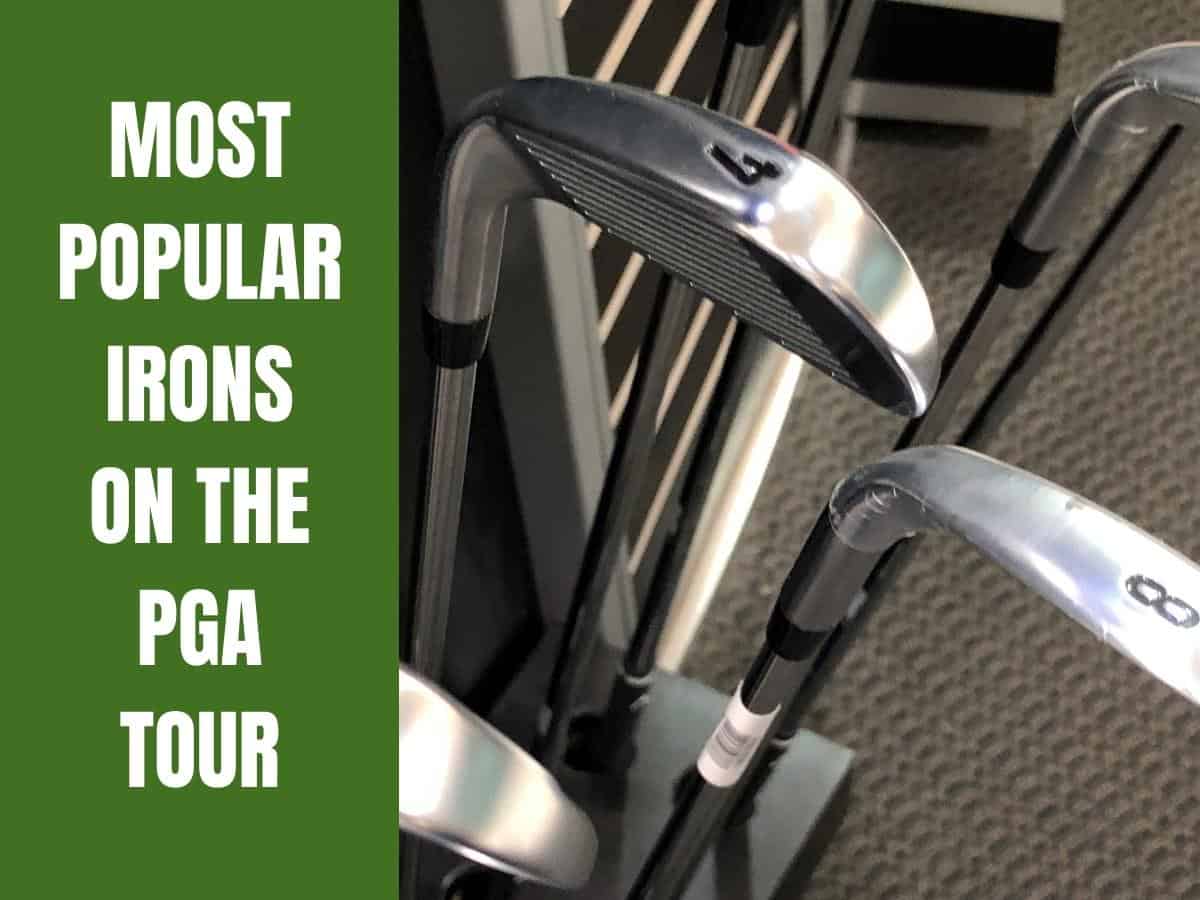
And to find out the most popular irons on the PGA Tour, keep reading!
PGA Tour Players Mix And Match Their Irons
Many PGA Tour players don’t have complete sets of one brand of irons but mix and match between brands and clubs based on what irons they prefer. So shorter irons could be one brand and longer irons another.
You may also find that some players have a complete set of irons from 4-PW and then have a different brand for a three iron or driving iron. The stats below are based on the popularity of the iron brands found in the bags of tour pros, and you may find some players using two different iron brands.
With this discussion, we are talking about irons only and not wedges, as that would be a separate discussion on its own.
Most Popular Irons On The PGA Tour
The most popular irons on the PGA Tour are Titleist, Callaway, Ping, TaylorMade, Srixon, Mizuno, and PXG. These are the most common irons found in the bags of PGA pros currently on tour, and the differences between the most popular and the least popular are significant.
So, let’s start with the least popular.
#7 – PXG Irons
PXG is a brand making slow but steady inroads into the PGA Tour player’s choice of clubs, and five top-ranked PGA Tour pros use PXG irons in their bag. Players include Jason Kokrak, Luke List, Joel Dahmen, James Hahn, and Zach Johnson.
PXG ranks higher in popularity than Cobra or Wilson on tour and some newer brands like Miura, Honma, or Bridgestone.
Which PXG Irons Do These PGA Tour Pros Use?
- Luke List and James Hahn play PXG 0311 T Gen 4 irons.
- Jason Kokrak uses the PXG 0311 T Gen 4 irons.
- Joel Dahmen uses the PXG 0211 ST irons.
- Zach Johnson plays the PXG 0311 T Gen 1.
Who Is PXG Golf?
PXG (Parsons Extreme Golf) was founded in 2014 by Bob Parsons, most well known as the founder of Go-Daddy. His vision was to make “the sexiest, most forgiving golf clubs that launch higher, go farther, feel softer, and have a sweet spot the size of Texas!”
PXG currently holds over 200 patents and focuses on providing clubs that look like blades but “feel like butter.” With the backing of Dr. Parsons and limitless resources, they began to research the various alloys and materials to produce the world’s finest golf clubs.

Even though PXG irons do come at a price, the design of their 0311 sets of irons is turning heads and getting great reviews from players and golf influencers alike.
Using a hollow construction, as many of the new irons are, and filling it with a thermoplastic-elastomer filling and tungsten weights on the perimeter provides forgiveness and great speed and sound off the clubface.
Whether for high/medium handicappers or more adept players, PXG 0311 irons are certainly delivering on the Parsons promise.
You can check out a wide selection of PXG irons at Global Golf. They also have a ‘used’ selection of irons from owners who trade in their used clubs when upgrading. You can pick up some good deals here if you have a lower budget or like to change your clubs regularly.
#6 – Mizuno Irons
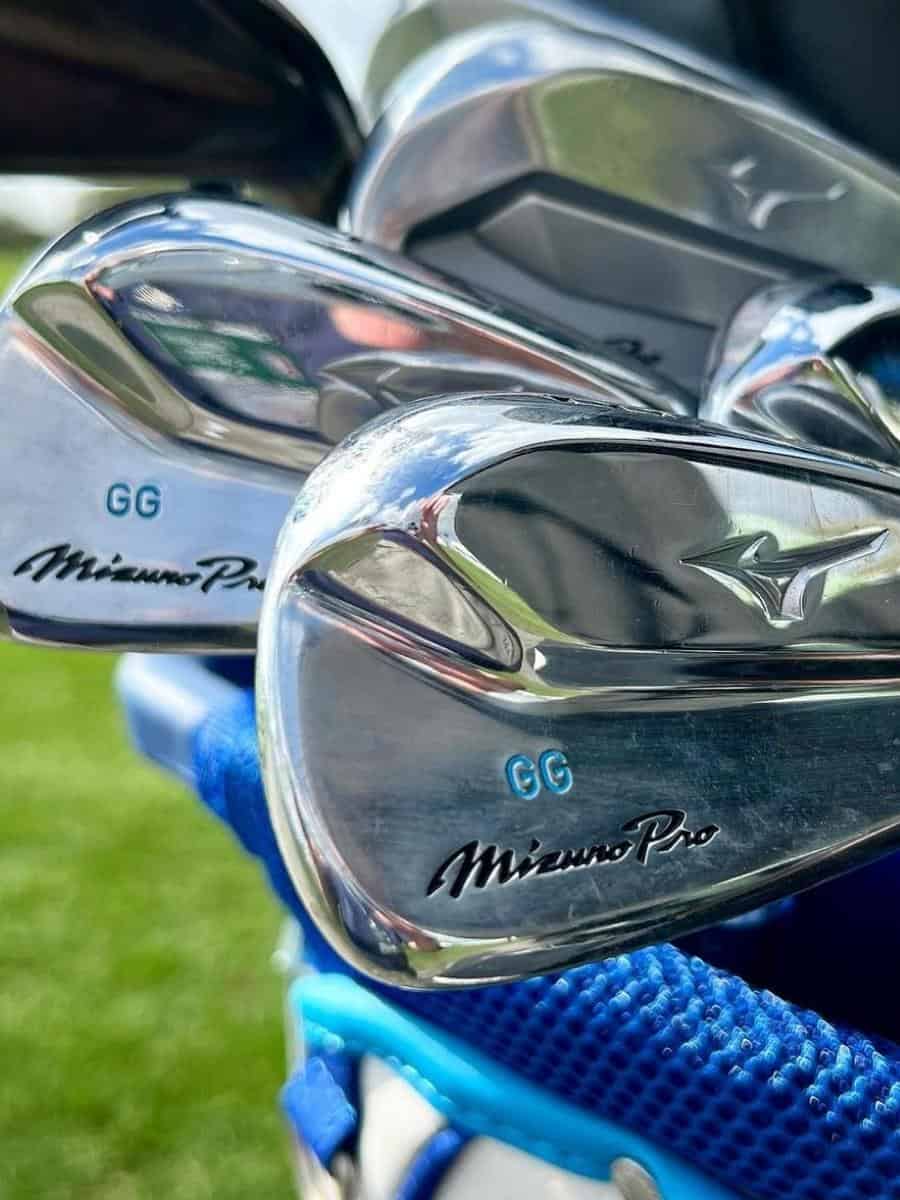
Coming in at no.6 is a well-known and long-standing brand originating in Japan. It arguably produces some of the finest irons for the PGA Tour and amateur golfers. Mizuno ranks slightly higher in popularity than PXG, but there is a big gap between Mizuno and the no.5 ranked irons, Srixon.
Currently, seven players on the PGA Tour use Mizuno irons: Luke Donald, Paul Casey, Matt Jones, Lucas Glover, Jazz Janewattanond, Keith Mitchell, and Cameron Smith.

Which Mizuno Irons Do These PGA Tour Players Use?
Looking in the bag, you will find a mix of sets from the JPX 919 irons to the Pro Fli Hi and MP 5 and Pro 221 and Pro 225 irons. The players in this list use the following irons:
- Paul Casey – Mizuno MP-5 and Mizuno JPX919 Hot Metal Pro
- Matt Jones – Mizuno Pro Fli-Hi
- Lucas Glover – Mizuno JPX919 Tour
- Jazz Janewattanond – Mizuno JPX919 Tour
- Keith Mitchell – Mizuno Pro 225 and Mizuno Pro 221
- Cameron Smith – Mizuno Pro Fli-Hi
- Luke Donald – Mizuno Pro 225, Mizuno Pro 221, and Muzuno Pro Fli-Hi
Mizuno, as a brand, has produced clubs for both professionals and mid to low handicappers offering some forgiveness and providing superb control for ball shaping and a great feel off the clubface.
If you’re in the market for Mizuno irons, check out the Global Golf website, where you can find the latest models and often at the best prices. Amazon also has a selection of Mizuno iron sets.
#5 – Srixon Irons
Japanese brand Srixon is a subsidiary of Sumitomo Rubber company that owns Dunlop Sport. Srixon holds more patents for golf balls than any other brand in the market; while not as popular as the Pro V1, Srixon balls are well respected and played by quite a few pros. I am a regular Srixon ball user myself.
Twelve players on the PGA Tour are currently using Srixon irons: Shane Lowry, Sepp Straka, Scotty Scheffler, Ryan Palmer, Marcus Armitage, Martin Laird, Hideki Matsuyama, Keegan Bradley, Harold Varner III, Graeme MacDowell, JJ Spaun, and Brooks Koepka.
Which Srixon Irons Do These PGA Tour Players Use?
Looking through the bags of these players, you will find a mix of irons, with the ZX 7 irons being the most popular in this group. There are also the ZX 5 irons, the Z Forged, Z 785, and Z U65 irons.
Except for Martin Laird, Ryan Palmer, Hideki Matsuyama, and Graeme MacDowell, all the other players use the ZX 7 and ZX 5 irons. Martin Laird and Ryan Palmer use the Z 785’s, MacDowell also uses the Z 785’s and the Z 745, Matsuyama uses the Srixon Z-Forged irons, and Spaun uses the Z U65 irons.
If you want to check out the best Srixon irons that are popular right now, you can find them at Global Golf. You can also check out the current pricing of Srixon irons over on Amazon.

#4 – TaylorMade Irons
As one of the golfing world’s most well-known and iconic brands, TaylorMade scooped possibly the biggest star ever when Tiger Woods signed to them and started to use their P7TW irons after Nike announced they would no longer be making clubs.
TaylorMade also produces some high-quality golf balls and while they are not in the same popularity league as the Pro V1 – let’s face it, which golf ball is – some of the best use their irons in the game.
With 18 players on the PGA using TaylorMade, they are far ahead of Srixon in the popularity ratings. Some of the big names on tour using TaylorMade irons include the likes of Collin Morikawa, Dustin Johnson, Jason Day, Daniel Berger, Justin Rose, Martin Kaymer, Rory McIlroy, Tiger Woods, Sergio Garcia, and Tommy Fleetwood.

Which TaylorMade Irons Do These PGA Tour Players Use?
TaylorMade has a variety of irons that feature PGA players’ bags. A popular one is the P7TW irons found in the bags of players like Tiger Woods, Tommy Fleetwood, Martin Kaymer, Scotty Scheffler, and Lucas Herbert.
You can read more about Tiger’s irons in this article; What Irons Does Tiger Woods Use ?
The other popular irons from TaylorMade are the P7MC (available on Amazon), and those can be found in the bags of players like Justin Rose, Mathew Wolf, and Robert McIntyre. The P770 irons (also on Amazon) have a good following with PGA Tour players, and names like Rory McIlroy, Collin Morikawa, and Harry Higgs feature these irons in their bags.
I do like the P770s, but maybe I’m a little biased as my eldest son uses these clubs. Like me, he plays left-handed and seems well suited to them.
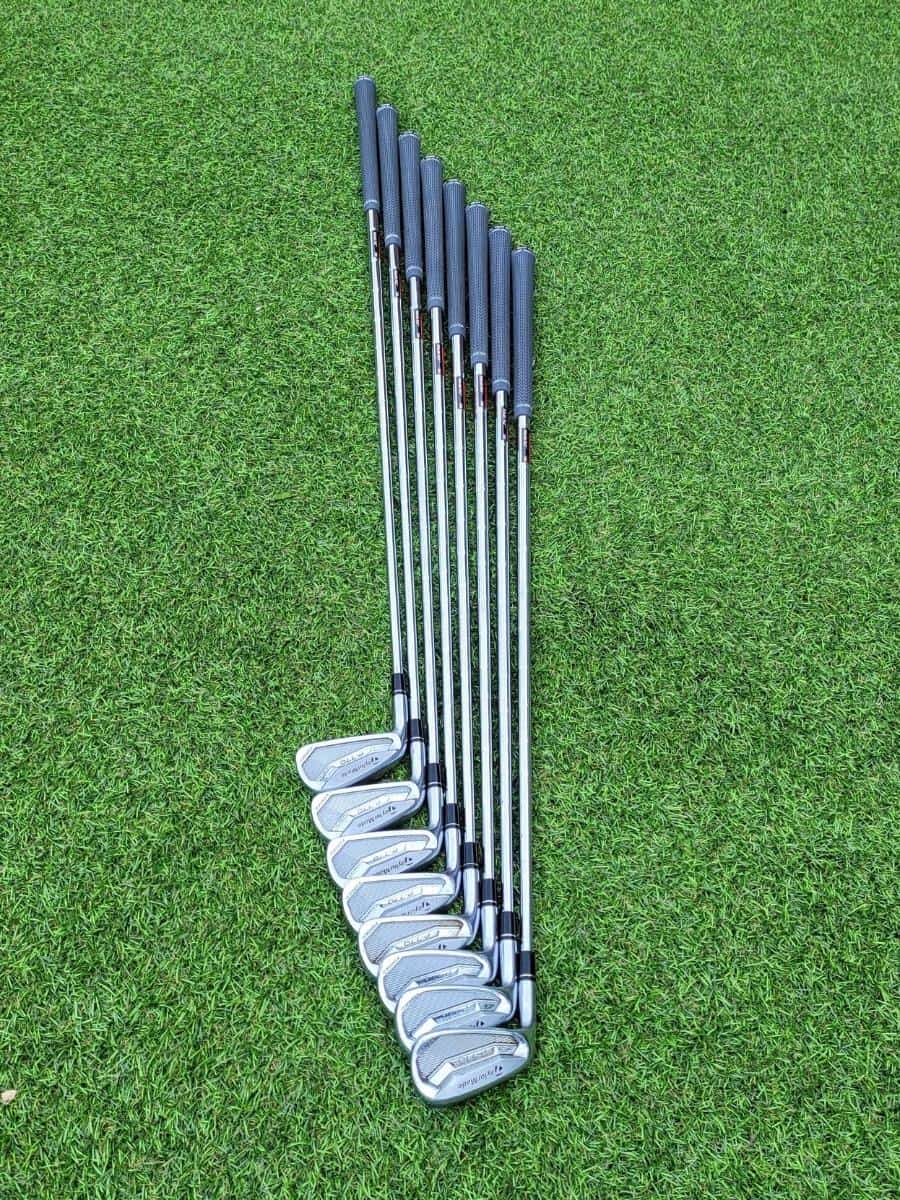
Sergio Garcia and Dustin Johnson feature the P730 irons, as Collin Morikawa and the P790 irons are used by Martin Kaymer, Lucas Herbert, and Jason Day. Remember that within the TaylorMade stable, there are a variety of irons, and pros that use TM often pull clubs from different model sets to complete their own.

#3 – Ping Irons
Ping’s influence on the game of golf is impressive at both the amateur and pro levels; they arguably provided golf’s greatest entertainer, Seve Ballesteros, with his clubs and the innovation of the world’s first game improvement irons some five decades ago.
The subsequent interest of professional players in the cavity back irons, Ping is a global leader in golf clubs, and it shows on the PGA Tour.
As the third most popular iron on tour, Ping features some very high-profile players, and 19 tour players feature this brand.
Only marginally ahead of TaylorMade, players that use Ping irons include the likes of Bubba Watson, Louis Oosthuizen, Corey Conners, Harris English, Joaquin Niemann, Mackenzie Hughes, Stewart Cink, Lee Westwood, Tony Finau, Tyrell Hatton, and Viktor Hovland.
What Ping Irons Do These PGA Tour Pros Use?
The Ping i210 irons are the most popular amongst this playing group, with players like Viktor Hovland, Lee Westwood, Tyrell Hatton, Stewart Cink, Mackenzie Hughes, Sebastion Munoz, Sahith Teegala, and Matt Fitzpatrick all having the i210 in their bags.
The Ping iBlades are used by Corey Conners, Guillermo Mita Perreira, Joaquin Niemann, and Victor Perez. The Ping Blueprint irons are used by Louis Oosthuizen, Tony Finau, Seamus Power, and Harris English.
Other Ping irons used are the Ping S55 played by Bubba Watson and Carlos Ortiz, as well as the i500 (Makenzie Hughes), G 410 Crossover (Harris English), and the i59 (Sahith Teegala).

#2 – Callaway Irons
Callaway irons are the second most popular irons used on the PGA Tour behind Titleist – and there is a big difference between the number of players using Callaway and Titleist. In contrast, the numbers 3, 4, and 5 most popular irons are closer to the number 2 spot than the no. 2 is to the no. 1 most popular iron on the PGA Tour.
Between Callaway and Ping, there is only a difference of 5 players that use Callaway, so those gaps are pretty close.
Callaway is another massive global brand. Of the 24 PGA Tour players that use their irons, many South African players feature, such as Branden Grace, Christiaan Bezuidenhout, Dylan Frittelli, Erik Van Rooyen, and prominent international stars.
Phil Mickelson, Alex Noren, Daniel Berger, Danny Willett, Henrik Stenson, Francesco Molinari, Justin Rose, John Rahm, Kevin Na, Kevin Kisner, Sam Burns, Xander Schauffle, Siwoo Kim, and Marc Leishman all use Callaway irons.
You know you are doing something right when you can boast this illustrious list of players using your irons!
What Callaway Irons Do These Pro Players Use?
The two most popular iron sets are the Callaway Apex series and X Forged irons, while a few players on tour use the Rogue and Legacy irons.
With the Apex series, the MB, TCB, and Pro feature prominently, with the X Forged series irons coming in a close second. Let’s look at which PGA players use these irons.
- Callaway Apex TCB – John Rahm, Marc Leishman, Matt Wallace, Sam Burns, Xander Schauffle, Franceso Molinari, Danny Lee, and Branden Grace.
- Callaway Apex MB – Phil Mickelson, Talor Gooch, Matt Wallace, Danny Lee, Erik Van Rooyen.
- Callaway Pro and Pro UT – Jazz Jannewattanond, Alex Noren, Kevin Na, Kevin Kisner, and Siwoo Kim.
- Callaway X Forged UT/CB – Phil Mickelson, Talor Gooch, Maverick McNealy, Justin Rose, Dylan Frittelli, Erik Van Rooyen , Danny Willet and Christiaan Bezuidenhout.
My youngest son has recently ignited his love of the game and purchased a set of Callaway clubs. Although not used by the PGA players mentioned above, he went for the Callaway Warbirds, which I think are just perfect for him, having not played for a while.

#1 – Titleist Irons
Titleist has the same dominance with their irons on tour as they do with the Pro V1 ball, which is a testament to their quality and consistency in performance. Compared to the no. 2 spot held by Callaway, Titleist have more than 70% more players using their clubs than Callaway.
Regarding the popularity of irons, it’s a race for second place as Titleist has the first place well and truly sewn up, with 33 PGA Tour players favoring them. You can view Titleist irons on Amazon and check prices or jump to the huge selection at Global Golf.
Their list of players using their irons is incredibly impressive. It features top players like Adam Scott, Cameron Smith, Chris Kirk, Garrick Higgo, Ian Poulter, Jordan Spieth, Justin Thomas, Lucas Glover, Patrick Cantlay, Max Homa, Tom Hoge, and Will Zalatoris.

What Titleist Irons Do These PGA Tour Players Use?
Because Titleist has such a massive stable of clubs available, the mix of irons used by PGA players is quite varied.
The T100 and T200 are popular, along with the 620 CB and MB series. Then, the U500 and 510 and the 718AP2 and T MB irons feature in the bags of the top players.
- Titleist T100 and T200 – Cameron Smith, Charles Howell III, Charley Hoffman, Garrick Higgo, Jordan Spieth, Justin Thomas, Will Zalatoris.
- Titleist 620 CB/ MB Series – Antoine Rozner, Billy Horschel , Brandt Wiesberger, Brian Harman , Cameron Davis, Cameron Young, Max Homa, Webb Simpson and Tom Hoge.
- Titleist 718 AP2/MB/CB/T MB -Brendon Todd, Chris Kirk, Ian Poulter, JT Poston, Patrick Cantlay.
- Titleist U 500 – Antoine Rozner, Berndt Wiesberger, Carlos Ortiz, JT Poston, Lucas Glover and Brian Harman.

Sidenote: Do you want to know the top golf grips used by the pros? Check out this article to find out, 3 Most Popular Grips on The PGA Tour .
Let’s Wrap This Up!
Titleist leads the race by some margin for the most popular irons on the PGA Tour, with some of the biggest names in the game using their irons with great success. Now that you know which players use which brand, be sure to keep an eye out for them on TV.
It will be interesting to see if and how these numbers change over the coming years as manufacturers jostle to move up the popularity rankings, but for now, the top four are well ahead of the chasing pack.
If you want more detail on this topic, check out this article, What Irons Do PGA Players Use ?
Related Posts You May Like:
- 5 Most Popular Golf Balls on The PGA Tour
- The Average Handicap For a Pro Golfer
- 5 Most Popular Wedges on The PGA Tour
- Are Golf Hitting Nets Worth It ?
Similar Posts
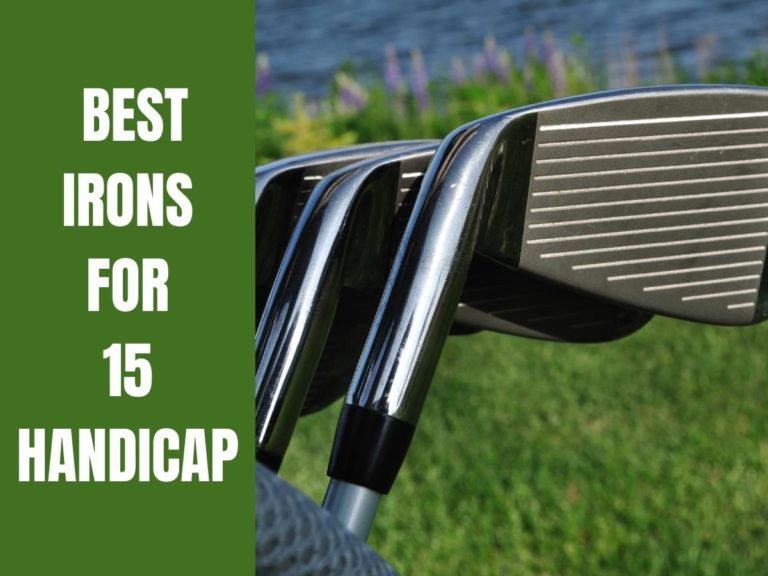
5 Best Golf Irons For 15 Handicap Players
Any golfer who has played the game for more than just a few rounds is familiar with ‘No Man’s Land,’ where your distance to your target is too far for one club but too short for the next. A similar ‘gray area’ exists when purchasing a new set of irons as your handicap drops to…
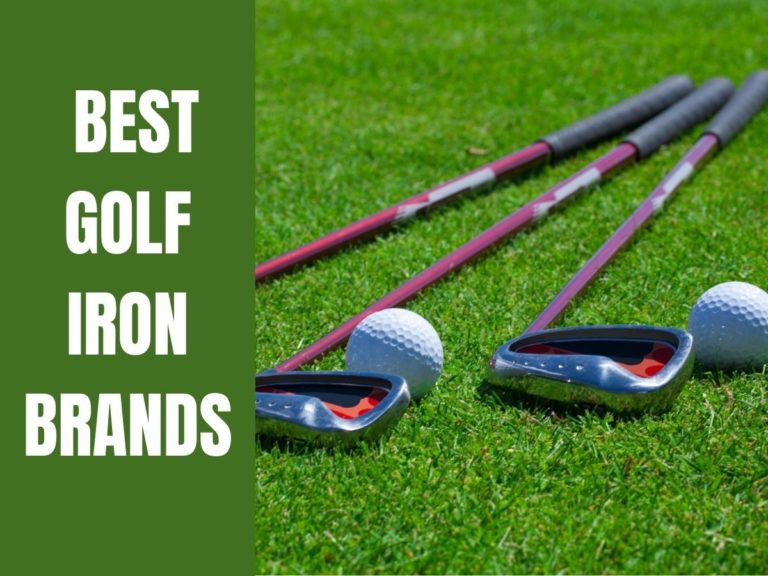
5 Best Golf Iron Brands
Over the years, the great game of golf has continued to evolve on a technical and skill level, where the demands or needs of each player have become more specific. The technology and design of modern-day golf irons play a significant role in the quality and improvement of each player’s game, and many might be…
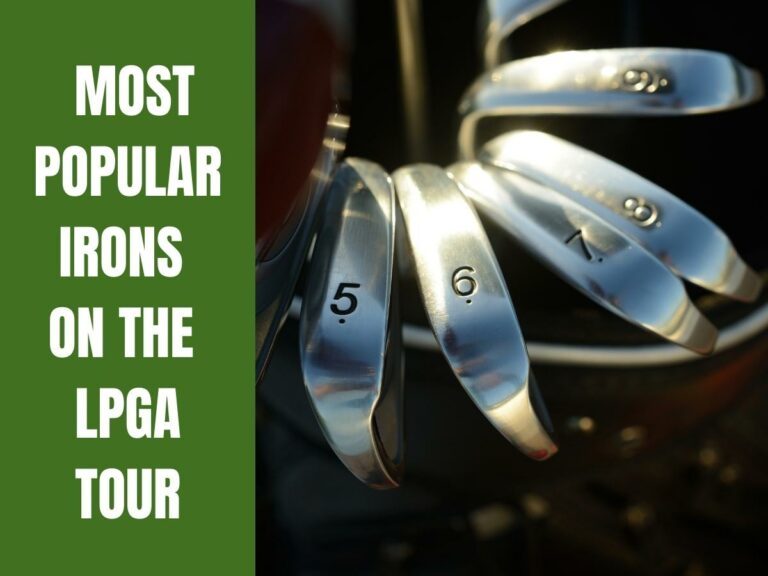
5 Most Popular Irons On The LPGA Tour (2023 Update)
Women are grabbing their golf clubs at an increasing rate across the country and worldwide. The popularity of golf seems to be increasing as the number of female golfers participating in the LPGA is currently double what it was in 2013. So, what are the most popular irons on the LPGA Tour in 2023? The…
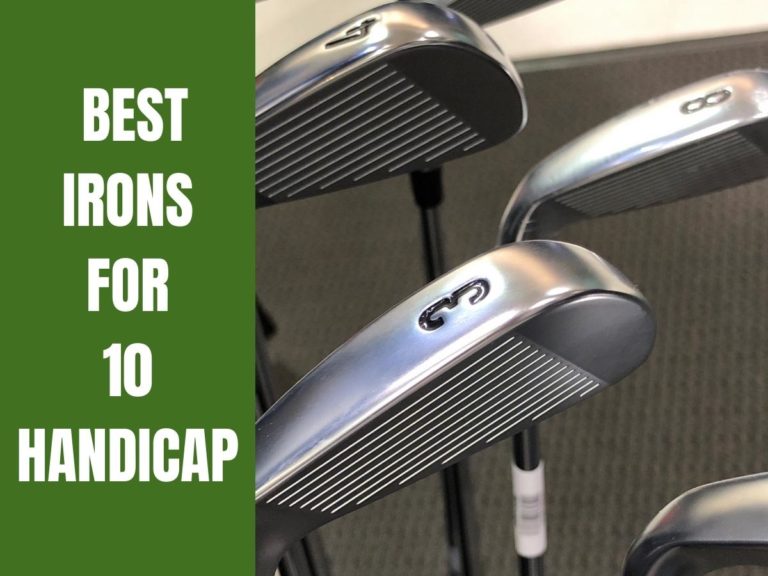
7 Best Golf Irons For 10 Handicap Players
Buying a new set of golf irons can be a costly mistake if you don’t know what you’re looking for. It is especially true in the 10-handicap division, where players may theoretically employ every option in a brand’s lineup with some success. That said, I’ll outline the best irons for 10 handicappers. The 7 best…

5 Most Popular Drivers on the PGA Tour (2023 Update)
As much as it’s amazing to smash a drive down the fairway, it is even better to watch a tour pro hit a 350-yard (320-m) drive with ease. Every year the technology behind the drivers improves, providing extra ball speed and accuracy. So, what are the most popular drivers on the PGA Tour? The Titleist…
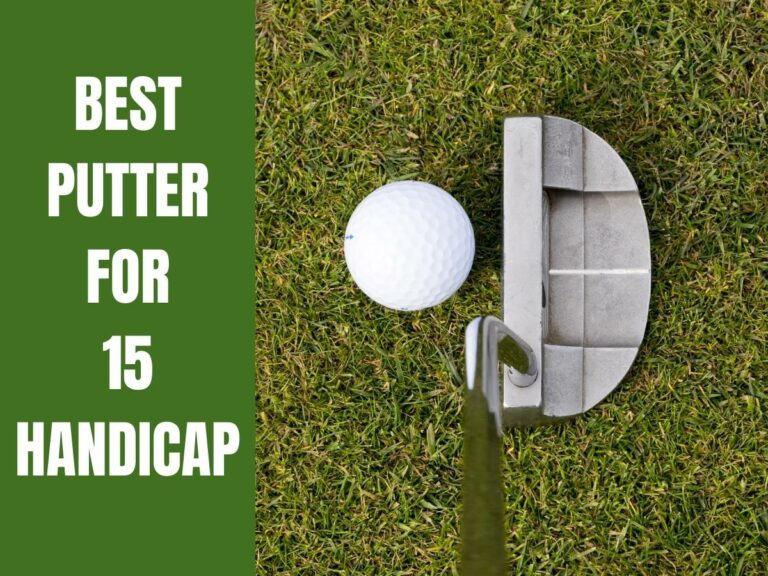
5 Best Golf Putters For 15 Handicap Players
If you have a golf handicap of 15, when the time comes for you to purchase a new putter, you should consider getting one that is best for your handicap to improve your game. That said, I’ll outline the best putters for 15 handicap players. Here are the 5 best golf putters for 15 handicappers:…
Is Your Game Suffering?
Join our free newsletter and receive game improvement tips, drills, product discounts, etc…, join over 10,000 golfers today.

SPOTTED: Callaway’s new 2023 Apex MB irons
Is Callaway plotting on releasing a new family of Apex irons? Judging by what we’re seeing on the PGA Tour, it seems that the new, highly-anticipated Apex irons could be on the horizon.
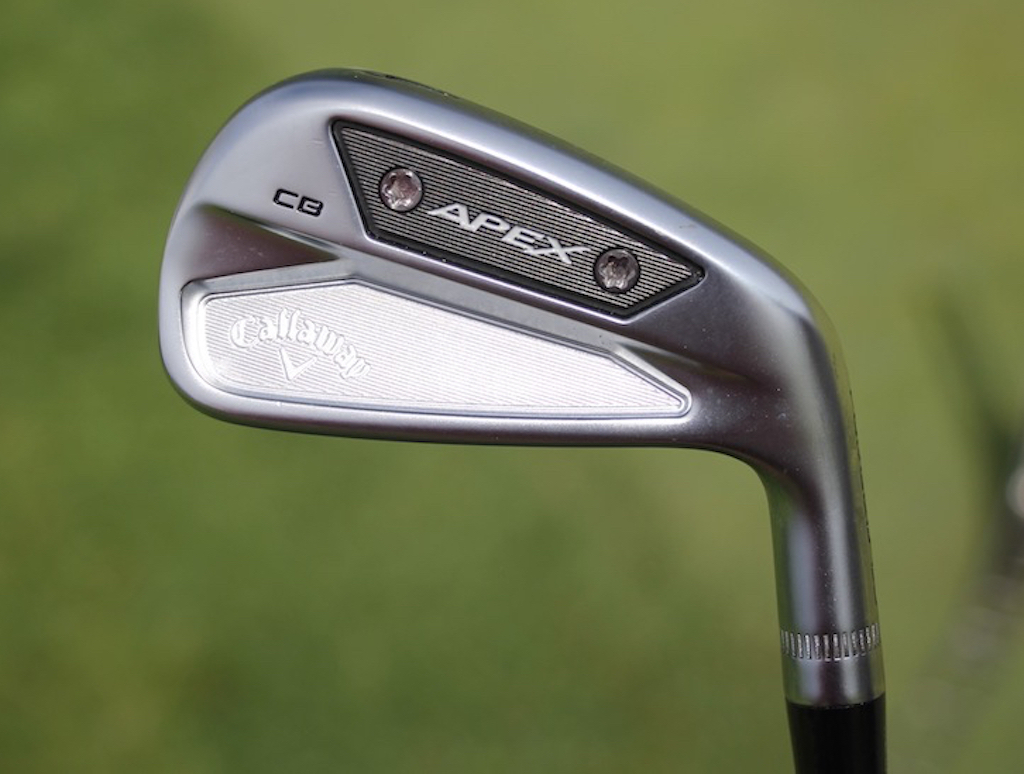
Ahead of the recent 2023 Travelers Championship, GolfWRX.com spotted a new Callaway Apex CB 4-iron in Adam Svensson’s WITB .
This week, ahead of the 2023 John Deere, GolfWRX.com spotted yet another new Apex iron – this time, we photographed Carl Yuan with an entire set of Apex MB 2023 irons .
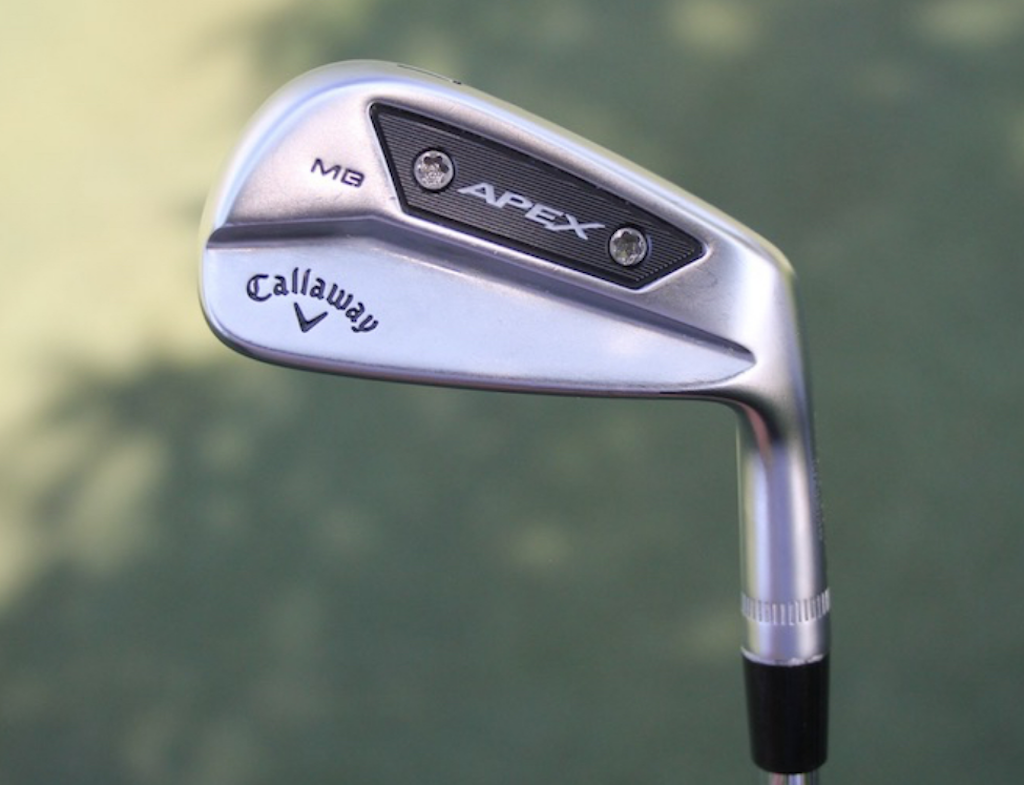
Here’s what the 7-iron looks like from address…
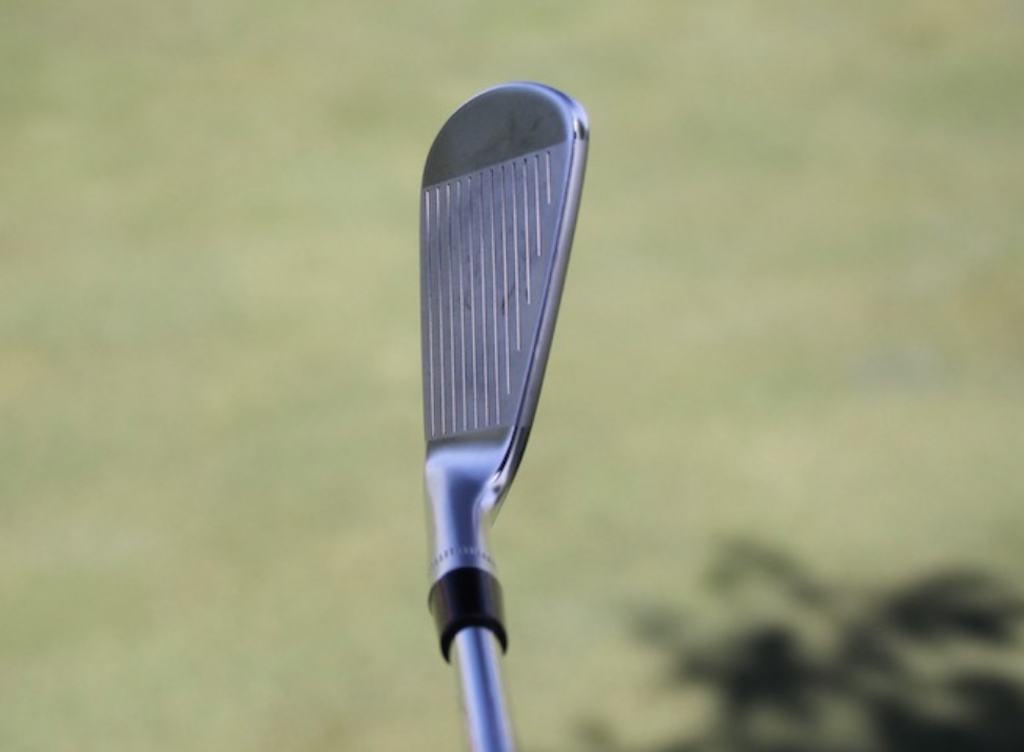
Also, as Mav McNealy popularized within his custom set of Callaway MB 1-of-1 prototype irons , it appears that the Apex MB set may include a 10-iron. Or, at least, the company made an Apex MB 10-iron available to Yuan.
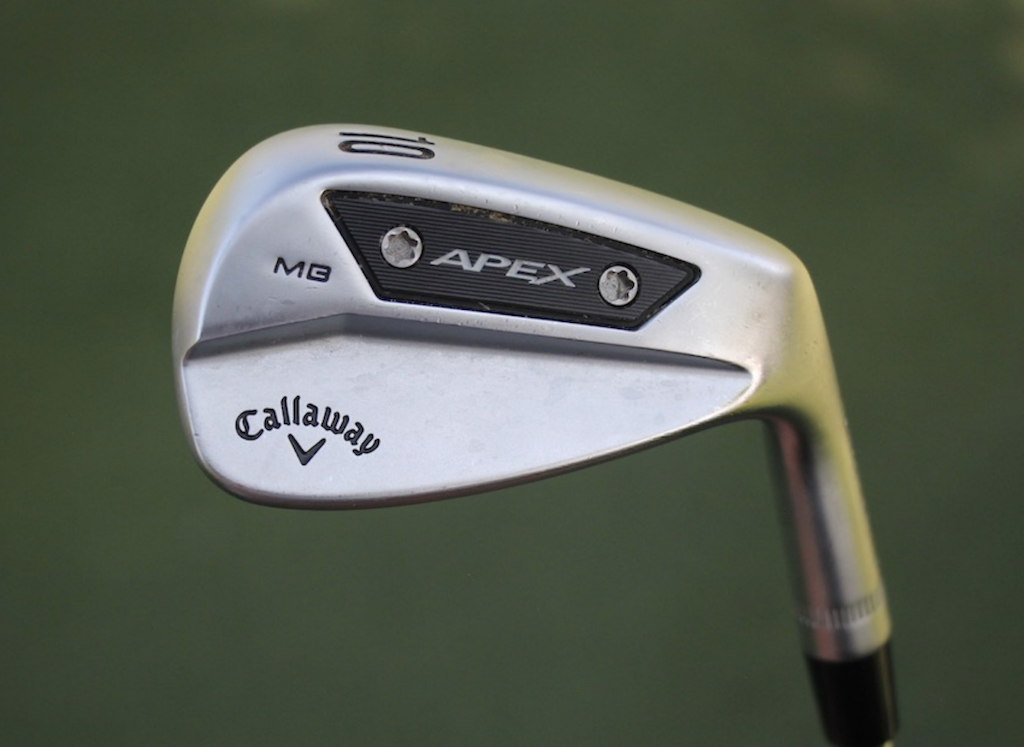
It’s likely that the “10” iron is just alternative nomenclature for “pitching wedge,” but we’ve yet to hear from the Callaway camp about the new irons. For now, we’re simply left to speculate using photos of the new Apex MB and CB irons for 2023.
We’ll update you with more information about the Apex 2023 lineup as it becomes available. Until then, click here for more photos and GolfWRX Forum member discussion.

Edison 2.0 wedge heads now available for DIY club builders
Harry Potter fans will love Chase Johnson’s unique “Ravenclaw” divot tool
He played on the Hawaii Pacific University Men's Golf team and earned a Masters degree in Communications. He also played college golf at Rutgers University, where he graduated with a Bachelor of Arts in Journalism.
Aug 4, 2023 at 5:46 pm
the 2018 model was perfect, they should still sell it.
Jul 5, 2023 at 3:10 pm
Looks a little cleaner than the prior Gen. No big changes and that’s a good thing. I’m sure they’ll be popular amongst the best ball strikers.
Jul 4, 2023 at 9:22 pm
Nobody cares…
Jul 4, 2023 at 4:30 pm
What does the plastic black bit do?
Jul 4, 2023 at 4:48 pm
I think it’s probably a piece of tungsten.
Jul 5, 2023 at 10:06 am
Tungsten weights for customization.
Jul 4, 2023 at 5:03 am
any news / pics on new taylormade p790’s ?
Your email address will not be published. Required fields are marked *
This site uses Akismet to reduce spam. Learn how your comment data is processed .

You may like
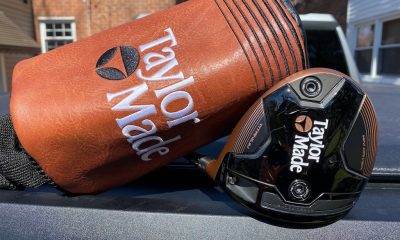
TaylorMade BRNR Mini Driver Copper: Leveraging 90s nostalgia
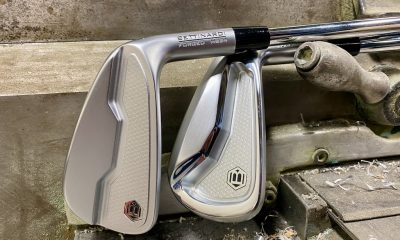
Bettinardi launches first-generation CB24, MB24 irons
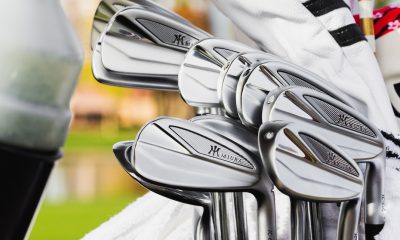
Miura launches hollow-bodied IC-602 irons
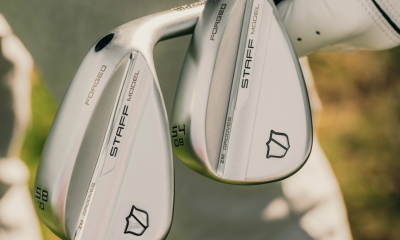
Wilson introduces new Staff Model ZM wedge series
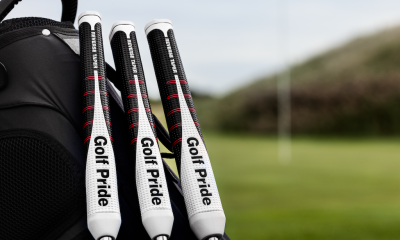
Golf Pride launches new “Reverse Taper” putter grips in three different styles
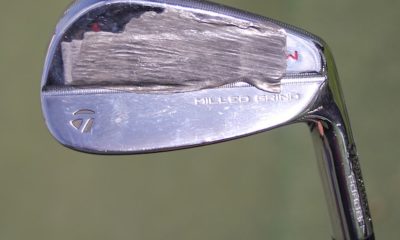
Tua Tagovailoa’s WITB + 9 interesting equipment photos from the Cognizant Classic
Whats in the Bag
Akshay bhatia witb 2024 (april).
- Akshay Bhatia WITB accurate as of the Valero Texas Open.
Driver: Callaway Rogue ST Max LS (9 degrees @7.2, 2 grams lead tape heel, 4 grams toe) Shaft: Fujikura Ventus Black 7 X (44 7/8 inches, tipped 1 inch)
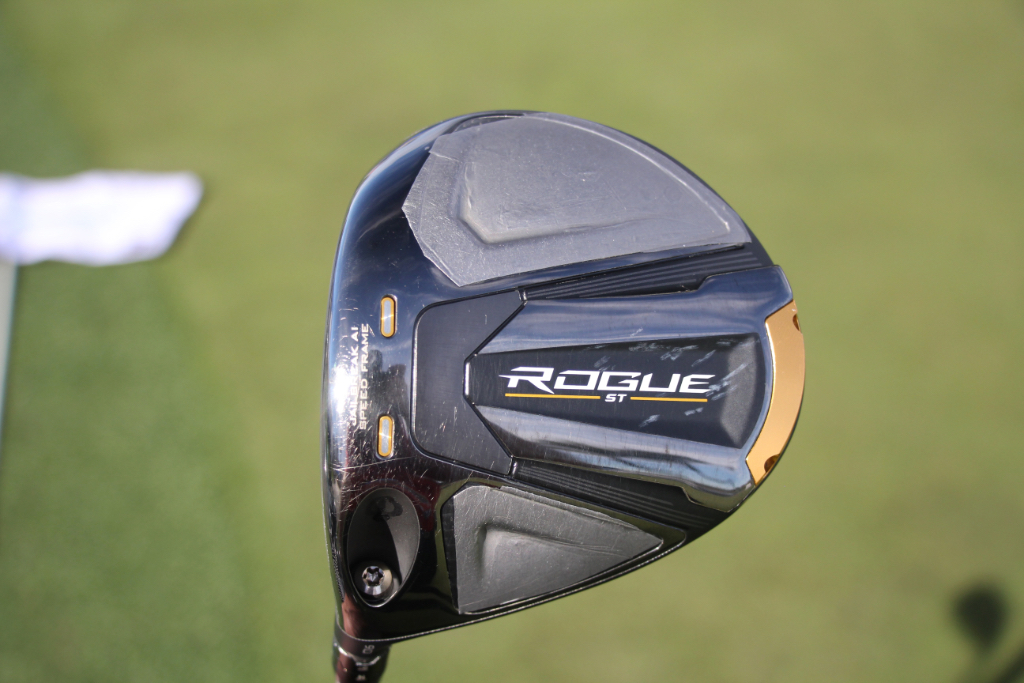
3-wood: Callaway Paradym Ai Smoke Max (15 degrees @13.9) Shaft: Fujikura Ventus Black 8 X (43 inches, tipped 1.5)
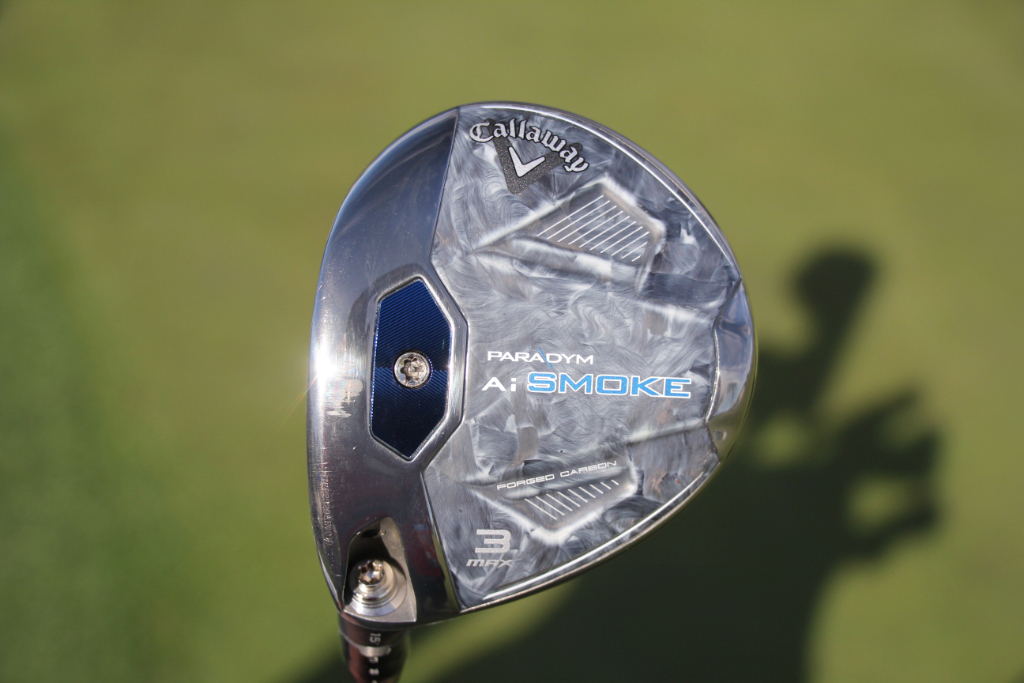
Hybrid: Callaway Apex UW prototype (19 degrees @17.8) Shaft: Fujikura Ventus Black 10 X
More photos of Akshay Bhatia’s WITB in the forums.
Irons: Callaway X Forged UT (21 degrees), Callaway Apex TCB Raw (5-PW) Shafts: KBS $-Taper 125 S+
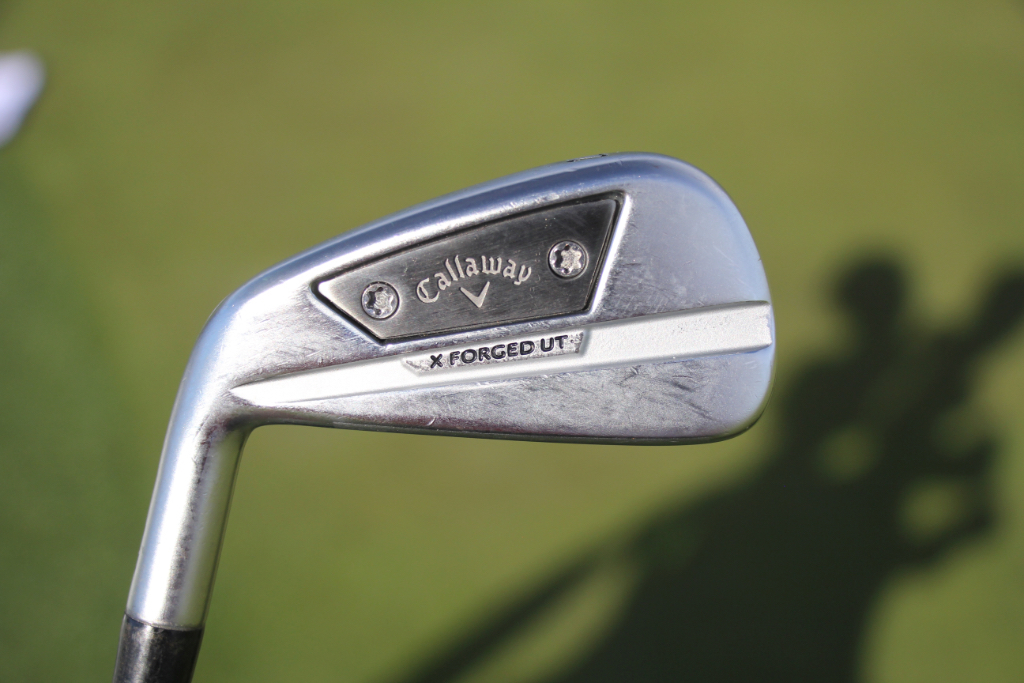
Wedges: Callaway Jaws Raw (50-10S @49, 54-10S, 60-08C @61) Shafts: KBS Hi-Rev 2.0 135 X
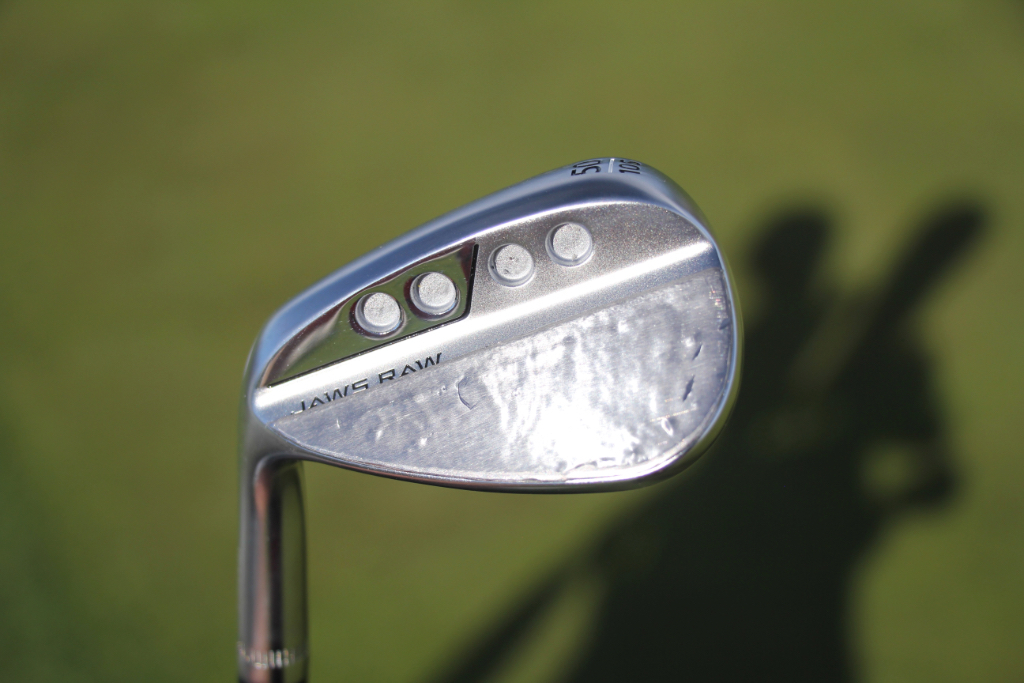
Putter : Odyssey Versa Jailbird 380 Grip: SuperStroke Zenergy Split
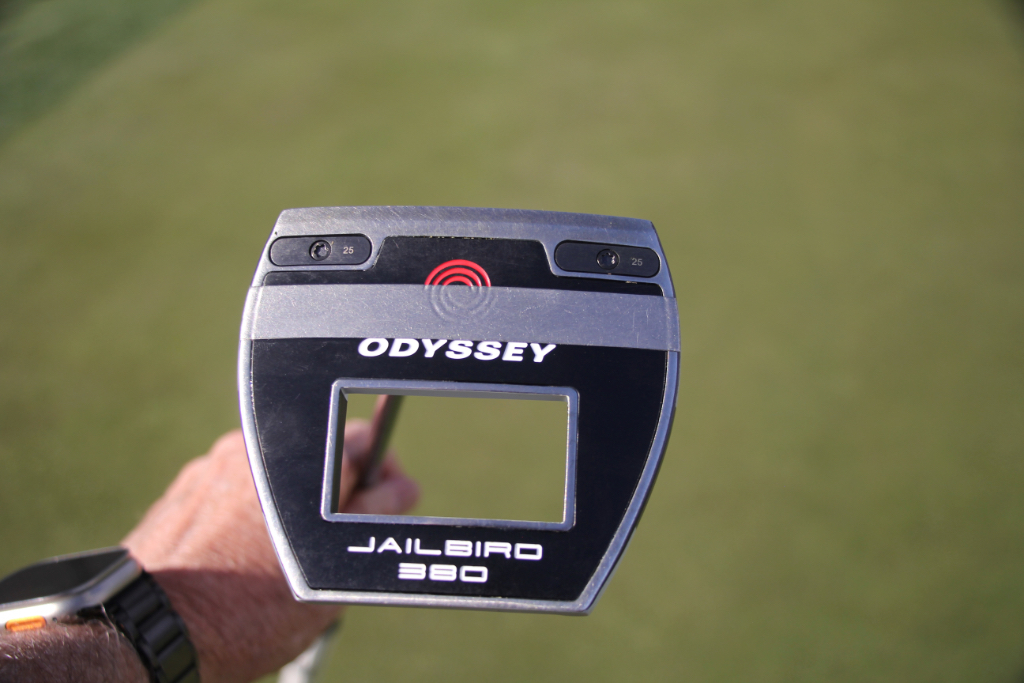
Grips: Iomic
Ball: Callaway Chrome Tour
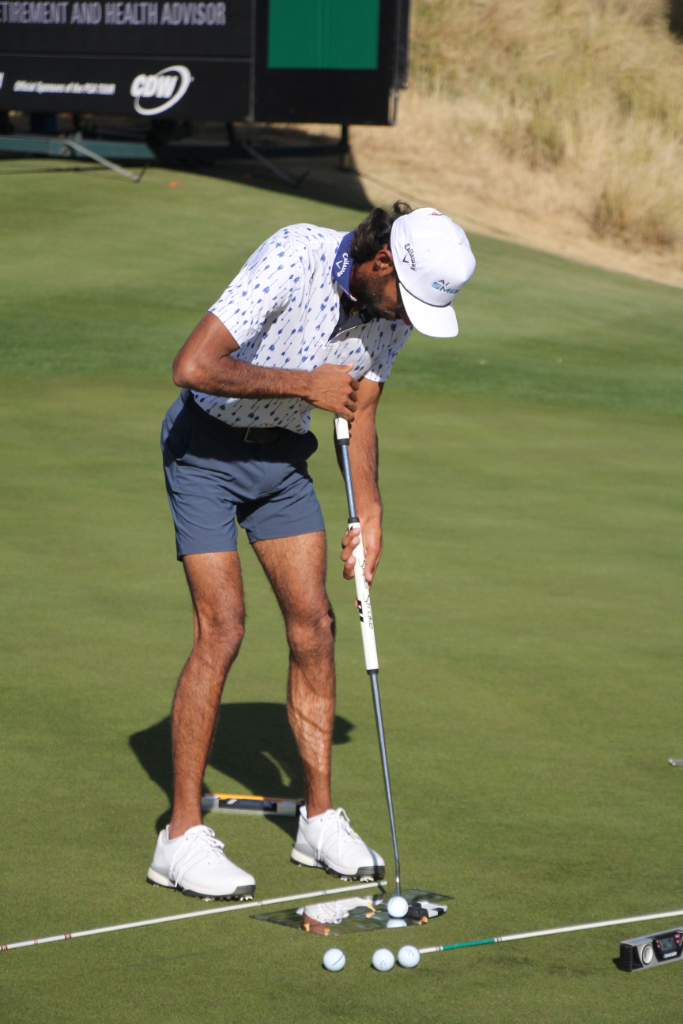
More Akshay Bhatia WITBs
- Akshay Bhatia WITB 2023 (July)
- Akshay Bhatia WITB 2022 (November)
- Akshay Bhatia WITB 2021 (January)
- Akshay Bhatia WITB (September 2020)
Michael S. Kim WITB 2024 (April)
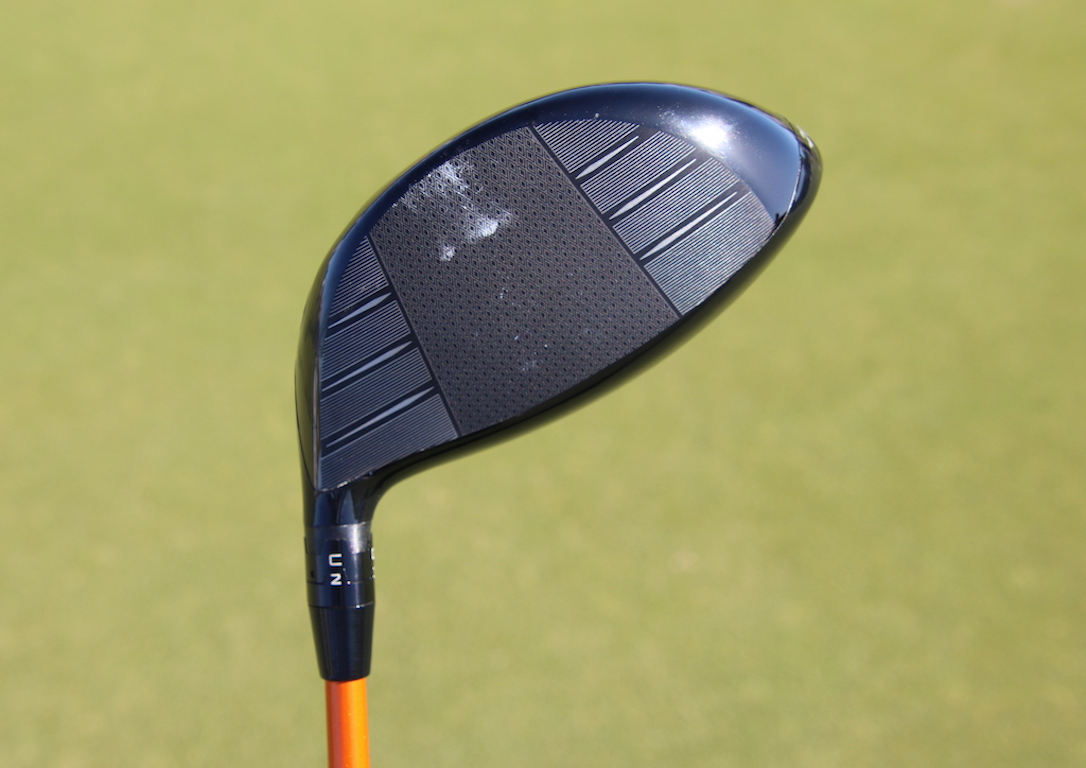
- Michael S. Kim what’s in the bag accurate as of the Valero Texas Open.
Driver: Titleist TSR3 (10 degrees, B1 SureFit setting) Shaft: Graphite Design Tour AD DI 8 X
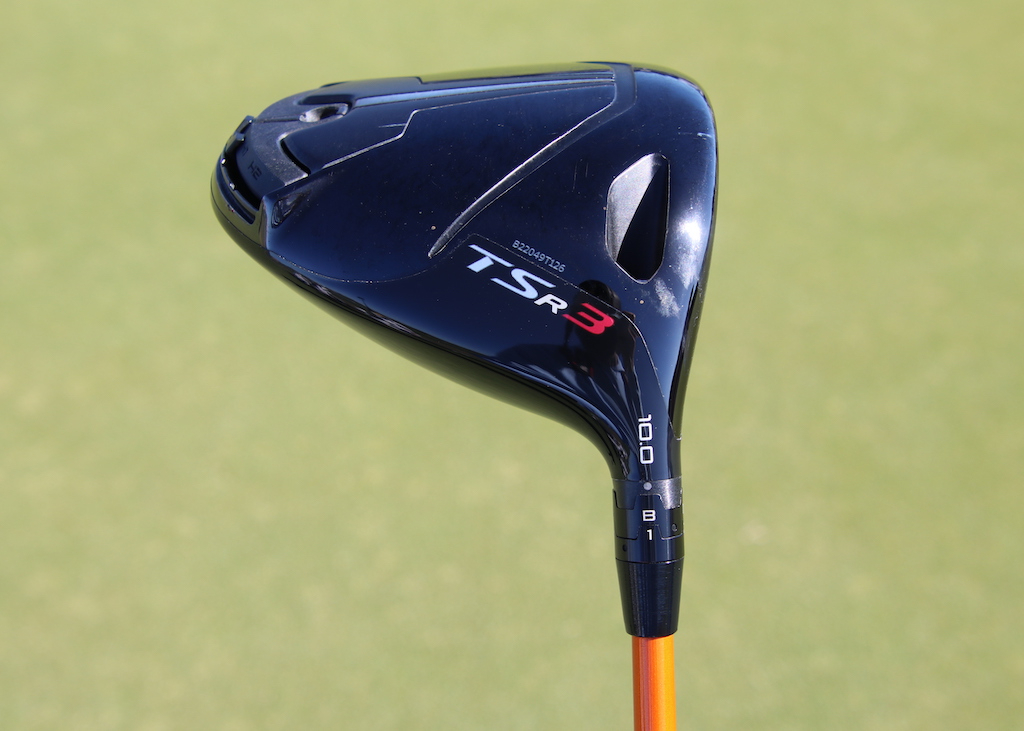
3-wood: Ping G430 Max (15 degrees) Shaft: Graphite Design Tour AD UB 8 TX
Check out more in-hand photos of Michael Kim’s clubs here.
Irons: Titleist T200 (3, 4), Titleist T100 (5-PW) Shafts: Graphite Design Tour AD IZ 95 X (3), Nippon N.S. Pro Modus3 Tour 120 S
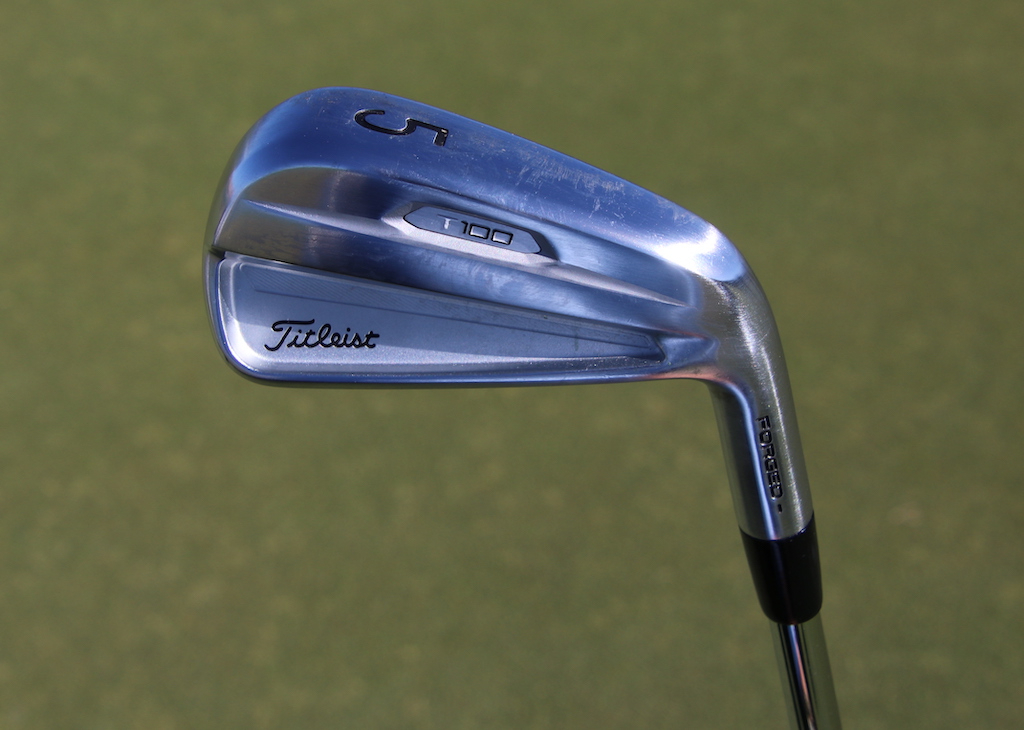
Wedges: Titleist Vokey Design SM9 (52-12F), SM10 (56-14F), WedgeWorks Proto (60-L) Shafts: True Temper Dynamic Gold Tour Issue S300
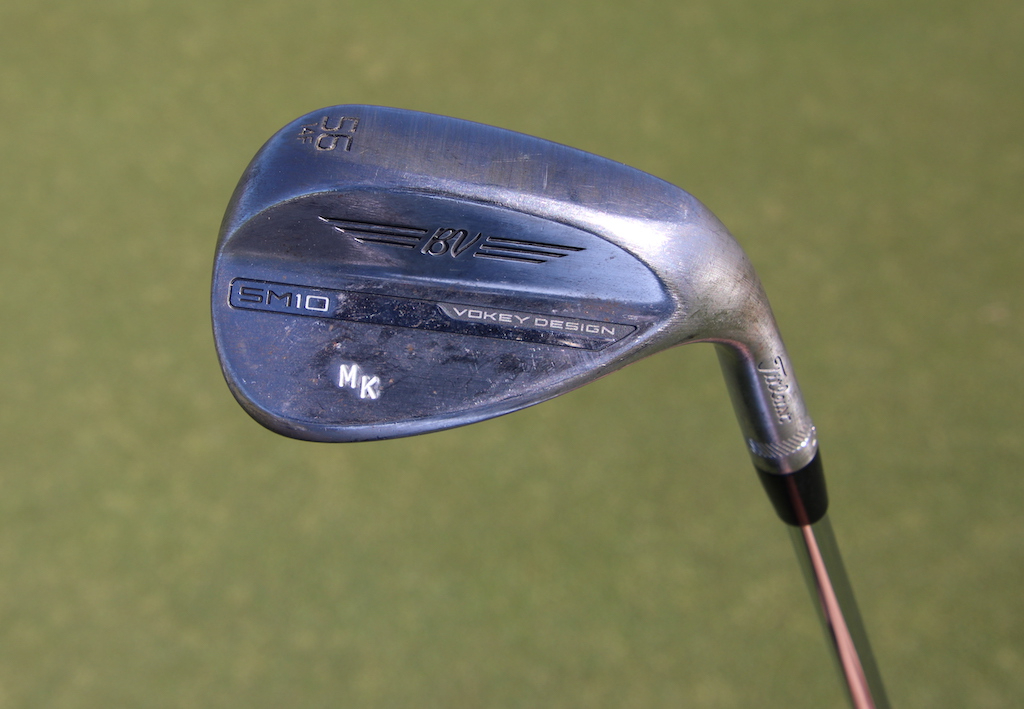
Putter: L.A.B. Link.1 Grip: SuperStroke Zenergy Tour 1.0P 17
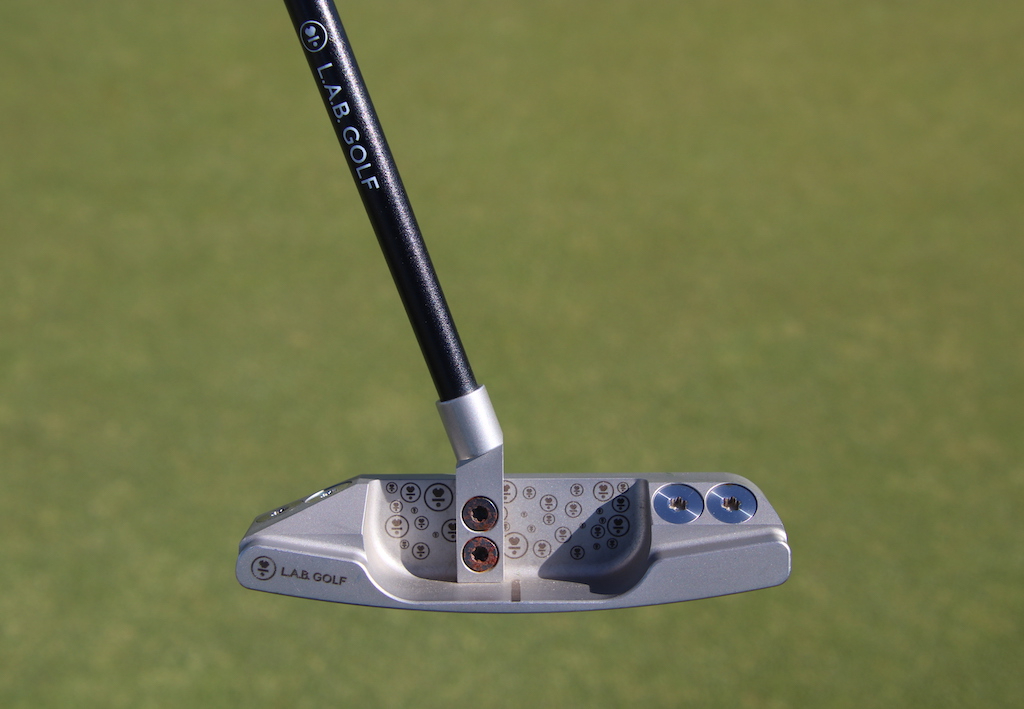
Grips: Golf Pride MCC
Ball: Titleist Pro V1x
Check out more in-hand photos of Michael Kim’s clubs here.
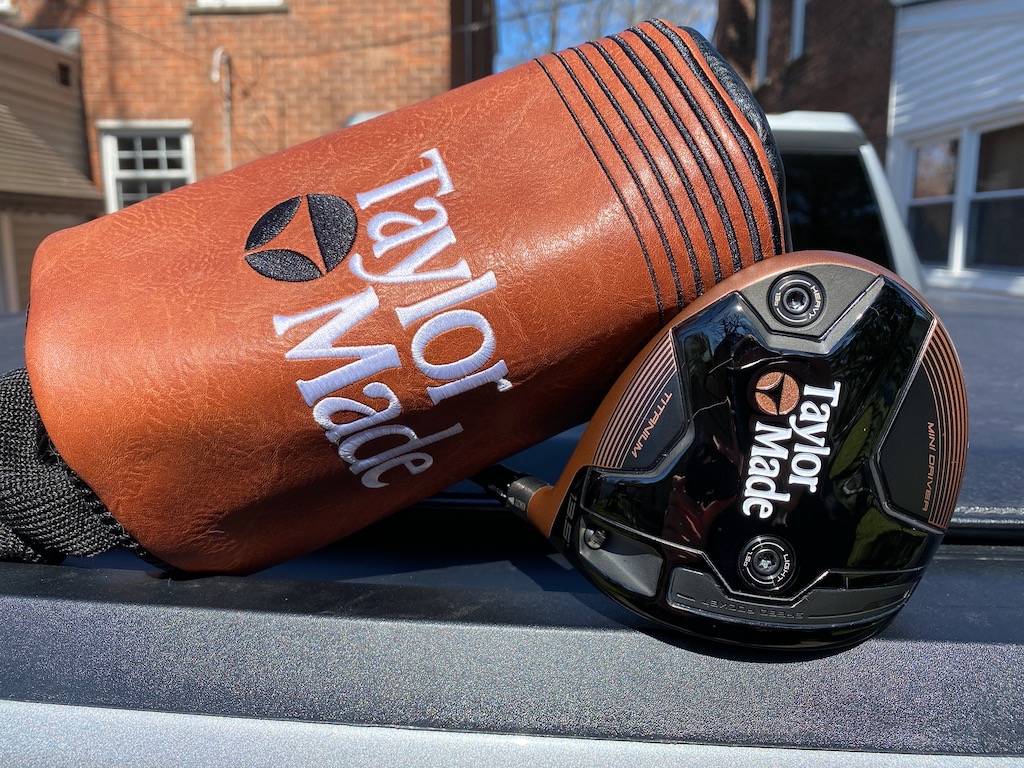
TaylorMade is leaning in even further to the retro vibes with the 2024 edition of its BRNR Mini Driver.
Patterned after the Carlsbad-based company’s iconic late 1990s Burner driver design, the 2024 BRNR Mini features similar copper styling and a retro version of the TaylorMade logo.
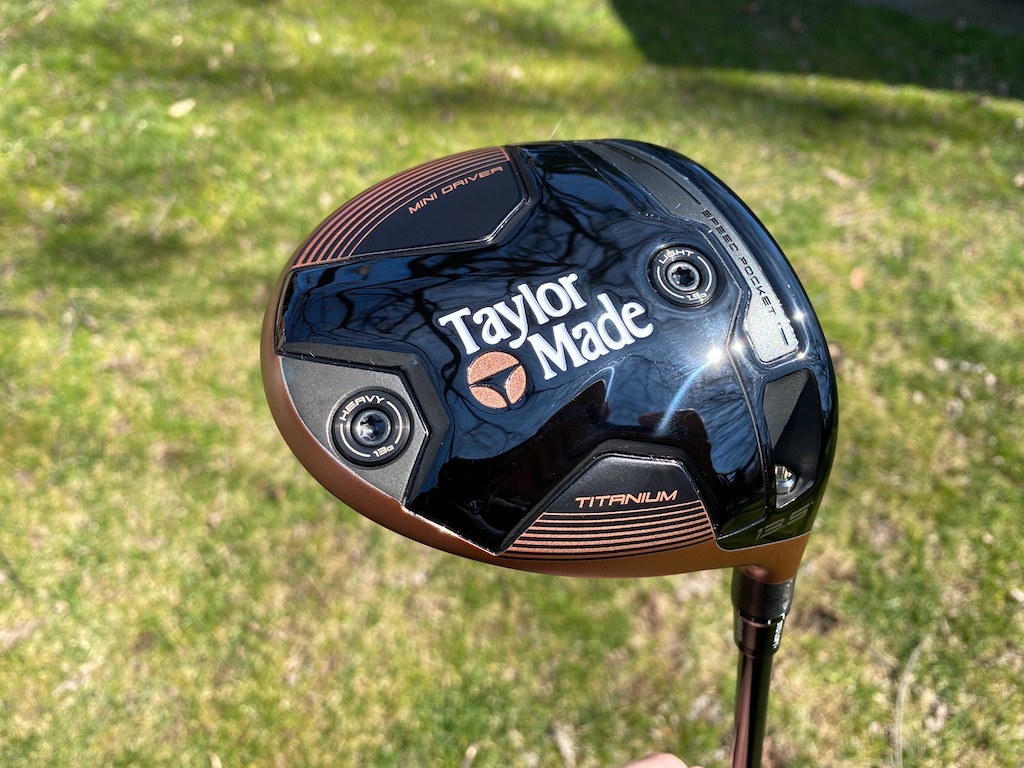
Featuring the same technology as its 2023 BRNR Mini Driver, the 2024 edition continues to play the hits that saw the unique club land in the bag of tour pros, such as Tommy Fleetwood and Jake Knapp.
- Check out details on the technology in our 2023 BRNR launch story.
- See more in-hand photos and read what GolfWRXers are saying in the forums.
Why play a mini driver?
In general, TaylorMade finds two types of golfers gravitate toward a mini driver. In the first case, it’s an addition to a standard driver: Players looking for a “fairway finder” driver without giving up too much distance that can also be hit off the deck. Second, TaylorMade recommends giving a mini a go to golfers who struggle to hit 460 cc drivers, particularly choppers. It’s a better alternative than a 3-wood off the tee.
Tommy Fleetwood’s endorsement of playing a mini driver
“For me, if I HAD to hit a fairway, I’m more comfortable hitting a driver than a 3-wood. I would tee the driver down, and I would hit a little cut, or a neck-y cut in the fairway. The 3-wood isn’t for that. The 3-wood, generally, is a pretty hot club that I’ll hit from 270 or 280 in the fairway on a par 5. You get some courses where a 3-wood is not always necessary. [With the BRNR] you put a normal swing on it, and I’m more comfortable hitting it straight. It’s a replacement for a 3-wood, basically.”
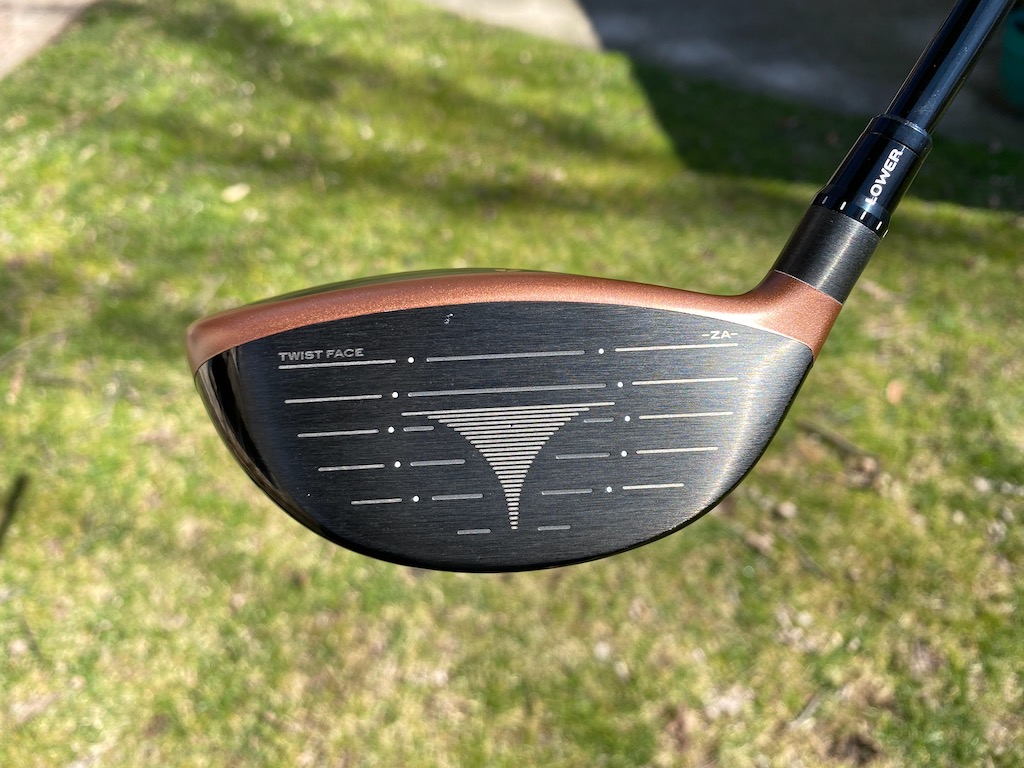
Pricing, specs, availability
TaylorMade’s new BRNR Mini Driver Copper clubs will sell for $449.99 in 11.5 (RH/LH) and 13.5 (RH) degree options, and they will be available for custom orders.
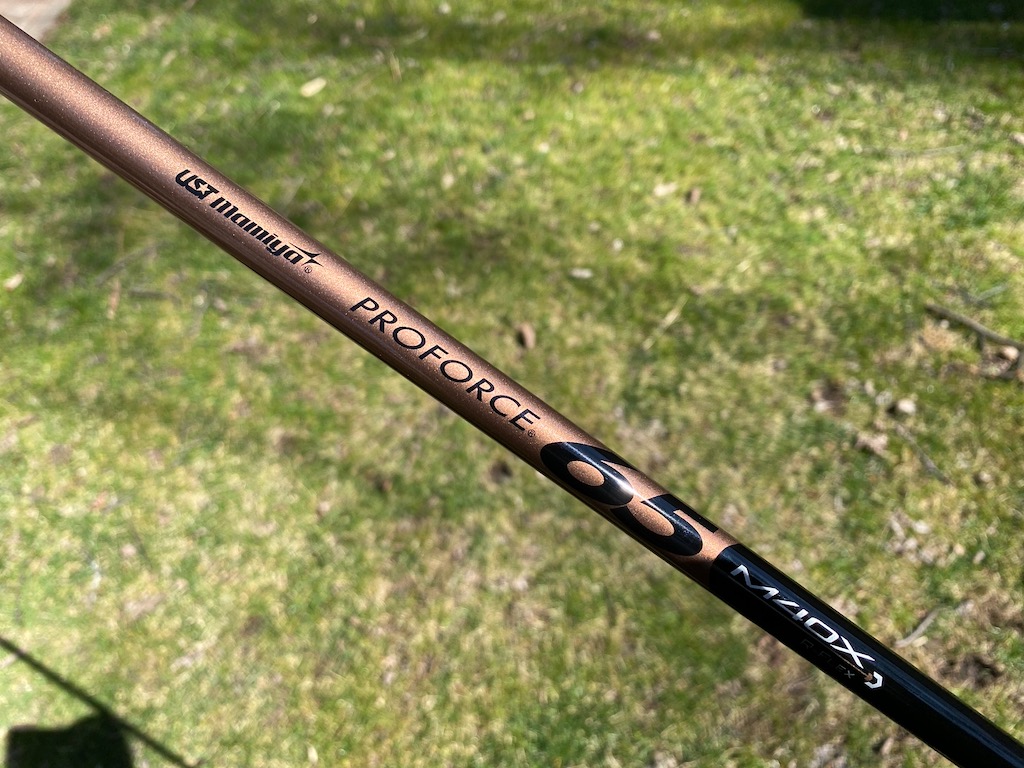
Tour pro calls Anthony Kim a ‘f*****g idiot’ following Instagram comeback post

John Daly stuns fans into silence with brutal opening tee shot on PGA Tour Champions

Things got heated at the Houston Open between Tony Finau and Alejandro Tosti. Here’s why

Anthony Kim WITB 2024 (February)

This Rory McIlroy post-round ‘The Match’ moment is going viral…but all is likely not what it seems

Scottie Scheffler WITB 2024 (March)

Photos from the 2024 Arnold Palmer Invitational

Anthony Kim’s speculated LIV Golf sign-on fee may surprise you

The total sum that Sergio Garcia needs to pay in fines if he wants to return to DP World Tour revealed

Report: Tiger Woods has ‘eliminated sex’ in preparation for the 2024 Masters
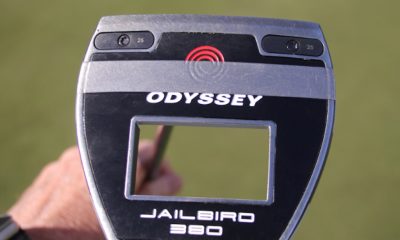
Akshay Bhatia WITB accurate as of the Valero Texas Open. Driver: Callaway Rogue ST Max LS (9 degrees @7.2, 2...
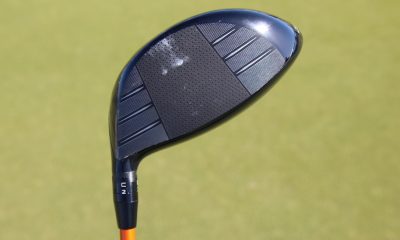
Michael S. Kim what’s in the bag accurate as of the Valero Texas Open. Driver: Titleist TSR3 (10 degrees, B1...

Kevin Chappell WITB 2024 (April)
Kevin Chappell what’s in the bag accurate as of the Valero Texas Open. More photos from the event here. Driver:...

Raul Pereda WITB 2024 (April)
Raul Pereda what’s in the bag accurate as of the Texas Children’s Houston Open. More photos from the event here....

2-time major champ announces shock retirement from the sport at age of 33

Edoardo Molinari reveals the latest PGA Tour golfer to turn down ‘good offer’ from LIV Golf

Charlie Woods finds it tough going on American Junior Golf Association debut

Scottie Scheffler had an interesting response when asked how he ‘quiets the noise’ following Players victory

Addiction, spinal fusion, and scam artists – Everything Anthony Kim revealed in candid interview with David Feherty

About the Product
Apex pro irons.
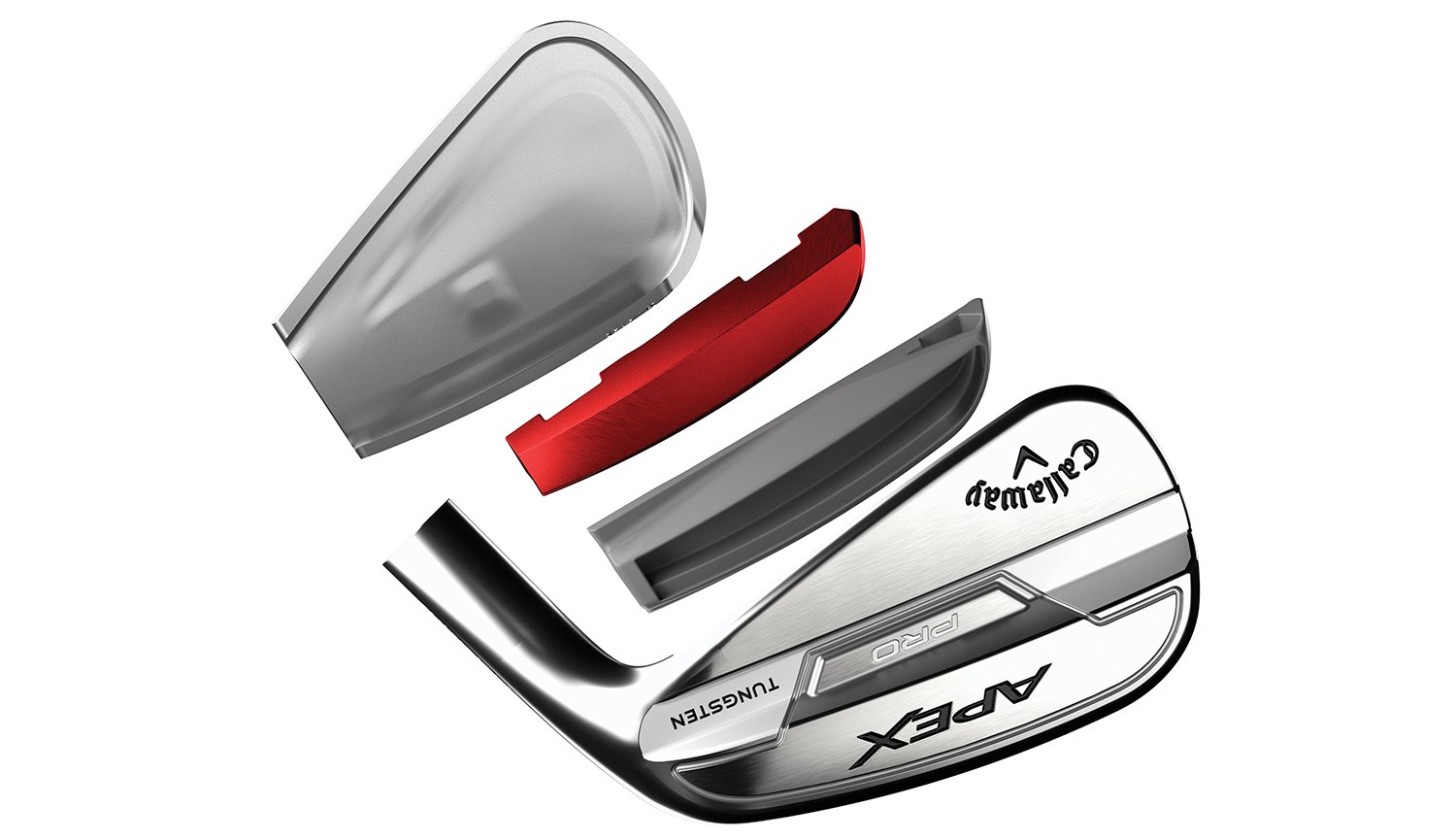
The First Apex Pro Iron Designed With A.I.
Ultimate forged feel, consistent launch with forgiveness, studio fitting.
Schedule a private session with a certified Fitting Specialist to find the right gear that takes your game to the next level.
Apex Pro Irons w/ Steel Shafts
- Select product options
Apex Pro Irons w/ Steel Shafts was added to your cart.
Free shipping
Free shipping on all orders over $99
Free in-store pickup
Buy online and pick up at your local store
Buy now. Pay later.
Split your online purchase into 4 interest-free payments with Zip
Remove Product?

World's best come together at Masters in bid for Green Jacket
- Medium Text
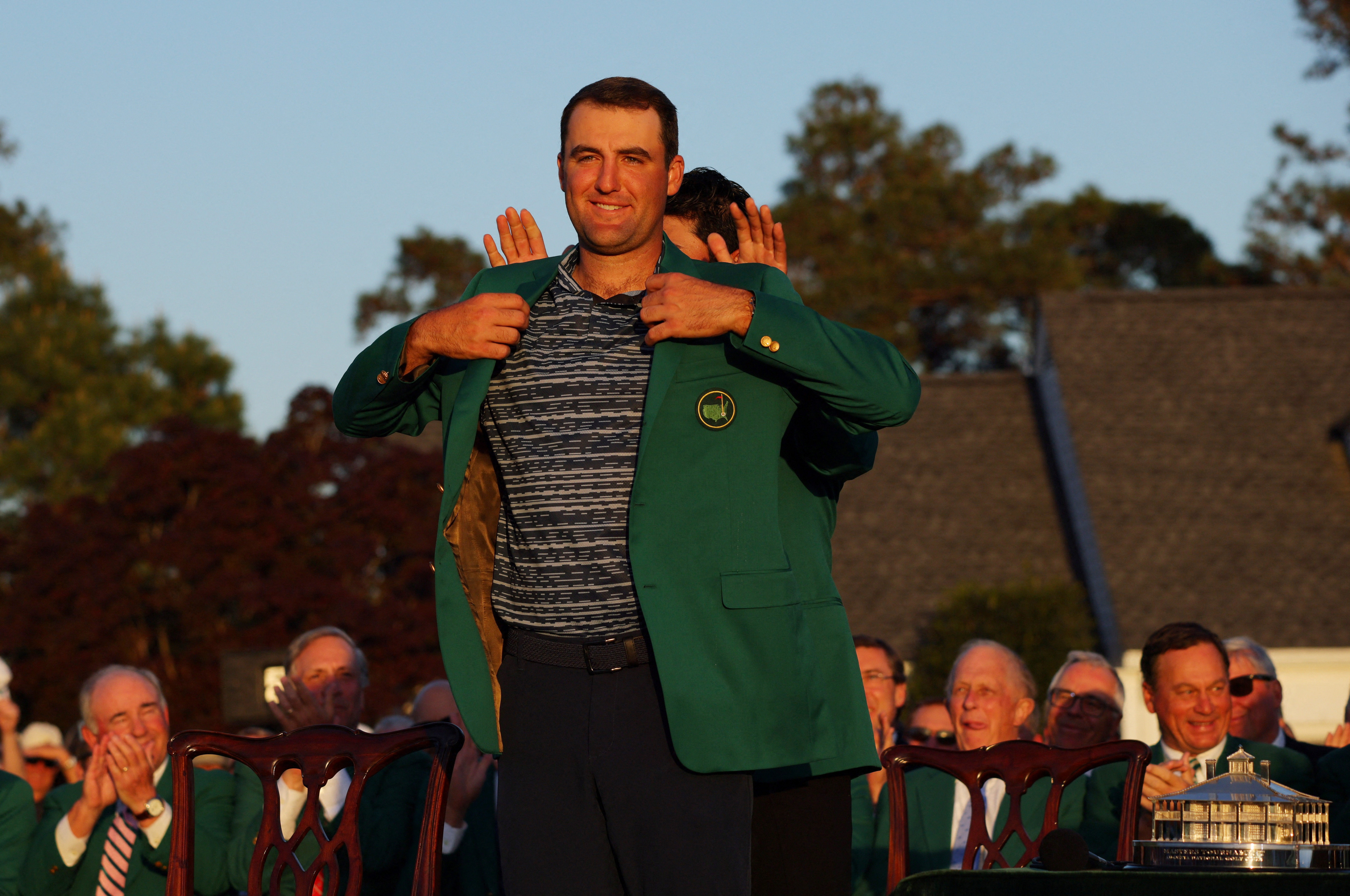
The Reuters Daily Briefing newsletter provides all the news you need to start your day. Sign up here.
Reporting by Steve Keating in Augusta. Editing by Christian Radnedge
Our Standards: The Thomson Reuters Trust Principles. New Tab , opens new tab
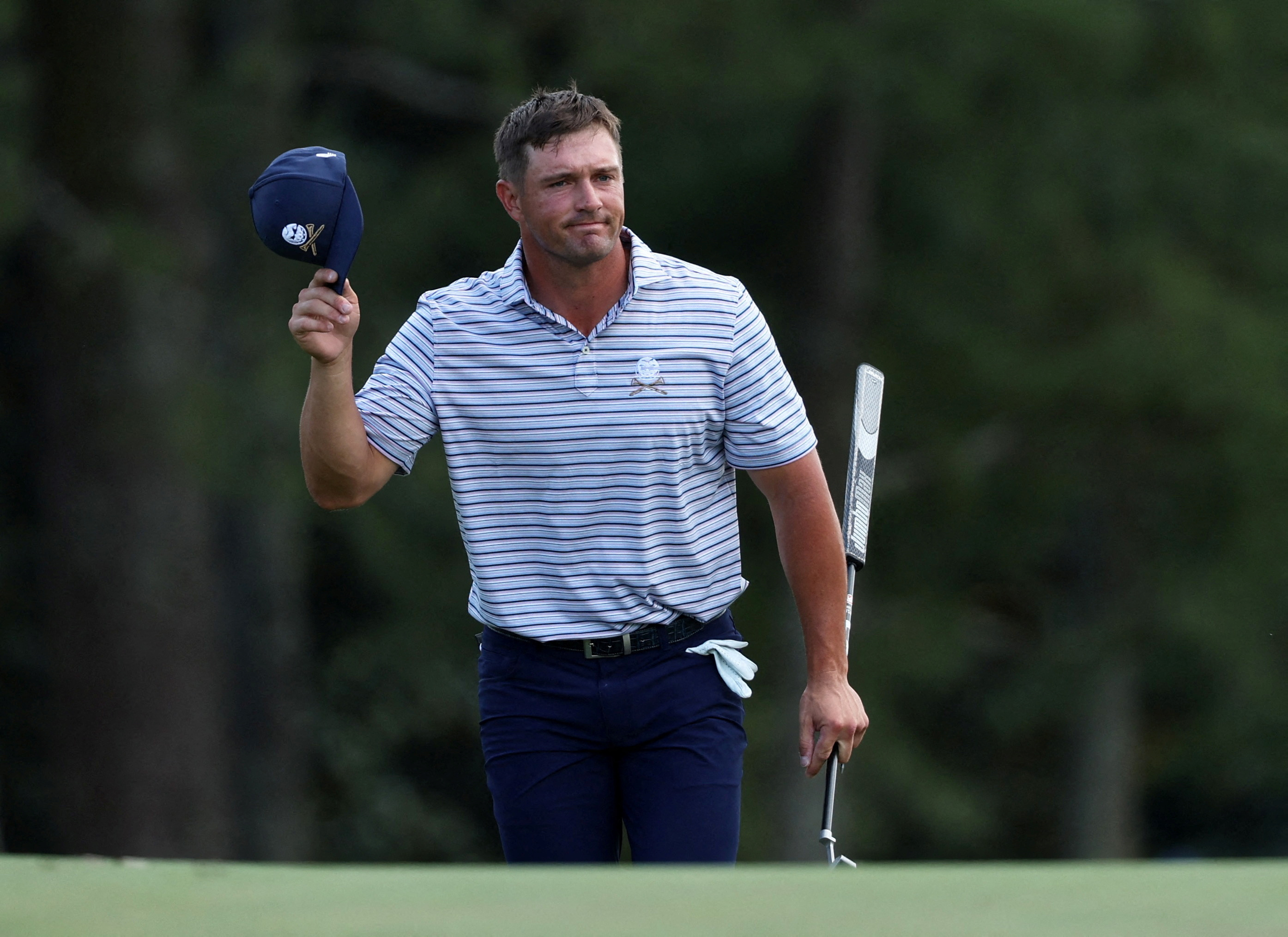
Sports Chevron
Leicester City cannot be deducted any points in the second-tier Championship if they are convicted of any violations of the Premier League's spending rules, the English Football League (EFL) said on Friday.
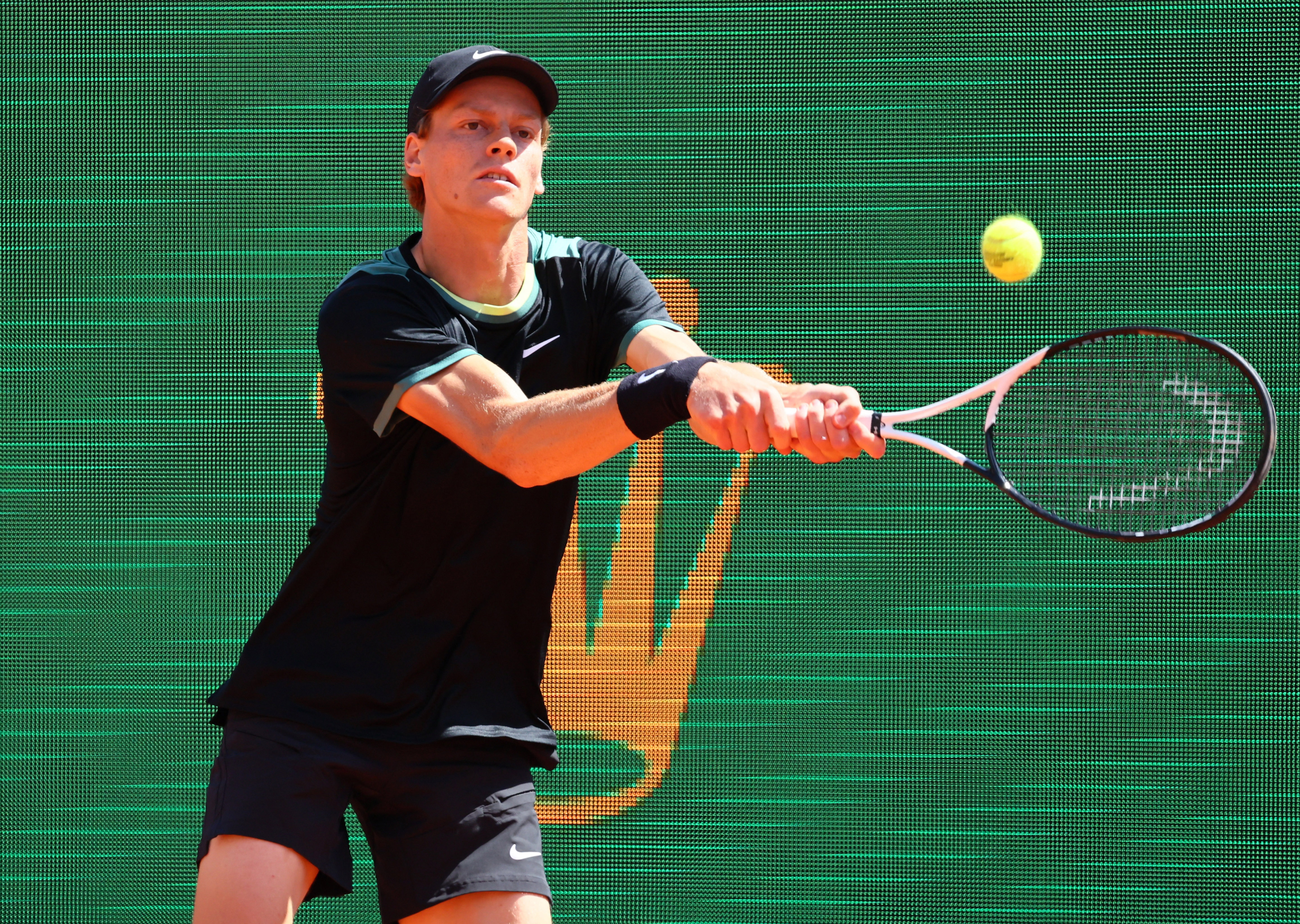
Teenager Sam Watson broke the speed climbing world record twice in under an hour at a World Cup competition in China on Friday, signalling his status as one of the favourites for gold at the Paris 2024 Olympic Games.
Two days after allowing nine goals, the Philadelphia Flyers ended their ugly eight-game losing streak (0-6-2) and lived to see another day in the playoff chase for the second wild-card spot in the Eastern Conference.
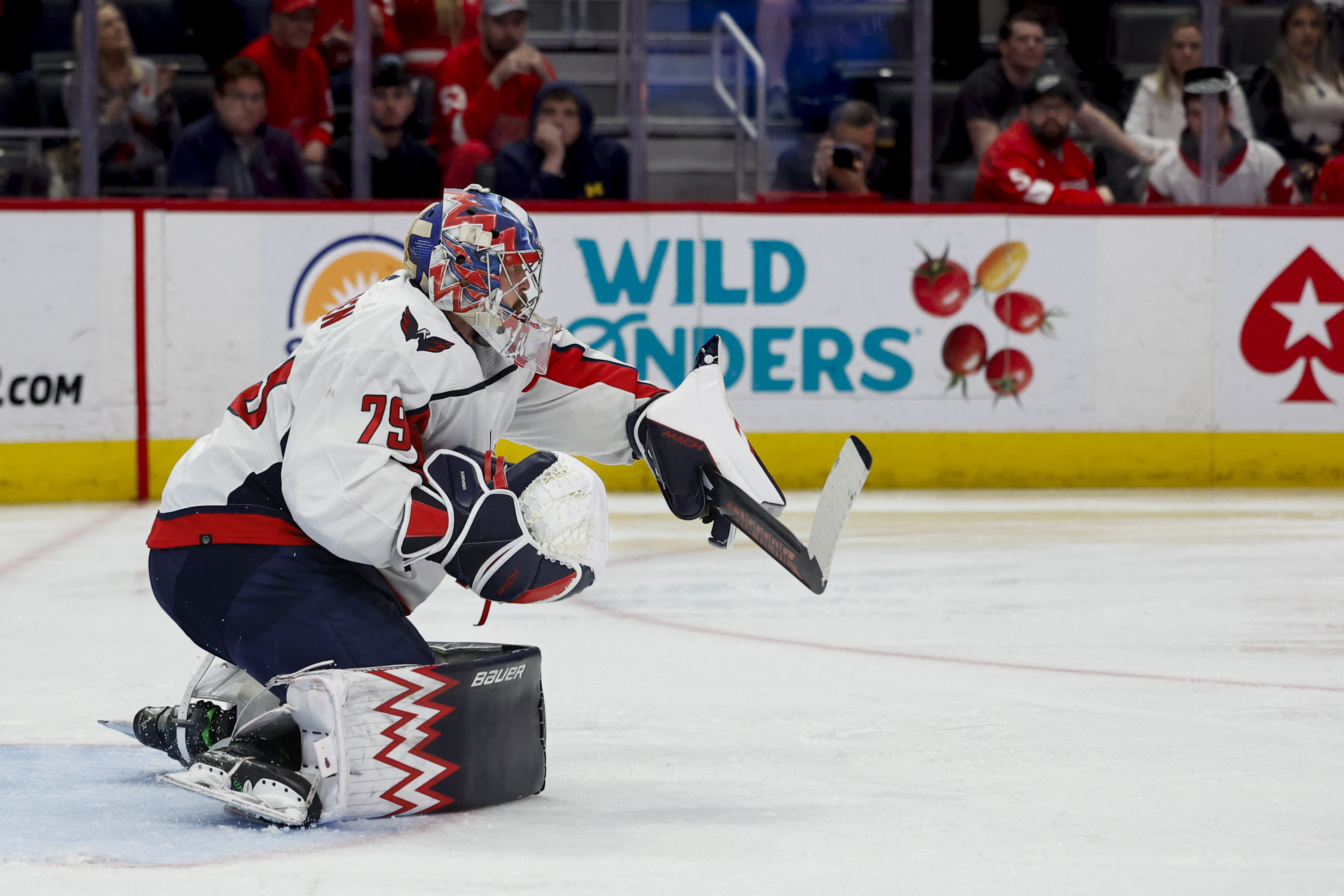
Ohio State golfer Neal Shipley right in the hunt after first round of his first Masters

Ohio State golfer Neal Shipley believes he can hold his own against the best players in the world. On Thursday at the Masters, he proved it.
Shipley is tied for 17th after shooting a 1-under-par 71 in his first-ever competitive round at Augusta National Golf Club. He birdied holes 3, 7 and 13, bogeyed 5 and 15 and parred the rest. He is low amateur through the first 18 holes.
“Augusta fits my game well. It favors the guy who hits great iron shots and is really a good driver of the golf ball,” Shipley said last month in preparation for the Masters, which he qualified for by finishing runner-up at the U.S. Amateur last summer. “Putting is really important there, but the bottom line is you have to hit a lot of greens to score. I feel like my ball striking is right up there with some of the guys on tour.”
Such was not the case Thursday. The 23-year-old graduate student from Pittsburgh hit only eight of 18 greens in regulation, compared to 60% for the field, but his putting was top-notch, which runs counter to the conventional wisdom that Masters rookies struggle to read the undulating greens. Shipley needed 1.39 putts per hole, better than the field average of 1.64.
Shipley is playing the first two rounds with 2003 Masters champion Mike Weir and Ryo Hisatsune of Japan.

Georgia native Steven Fisk wins Club Car Championship at The Landings Golf & Athletic Club
Daily Wrap Up
Change Text Size
SAVANNAH, Ga. – Steven Fisk is Georgia through and through. He was born in Atlanta and grew up on a par-3 course and driving range his father built (and still operates) in his childhood hometown of Stockbridge. He played college golf for Georgia Southern University in Statesboro, a little under 200 miles from home. He and his wife, Edith, wed last month in Augusta. And Sunday evening in Savannah, roughly an hour drive from Georgia Southern, the 26-year-old Fisk earned his first Korn Ferry Tour win.
Fisk birdied three of the final four holes of regulation and defeated Rob Oppenheim in a sudden-death playoff, capturing the 2024 Club Car Championship at The Landings Golf & Athletic Club with a two-putt par on the Deer Creek Course’s par-5 18th hole.
“Such a long day that somehow went by really fast at the same time,” Fisk said. “To get my first win right here in Savannah, so close to where I went to school, is kind of crazy. I haven’t had much success here in the past, but to get it done today is extra special to be this close to what’s kind of my adopted home.”
Fisk began the final round one stroke off the lead but trailed Oppenheim by three strokes with four holes to play. Back-to-back birdies at the par-4 15th and 16th, followed by a clutch par save at the par-3 17th, opened the door for a tying birdie at No. 18. Fisk came within inches of a hole-out eagle from the greenside bunker, but tapped in for a bogey-free 4-under 68 and matched Oppenheim at 14-under 274.
Steven Fisk nearly holes bunker shot at Club Car Championship
For the fourth consecutive event, the winner would be determined via a playoff, tying the Korn Ferry Tour record for consecutive events with a playoff. The previous instances occurred in 2004 and 2019.
In the playoff, Fisk found the right side of the fairway, while Oppenheim drove it into a fairway bunker up the same side. Both had chip shots from behind the green, with Fisk’s rolling out to roughly 12 feet. After Fisk’s two-putt par, Oppenheim had a 7-footer for par which would have extended the playoff. It grazed the left edge of the cup but never fell, sealing the win for Fisk.
“Definitely could feel the crowd on my side,” said Fisk, whose gallery included his wife, parents, as well as his former head coach and several members of the Georgia Southern golf program. “I had a great group of people following me all week, and for them to come out and continue to support me is so special.”
Fisk’s victory in his home state was more than two decades in the making.
When Fisk was 4 or 5 years old, his father, Christopher, built Rum Creek Golf, a nine-hole par-3 course with a driving range and putting green. Even in its infancy, when there was more dirt than sod laid, young Fisk had a club in his hand. By the time he turned 8 years old, Christopher said his son’s hands looked as though they belonged to a bricklayer. As he grew up, Fisk played the par-3 course four or five, maybe even six times a day.
Fisk developed a strong iron game and a unique grip, with the latter eliciting a wide range of critiques through the years.
“If you ask anybody else, my grip probably sucks,” Fisk said. “But I’ve always done it this way. I’ve tried to tinker with it over the years with my coach. It’s just not something I’ve ever been able to get comfortable with. I figured if I’m going to have success in this game, I’m going to do it my way and be stubborn, and do everything I can to make myself the best player I can be and rely on some of my natural instincts.”
Steven Fisk holes lengthy putt for birdie at Club Car Championship
Unique grip and all, Fisk racked up nine career wins in four seasons at Georgia Southern, including six as a senior in the 2018-19 season. Fisk capped his collegiate career with a runner-up finish at the 2019 NCAA Championship and turned professional.
After an undistinguished 2021 season on the Forme Tour (a one-year substitute for PGA TOUR Canada amid the COVID-19 pandemic), Fisk earned Korn Ferry Tour membership and guaranteed starts with a T19 finish at Q-School. A year later, Fisk was right back at Final Stage of Q-School, as he finished No. 119 on the 2022 Korn Ferry Tour Points List with 13 missed cuts in 21 starts.
The second time around was much different for Fisk, who spent nearly the entire 2023 season inside the top 75 and finished No. 64 on the Korn Ferry Tour Points List, earning fully exempt status for the 2024 season.
The flexibility of fully exempt status was a blessing for Fisk, as the Korn Ferry Tour events in Argentina and Chile bumped up against his and Edith’s wedding plans. Without fear of reshuffles or a significant setback on the Points List, Fisk skipped the two events and hardly worried about the results.
Although the newlyweds were only able to vacation for a few days in Florida following the wedding, they discussed a proper honeymoon. Edith had her heart set on Cabo San Lucas.
“I told her we’d see how the year went,” Fisk said. “I think she’s looking pretty good right now.”
Final-Round Notes
- At 14-under 274, Fisk (first, 14-under) totaled the highest 72-hole score by a champion of the Club Car Championship at The Landings Golf & Athletic Club (previous: Dan McCarthy/272/2019).
- Korn Ferry Tour winner Oppenheim (second, 14-under) records his third career runner-up finish on the Korn Ferry Tour (2017 Utah Championship presented by Zions Bank, 2017 DAP Championship); he also posts his first top-10 on Tour since May 2022 (T6/Visit Knoxville Open).
- Pak, who finished No. 1 in the inaugural PGA TOUR University Class of 2021, entered the week with one career top-25 (T17/2022 LECOM Suncoast Classic).
- Korn Ferry Tour winner Max McGreevy (T3, 12 under) records his third top-10 of the season (sixth/The Bahamas Great Exuma Classic at Sandals Emerald Bay; T8/Astara Golf Championship presented by Mastercard) and has not finished lower than T15 in his three starts at the Club Car Championship at The Landings Golf & Athletic Club (T15, 2020; second, 2021).
- Kang, who earned guaranteed starts for the first eight events of the season as a Second Stage medalist from 2023 PGA TOUR Q-School presented by Korn Ferry, entered the week without a top-10 in his previous 12 career starts on the Korn Ferry Tour, with his career-high finish being T20, 2024 Astara Chile Classic presented by Scotiabank
- Philip Knowles (T3, 12-under), who shared the 54-hole lead with Kevin Roy (T6, 11 under), posts his third career top-10 and his highest finish since a T2 at the 2022 Albertsons Boise Open, which earned him a PGA TOUR card in the 2022 Korn Ferry Tour Finals.
- Open qualifier Mason Williams (T9, 10-under), who played five seasons at Georgia Southern University (2018-23) and entered the week with one previous start in a PGA TOUR-sanctioned event (2019 Military Tribute at The Greenbrier as sponsor exemption/MC), earns a spot in the LECOM Suncoast Classic with his top-25 finish this week
- Sponsor exemption Dalton Ward (T25 , 8-under) earns an spot in the LECOM Suncoast Classic with his second top-25 in three starts this season (T3 as open qualifier at 117th Visa Argentina Open presented by Macro).

IMAGES
VIDEO
COMMENTS
The PGA Tour 8-iron goes 160 in the air for a couple of reasons. One, they usually hit weaker lofts than high school players (like I) do. ... I was custom fit recently for the Apex 21's and currently play Apex MBs. With the MBs my 7 iron has 34 degrees of loft and flies 165yds with 89mph average club head speed. Same swing with the Apex 21s ...
PGA TOUR, PGA TOUR Champions, and the Swinging Golfer design are registered trademarks. The Korn Ferry trademark is also a registered trademark, and is used in the Korn Ferry Tour logo with ...
Marc Leishman has an 18-degree Callaway Apex UT in the bag in Scotland, whereas he normally plays with a 5-wood, 7-wood, or a strong lofted standard long iron. The Apex UT, which he shortened by ...
PING G400 Max 14.5º w/ Fujikura Atmos Tour Spec Red 7S. PING i25 18º w/ PWR 75 S. Srixon ZX Utility 4i w/ UST Mamiya Recoil 95 F4. Callaway Apex/Apex Pro Combo 19 5-PW w/ Project X LZ 6.0. Titleist Vokey SM8 50.08 F, 54.10 S, 58.08 M w/ Dynamic Gold Spinner. TaylorMade Spider X.
For that we're turning to a handy article on Trackman's website, which shows the PGA Tour average for every club. With a driver, the average maximum height is just over 30 yards into the air ...
The apex height of a 7 iron is the maximum height the ball reaches above the ground. The ideal number will vary based on swing speed. ... 7 iron distance averages on the PGA Tour. The average 7 iron distance on the PGA Tour is 172 yards of carry. Some PGA Tour pros average much higher like Rory McIlroy who hits his 7 iron 195 yards but the ...
7-Iron vs. 7-Iron. At our primary test ... Callaway's Apex CF16 is your textbook modern game-improvement club. It features a midsized blade, with moderate everything (topline, sole width, and offset). ... Interesting article, but have a look at the Trackman PGA and LPGA Tour Averages for launch angle and max height per iron linked to here: ...
PGA TOUR LPGA Tour Global Tours Icons Adaptive Team Callaway Next Instructors View All Team Sam Burns. Xander Schauffele. ... For the first time ever in an Apex iron, a hollow body construction pairs a forged face with a forged 1025 carbon steel body to deliver a premium, ultra-soft feel. ... 7-IRON LOFT: 33° ...
The new Apex MB iron from Callaway features a slight offset decrease compared to its 2018 predecessor, along with a brushed satin finish, a slight reduction in the top line, modified height in the ...
Height is the maximum height or apex of a shot. ... a PGA TOUR player with a 6-iron ball speed of 130 mph is attemping to attain a height of 34 yards. This combination is optimal for the PGA TOUR player with a higher ball speed. Due to differences in club design between a fairway wood, hybrid, and iron, an optimally fit set of golf clubs will ...
Titleist's T100 irons are the most used irons by the top 100 PGA Tour pros with 20 playing them. Titleist's 620 CB are the next most popular with 9 using them. Srixon's ZX7 irons are chosen by 8 pros with Callaway's Apex TCB model played by 7. PING's iBlade's and TaylorMade's P7TW irons are those brands most used models.
Moreover, his apex soared to 33.68 yards, 1.68 yards higher than average 7-iron apex on the PGA Tour. My colleague leveraged the stability of the PureFrame and clean turf interaction of the V.T. Sole to launch the ball high and long. Naturally, an elevated apex won't always be welcome by fast swing speeds due to the reduced flight control.
Forged Blade Feel In A Players Distance Iron. Apex irons are renowned for their pure feel, and Apex 21 is no different. The forged 1025 mild carbon steel and their patented urethane microspheres deliver exceptional sound and feel at impact, while the improved shaping helps enhance feel through the turf. Product # 2000000017592.
Callaway irons are the second most popular irons used on the PGA Tour behind Titleist - and there is a big difference between the number of players using Callaway and Titleist. In contrast, the numbers 3, 4, and 5 most popular irons are closer to the number 2 spot than the no. 2 is to the no. 1 most popular iron on the PGA Tour.
Apex Irons are renowned for their pure feel, and Apex 21 is no different. The body of the iron is 100% forged from a 1025 mild carbon steel body, and our patented urethane microspheres deliver exceptional sound and feel at impact. The improved shaping also helps to enhance feel through the turf. Product # 2000000031904.
ZX7 MKII, Z-Forged II, Srixon ZX4 MK II, and ZX5 MK II irons. $1,200/set. A players Iron with tour-preferred looks and the pure feel of a premium blade, offering total control, the ZX7 Mk II ...
After huge success at every level, Callaway is introducing their newly revamped Apex Pro, CB and MB forged iron, plus UT utility. x. ... Schedule PGA Tour 2023-2024. Videos & Podcasts.
The new Apex Pro '24 irons feature a Dynamic Sole Design with a pre-worn leading edge to cut through the turf more efficiently and trailing edge relief to ensure a clean exit. The result is an iron sole that maintains speed through the turf and promotes consistent contact on all shots. Product # 2000000038388.
Judging by what we're seeing on the PGA Tour, it seems that the new, highly-anticipated Apex irons could be on the horizon. Ahead of the recent 2023 Travelers Championship, GolfWRX.com spotted a new Callaway Apex CB 4-iron in Adam Svensson's WITB. This week, ahead of the 2023 John Deere, GolfWRX.com spotted yet another new Apex iron ...
The First Apex Pro Iron Designed With A.I. Callaway's A.I. designed Flash Face Cup is in a forged Apex Pro iron for the first time ever. The unique Flash Face architecture in each iron creates high CORs for fast ball speeds, and increased spin robustness for every club.
For five-time PGA TOUR winner Chris Kirk, his recent change from Callaway Apex MB 2018 blade irons to new 2023 Callaway Apex CB irons wasn't about distance. At least, not from the fairway.
Callaway Apex 21 Irons. $1249.99. "Another winner" OUR TAKE: Once again, Apex led the way as one of the most requested irons during GOLF's player testing. The new-look Apex Pro had testers ...
As the PGA Tour and the Saudi-backed LIV Golf try to iron out an agreement, the reality that fans are the big losers in a feud that has split the sport have sunk in with even Augusta National ...
0:49. Ohio State golfer Neal Shipley believes he can hold his own against the best players in the world. On Thursday at the Masters, he proved it. Shipley is tied for 17th after shooting a 1-under ...
Jordan Spieth started slow at the Valero Texas Open, but his day shifted with one shot - with a brand-new 7-iron. Spieth made a hole-in-one at the 199-yard, par-3 16th hole at TPC San Antonio ...
29 likes, 1 comments - apexfitstudiosApril 2, 2024 on : "Victor Hovland, 2023 PGA Tour Fed Ex Cup Champion at Apex Fit using Golfnetics to get ready for the Masters. At Apex Fit we specialize ..." Victor Hovland, 2023 PGA Tour Fed Ex Cup Champion at Apex Fit using Golfnetics to get ready for the Masters.
Kang, who earned guaranteed starts for the first eight events of the season as a Second Stage medalist from 2023 PGA TOUR Q-School presented by Korn Ferry, entered the week without a top-10 in his ...